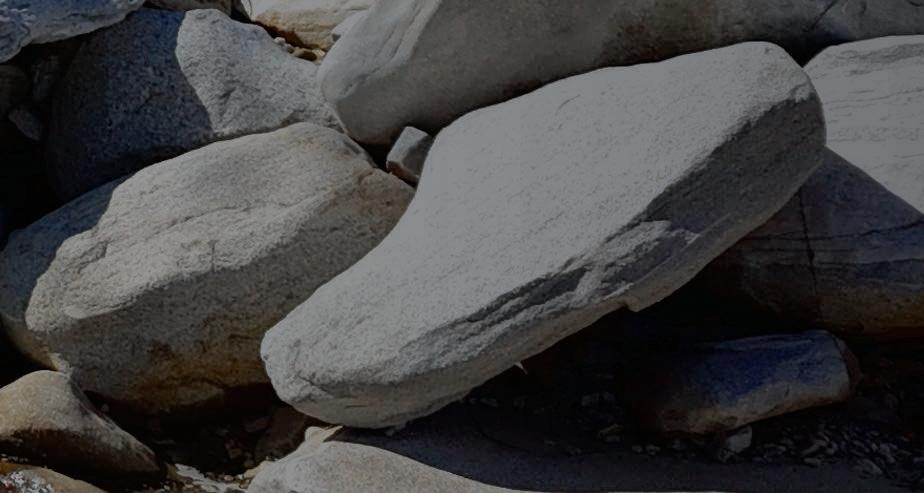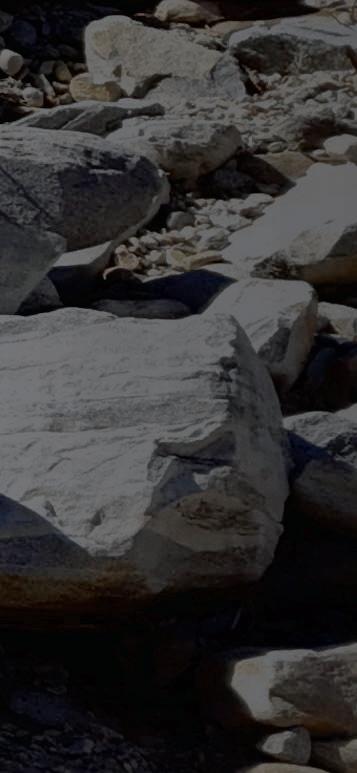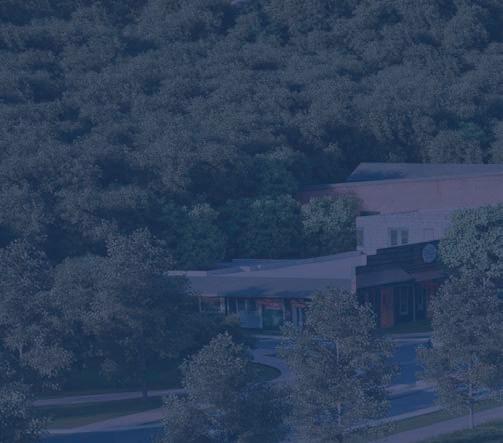
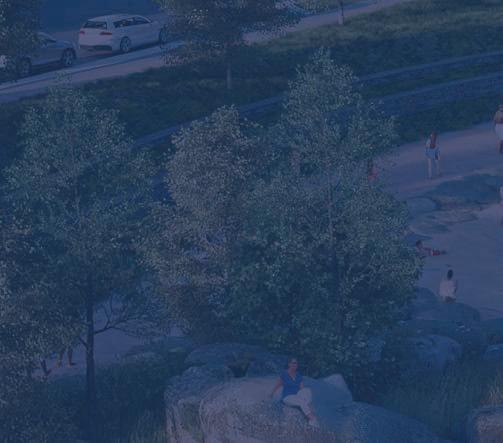
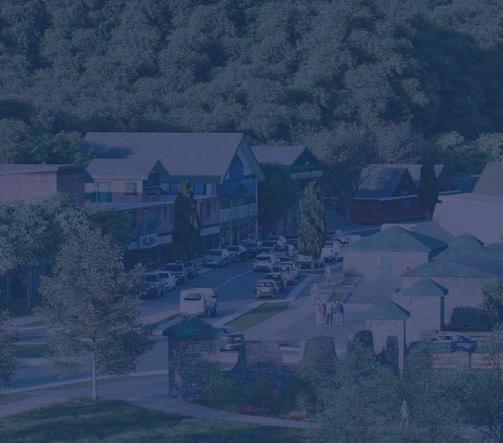
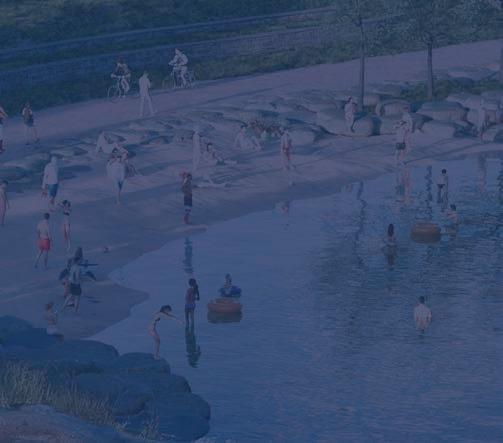

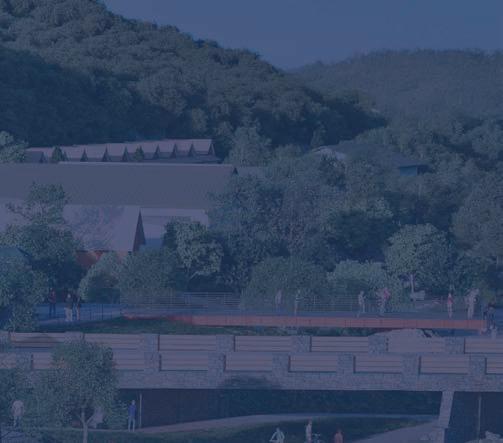



Produced For: Produced By: With Support From:
Chimney Rock Village and Rutherford County Tourism Development Authority

Recreation Engineering and Planning
Ridgewater Engineering










Produced For: Produced By: With Support From:
Chimney Rock Village and Rutherford County Tourism Development Authority

Recreation Engineering and Planning
Ridgewater Engineering
Village Council
Peter O’Leary - Mayor
Buck Meliski - Mayor Pro-tem
Patrick Warnke - Councilman
Bruce Godzik - Councilman
April Schick - Councilwoman
Planning Board
Barbara Meliski - Chair
Don Cason
Danny Holland
Jessie Callaway
Chimney Rock Village Task Force
Voting
Matt Banz - Business Owner
Jessie Callaway - Chimney Rock Village Planning Board, Business Owner
Don Cason - Director, Rutherford County TDA, Task Force Chair
Teresa Cauthren - Business Owner
Steve Gale - Business Owner
Ariel Haas - Business Owner
Sean McElhone - West District Superintendent, NC Division of Parks and Recreation
J. Meliski - Business Owner, Task Force Vice Chair
April Schick - Chimney Rock Village Council Member, Business Owner
Nick Sottile - Business Owner, Task Force Vice Chair
Emily Walker - Director, Chimney Rock Management, LLC
Village Administrator
Stephen Duncan
Brian Burch - Consultant Project Manager, HNTB/NCDOT
Drew Christy - North Carolina Governor’s Western Office
Steve Garrison - County Manager, Rutherford County
Alex Gotherman - Landscape Architect, Destination by Design
Ron Hancock - Senior Planner, Destination by Design
Mary Jaeger-Gale - Board Chair, Chimney Rock Management, LLC
Vic Knight - Landscape Architect, Knight Strategies
Chris Melton - Chief, Chimney Rock Village Fire Department
Nathan Moneyham - Division 13 Construction Engineer, NCDOT
Peter O’Leary - Mayor, Chimney Rock Village
Carol Pritchette - Mayor, Town of Lake Lure
Robin Ramsey - Regional Representative, Office of US Senator Thom Tillis
Len Sanderson - Advisor
Shane Zoccole - Director, Spokes of Hope


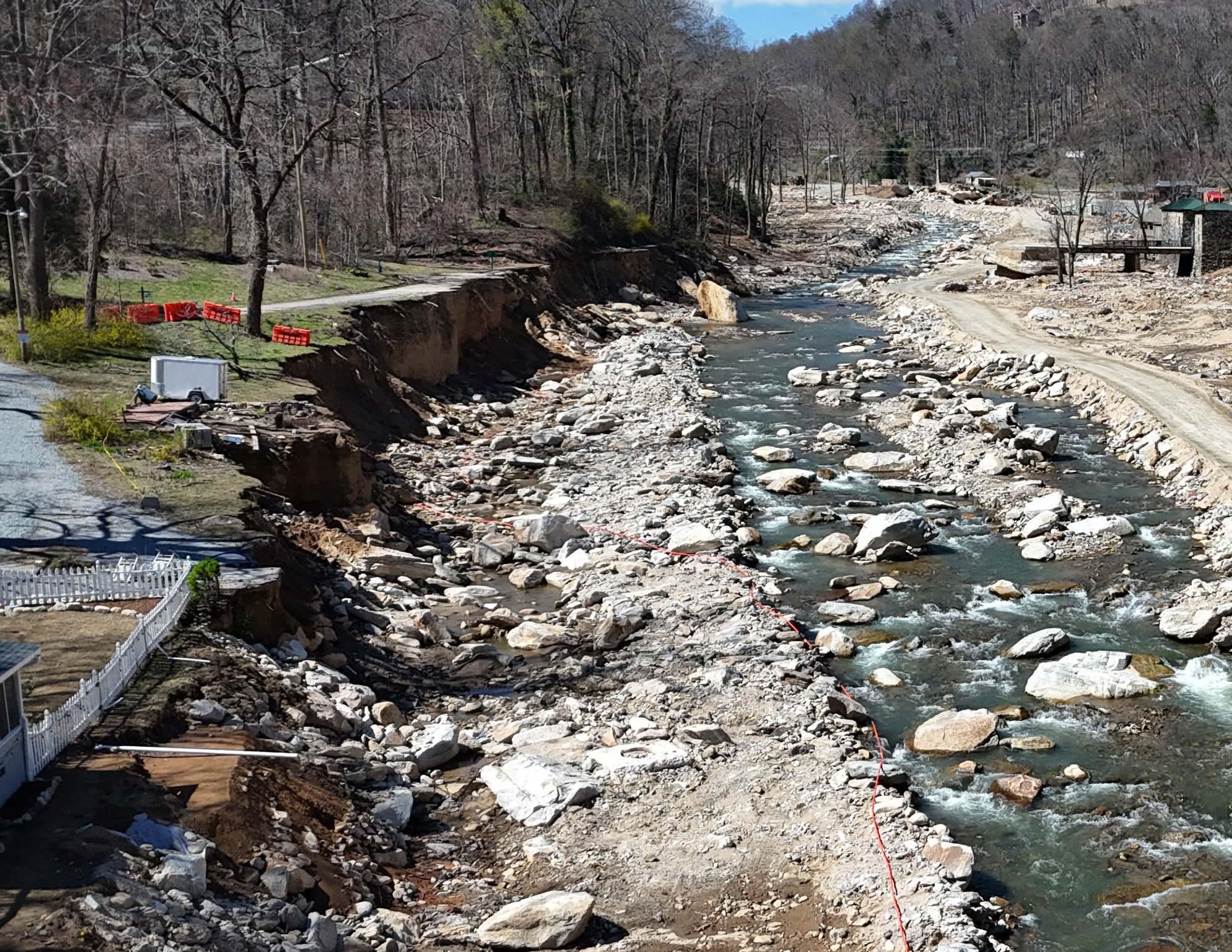
The Raise the Rock Recovery Action Plan serves as the primary guide for the long-term recovery and rehabilitation e orts in Chimney Rock, North Carolina following Hurricane Helene (2024). This chapter outlines the plan’s foundation and intent, providing an overview of its purpose, vision, goals, the planning process, and overall plan organization.
In this Chapter:
1.1 Project Background
1.2 Plan Purpose, Vision, and Goals
1.3 Planning Process
1.4 Plan Organization


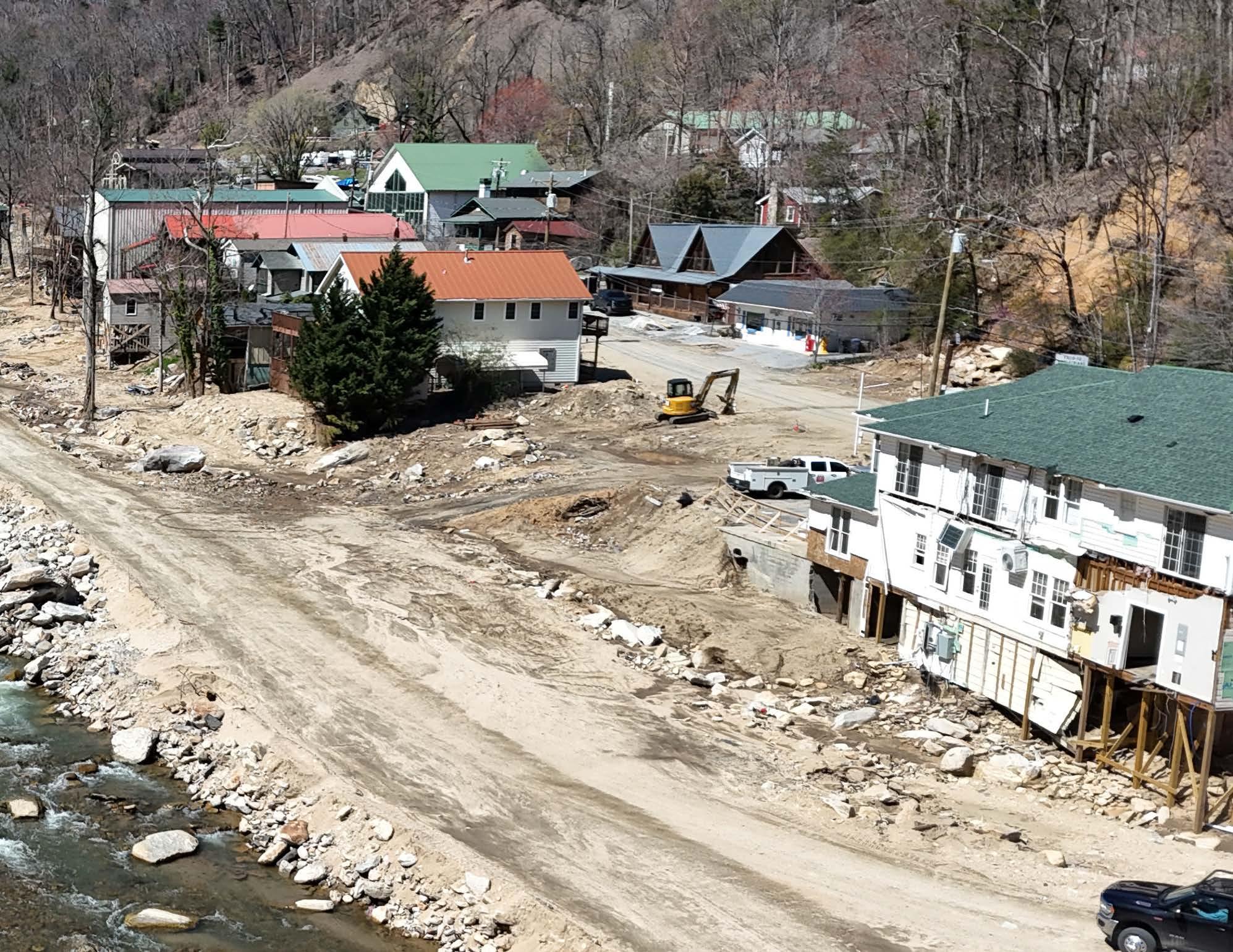
The Community of Chimney Rock Village
Chimney Rock Village, nestled in the scenic Blue Ridge Mountains of Western North Carolina in Rutherford County, is a beloved destination known for its natural beauty and small-town charm.
Covering roughly 3.5 square miles, the Village is situated at the gateway to the iconic Chimney Rock State Park. Its Main Street and downtown commercial district feature locally owned shops and restaurants with picturesque views of Hickory Nut Gorge and the Rocky Broad River. A popular destination among visitors and travelers from both the region and across the country, the Village thrives on a unique blend of outdoor recreation and a vibrant community culture.
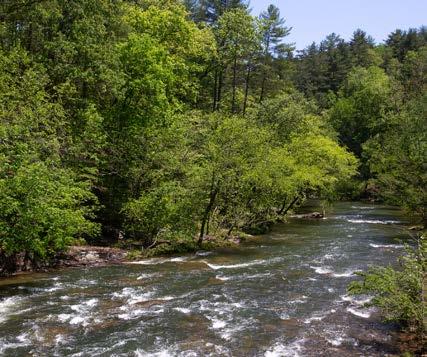
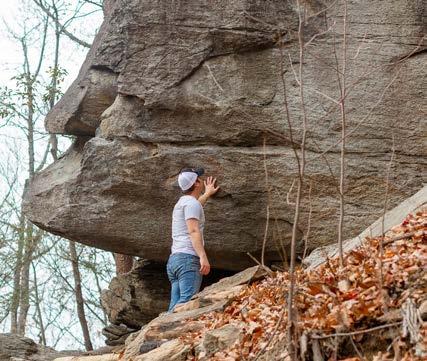
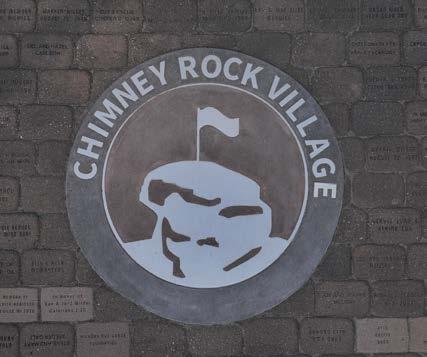
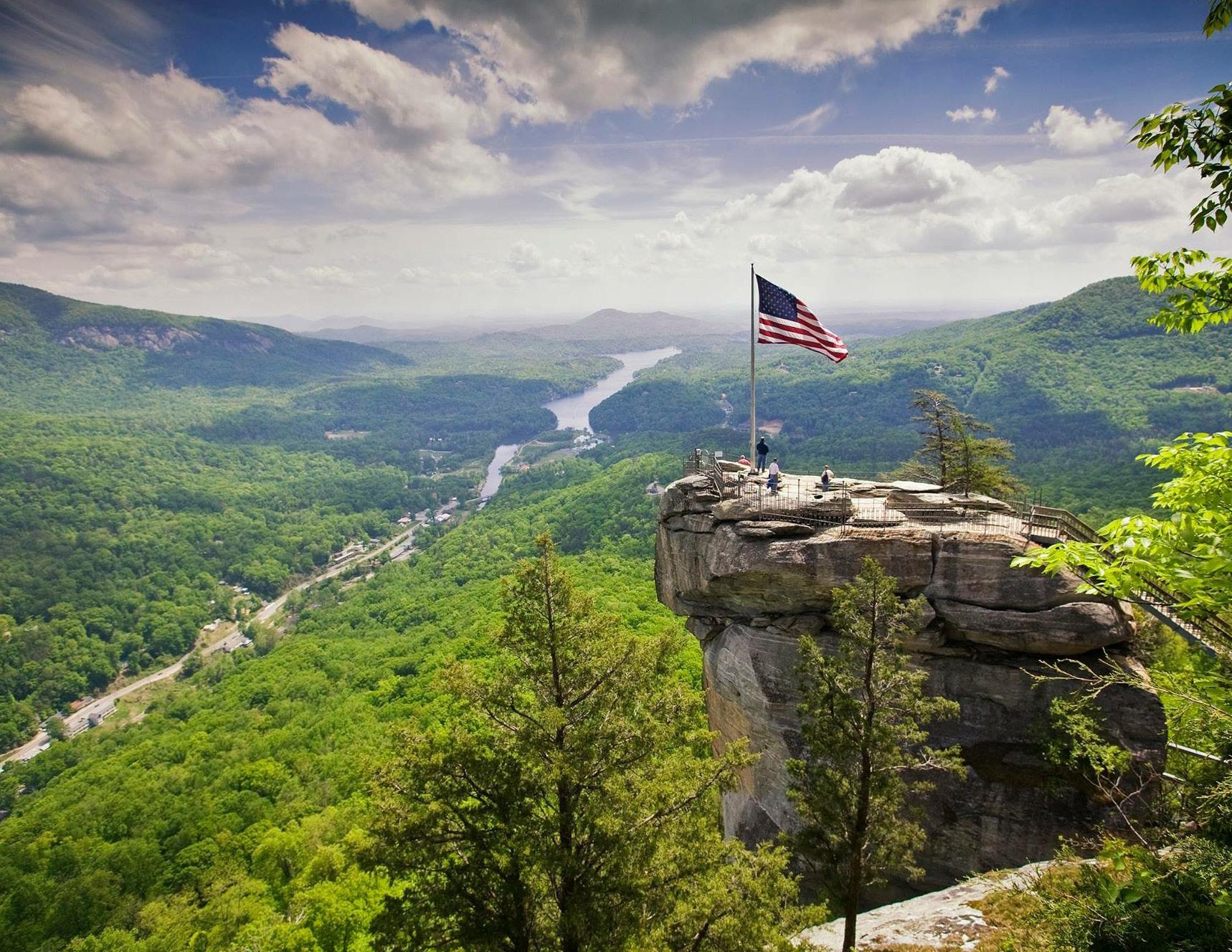
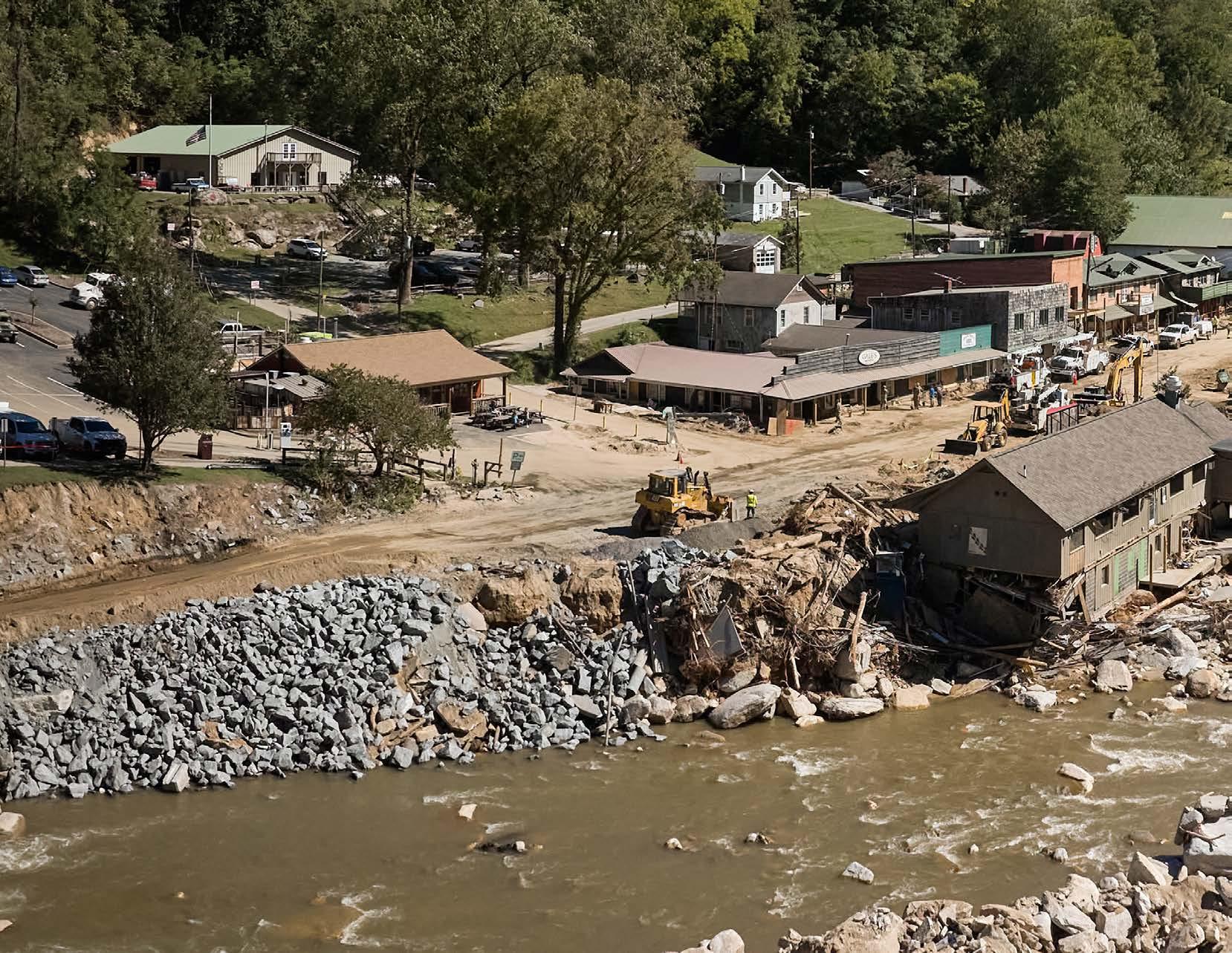
On September 26, 2024, Hurricane Helene made landfall on Florida’s Gulf Coast as a powerful Category 4 storm with sustained winds reaching 140 mph. By the following day the storm had reached Western North Carolina, where already-saturated ground gave way to catastrophic flooding. Over the course of three days some areas received more than 30 inches of rain, triggering historic flood levels and 1,000-year flood events across the region. Swollen rivers and streams surged to record highs, while landslides, debris flows, strong winds, and tornadoes added to the widespread destruction. Helene ultimately became one of the deadliest hurricanes of the 21st century, with more than 100 confirmed deaths in North Carolina.
Chimney Rock Village and the surrounding Hickory Nut Gorge were among the hardest-hit areas. The Rocky Broad River overflowed its banks with unprecedented force, destroying homes, businesses, roads, bridges, and public utilities. Landslides and debris flows devastated large sections of the Chimney Rock and Lake Lure area. Many bridges were swept away and entire communities were cut off. Tens of thousands of trees were brought down by high winds and unstable slopes and massive amounts of debris flowed into Lake Lure. Tragically, three lives were lost in the area, two due to falling trees and one from flooding. Emergency responders conducted numerous water rescues, and hundreds of structures were damaged or destroyed.

Under FEMA Major Disaster Declaration FEMA-4827-DR-NC, 27 counties were initially designated as eligible for federal assistance, with 12 more added on October 15. By May 2025, over 193,000 North Carolinians had registered for FEMA Individual Assistance in response to the storm’s devastation. As of mid-June 2025 in Rutherford County, there have been more than 14,000 registrations with the FEMA Individuals & Households Program and nearly 9,000 have received assistance. The scale of damage in Chimney Rock Village is almost unimaginable and has left a profound mark on the landscape, infrastructure, and community.
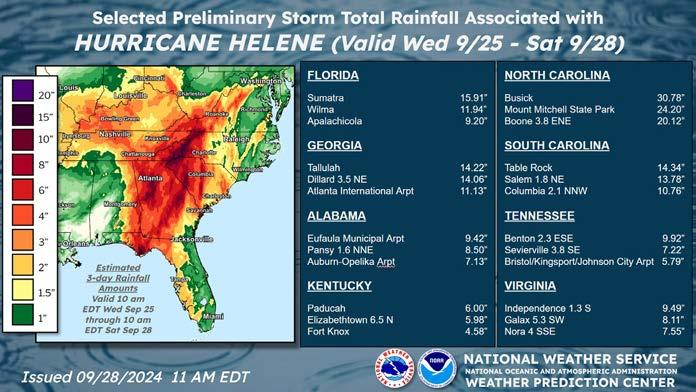
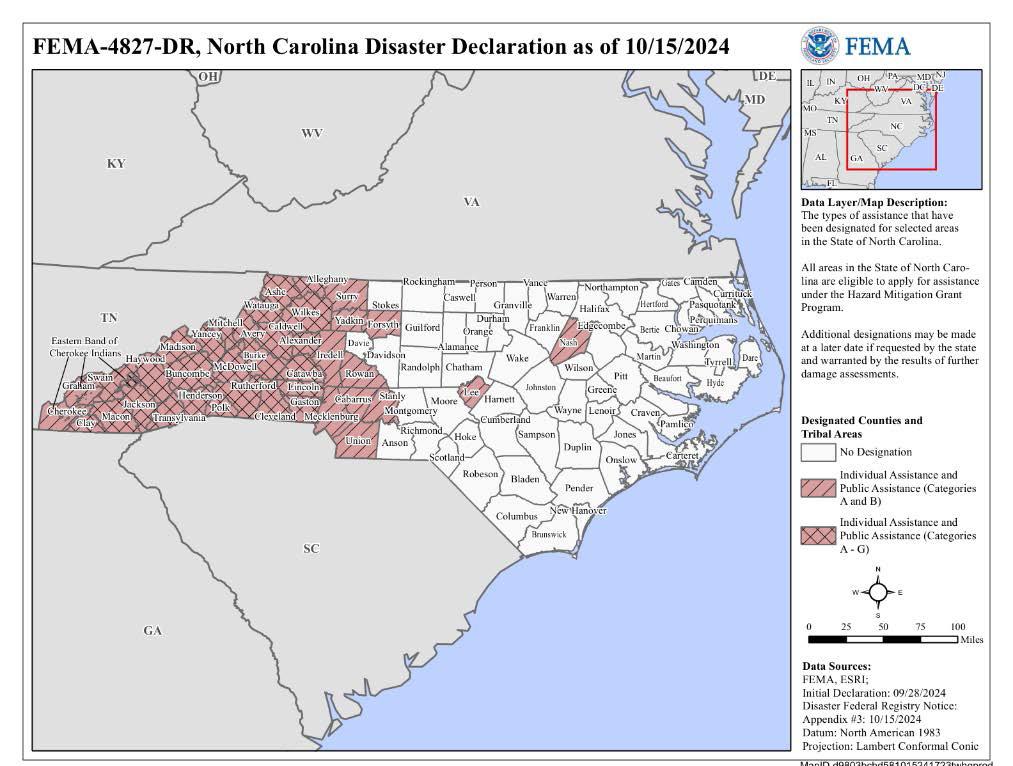
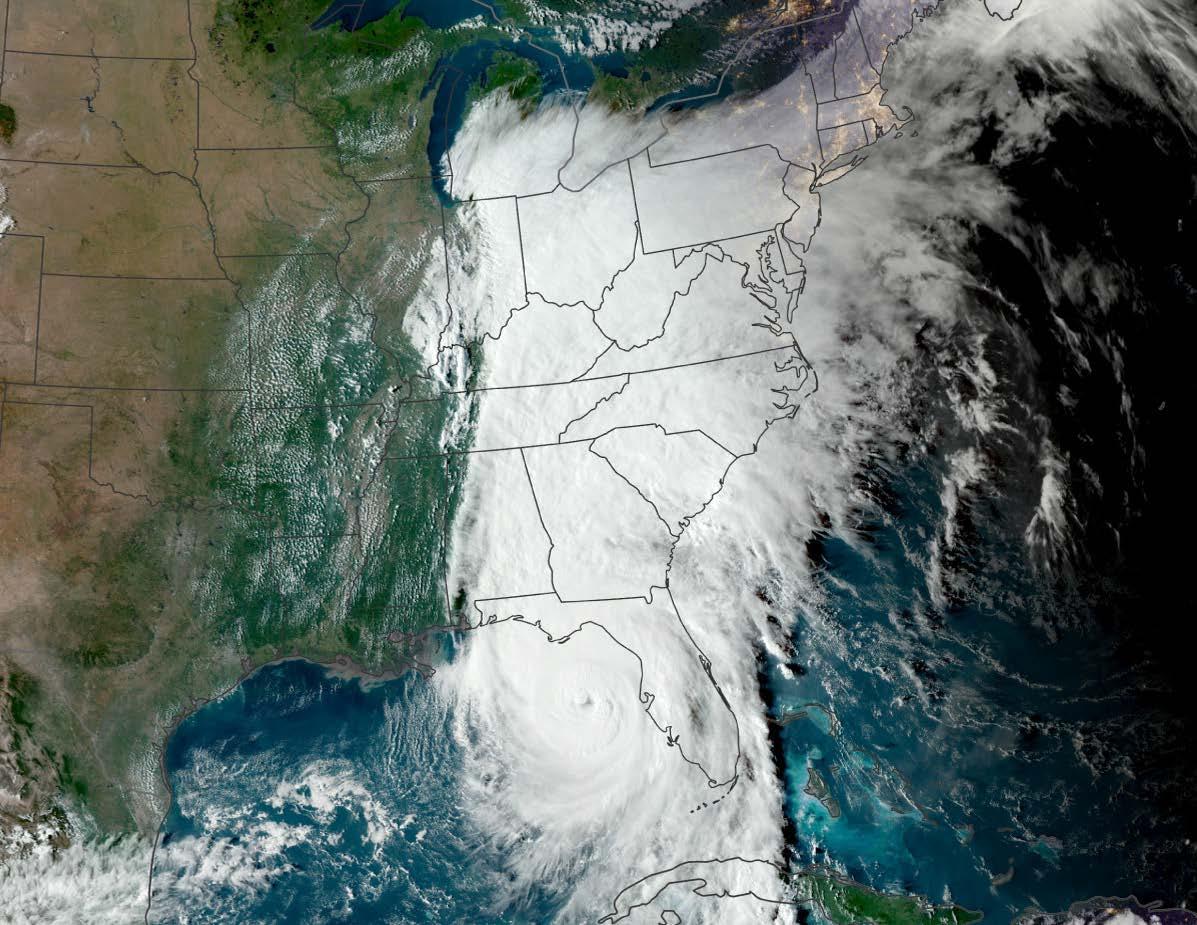


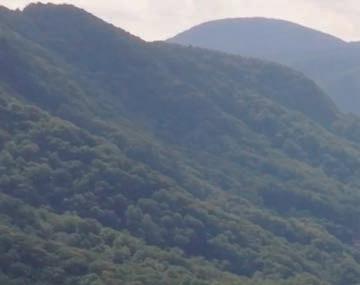
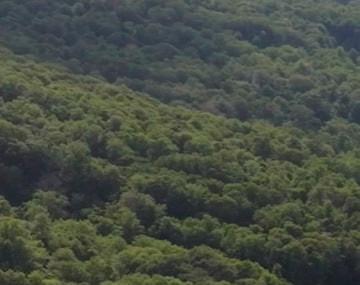


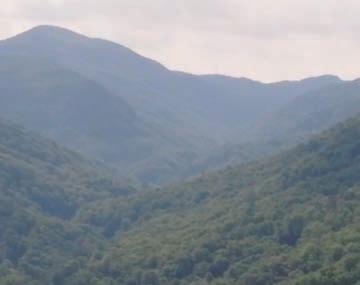

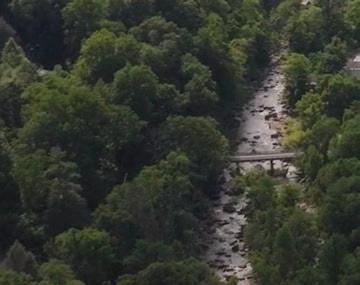


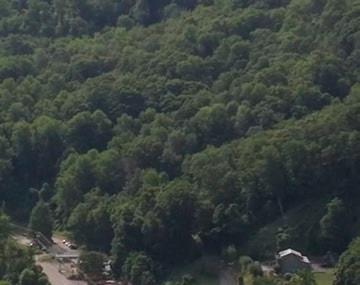
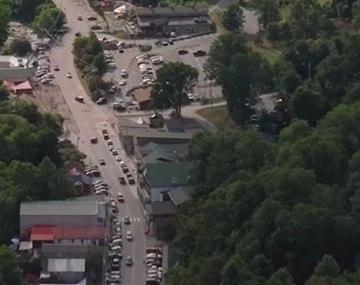


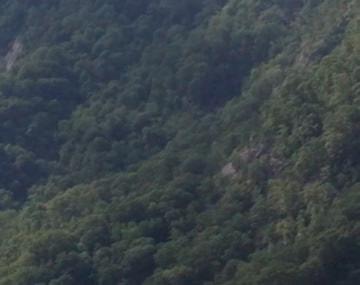
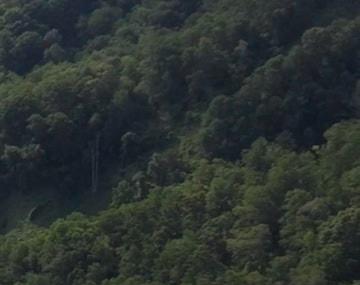

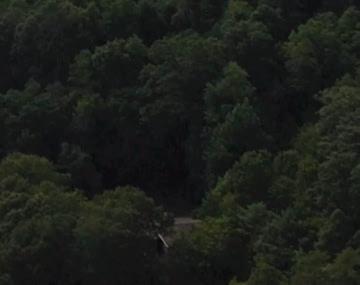







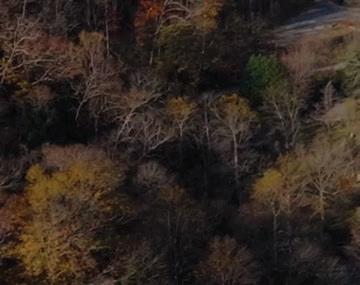
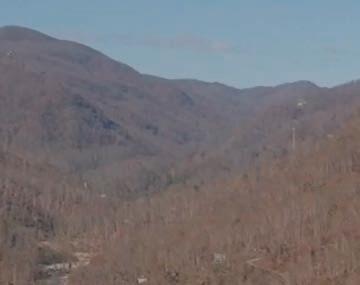
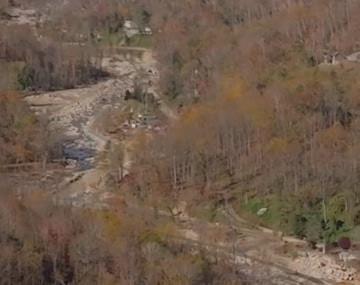
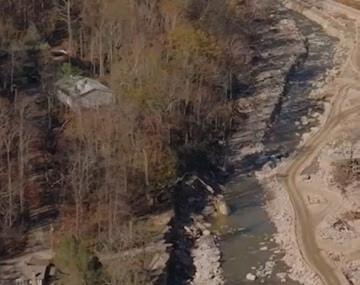

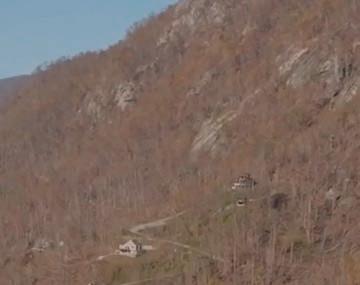


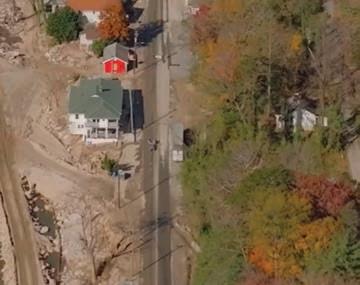

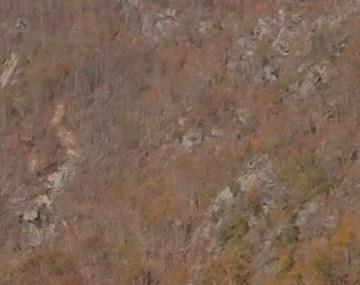


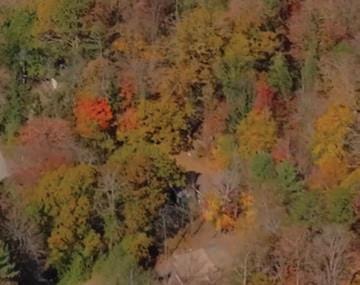





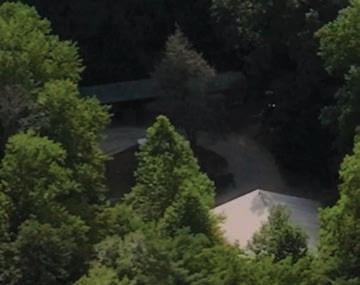
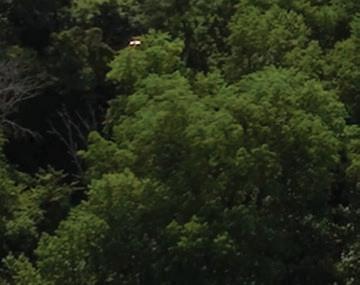
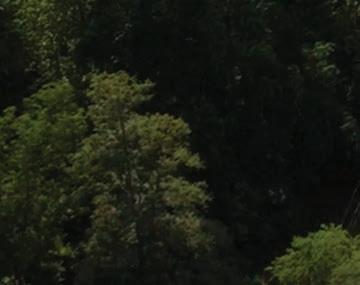
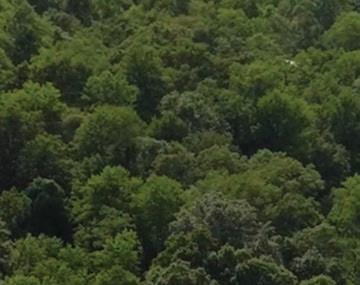
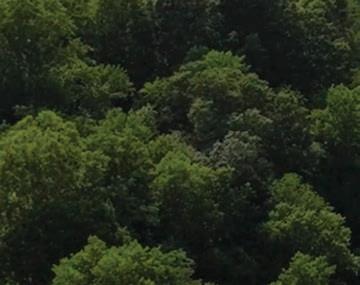


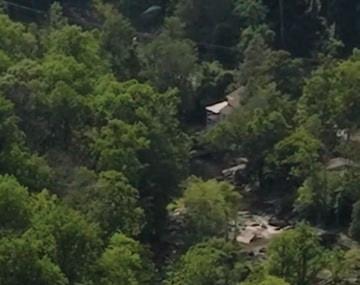
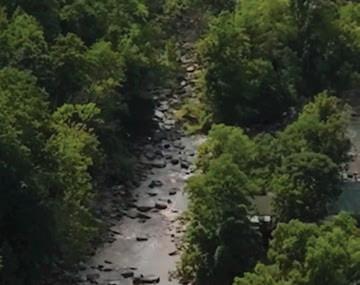

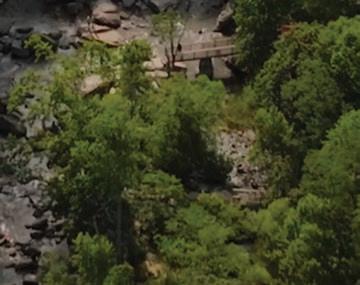


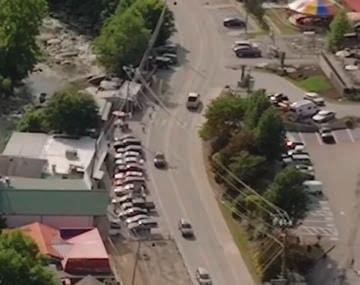
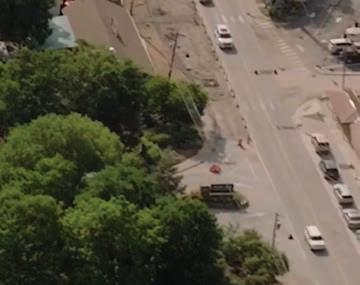
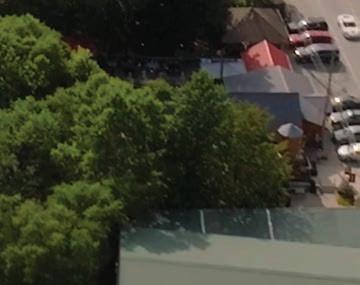


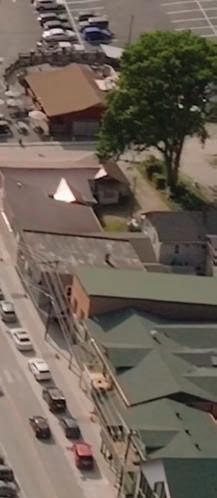
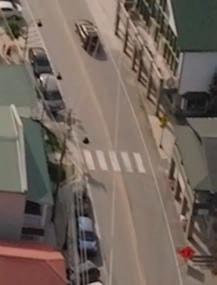
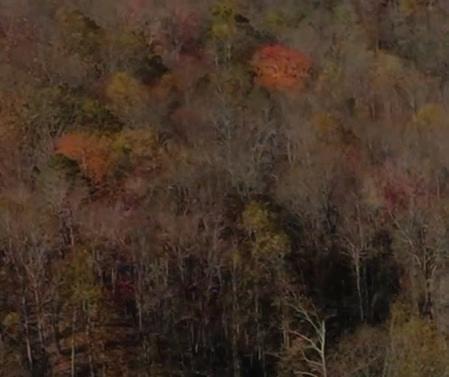

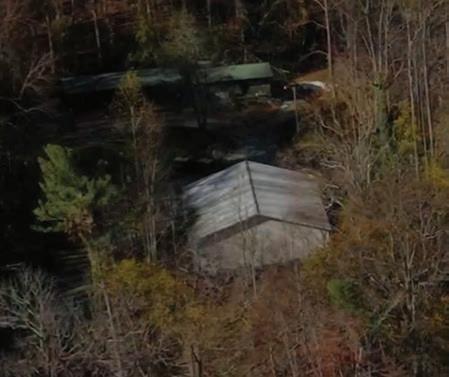

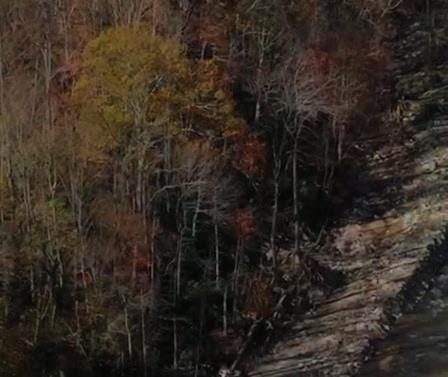
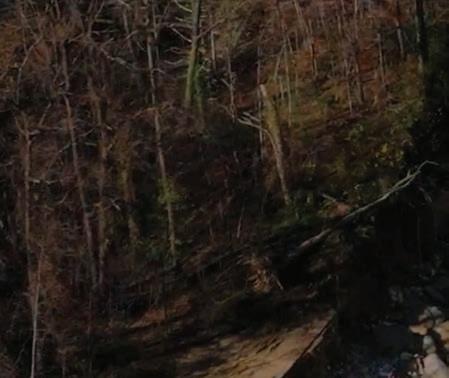



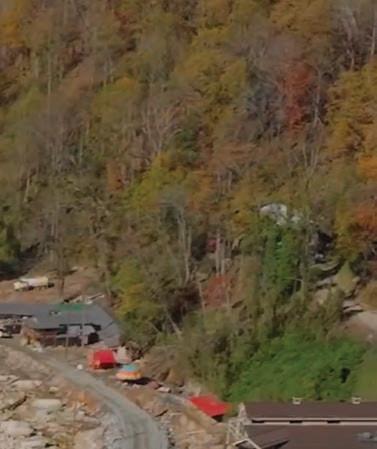
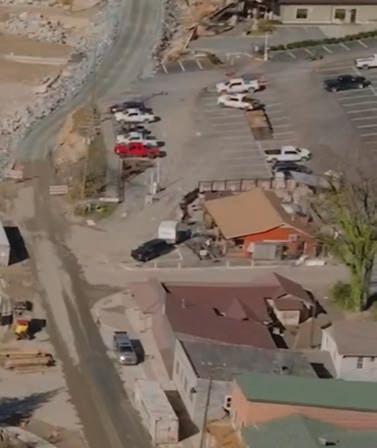
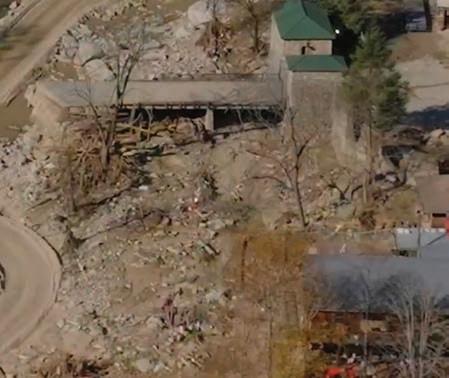



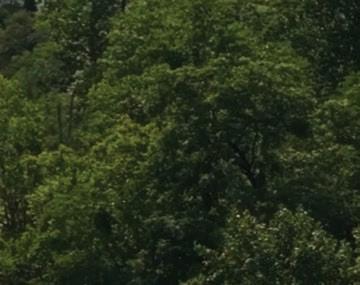
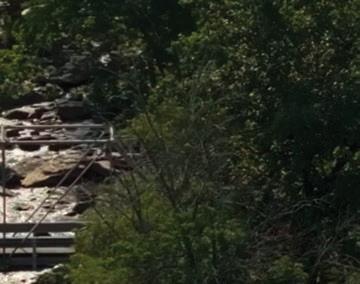

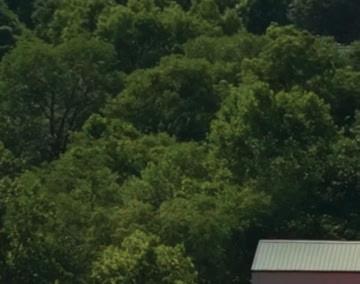
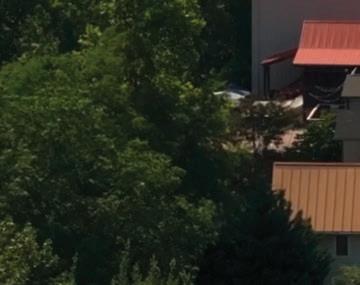


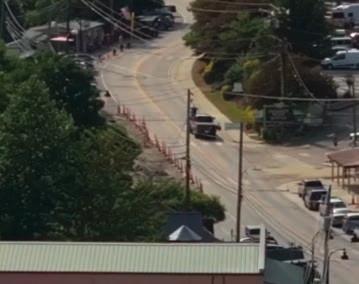
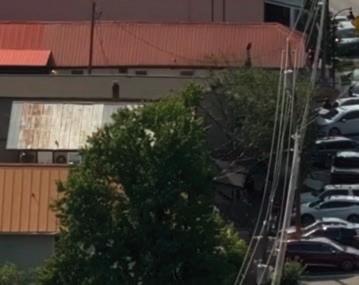
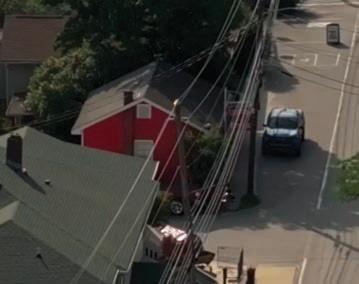
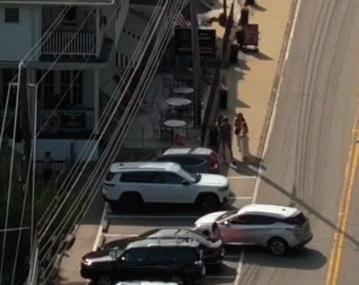


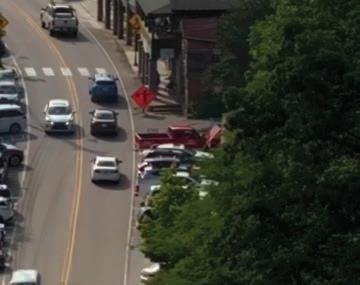






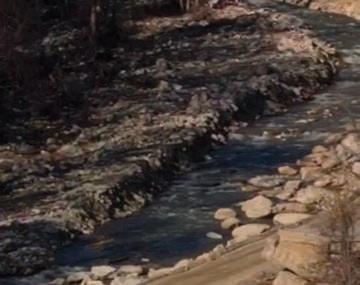
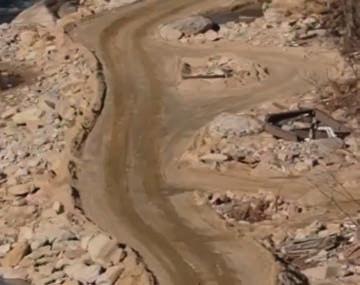
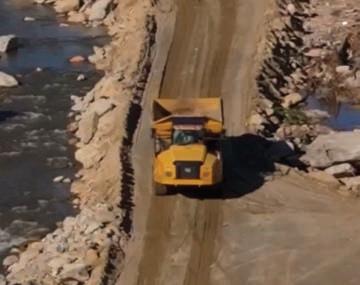
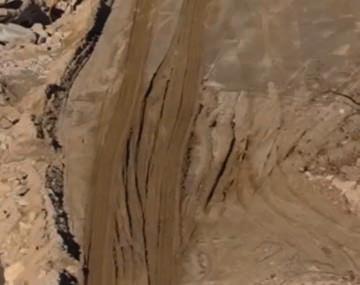

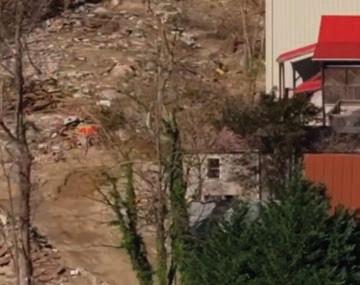


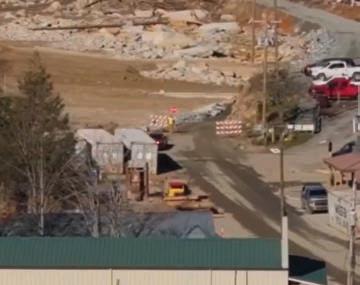

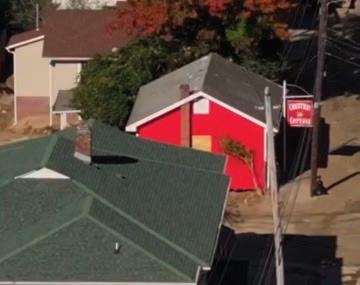
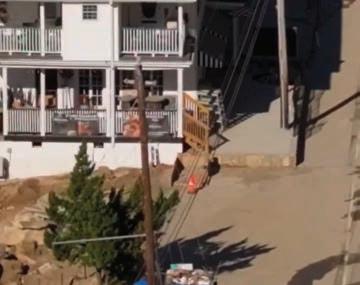



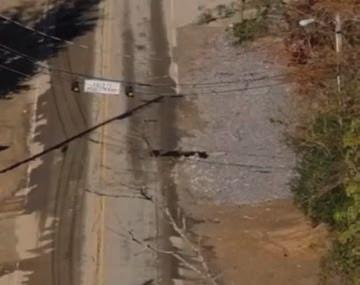
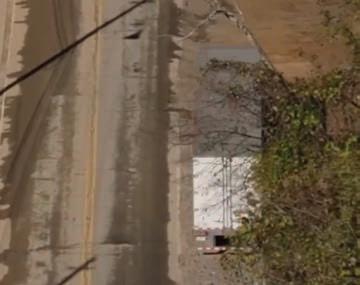



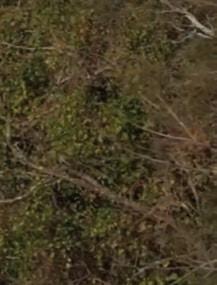
In the aftermath of the storm, residents, business owners, local leaders, and nonprofit organizations have come together to begin rebuilding. From this united effort, the Chimney Rock Village Task Force was formed to help lead the recovery.
The Task Force has brought together partners and resources to develop a plan to help restore the Village’s economy and identity as a premier Western North Carolina destination. These efforts have resulted in the Raise the Rock Recovery Action Plan. With careful planning, shared leadership, and a strong commitment to both preservation and progress, Chimney Rock Village is working toward a future that honors its heritage while ultimately embracing new opportunities to revitalize the Village as a thriving, resilient community that reflects the natural beauty and cultural richness of the region.
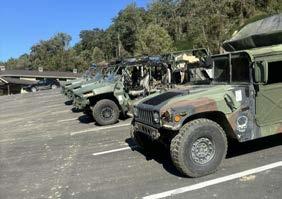

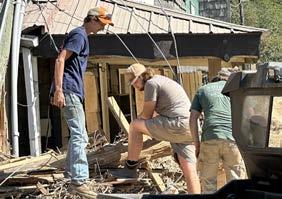

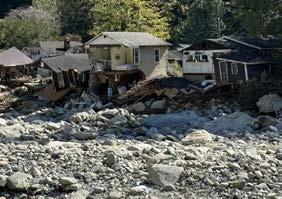
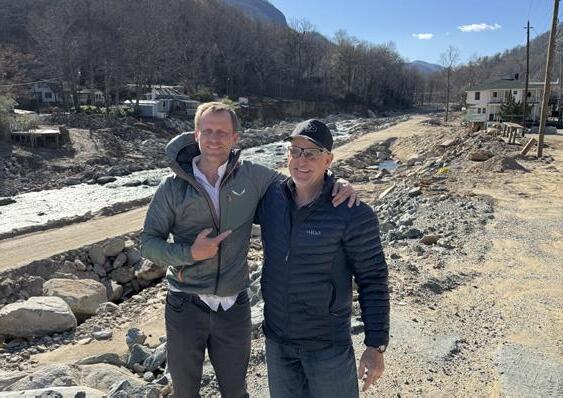
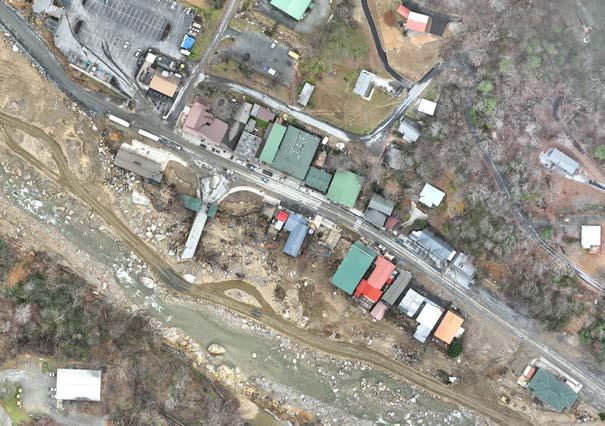
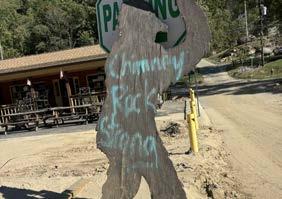




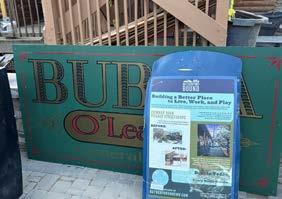

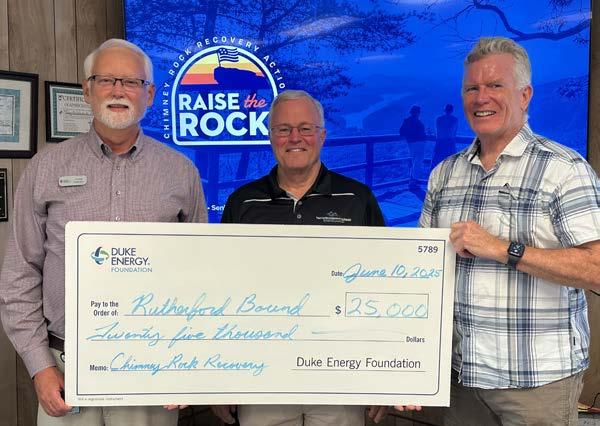


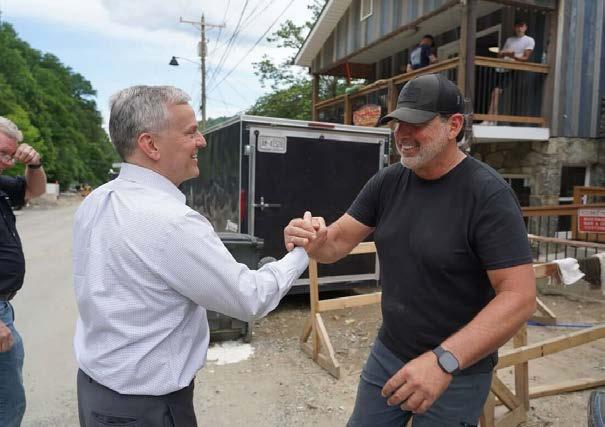


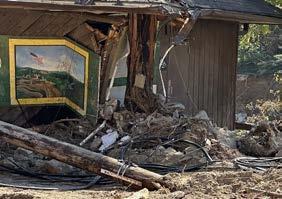
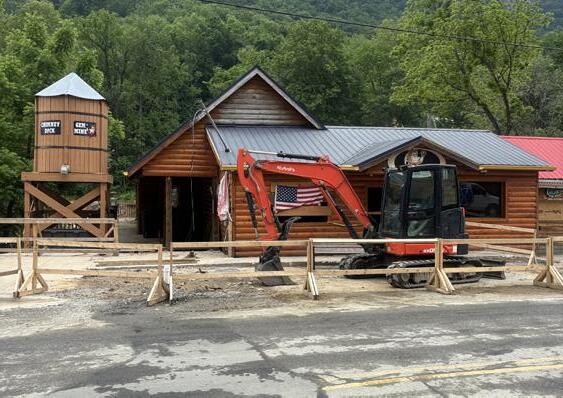
• September 26-28, 2024 –“The Event”
• October 10, 2024 – Initial Site Assessments by DbD
• October 17, 2024 – Design Charette
• October 30 – RFP advertised for Disaster Recovery Services
• December 3, 2024 – Task Force Organizational Meeting (Officer Elections)
• December 16, 2024 –Ridgewater Data Collection (Orthophotography)
• December 18, 2024 –Task Force Meeting
• November 19, 2024 – CRV Task Force established by Village Council
• November 25, 2024 –Contract with Rostan
• January 15, 2025 – Task Force Meeting
• January 24, 2025 – Task Force Meeting
• January 29, 2025 – Task Force Meeting
• January 29, 2025 – Bat Cave/Henderson County Collaboration Meeting
• February 4, 2025 – Village Council Update
• February 6, 2025 – UNCC School of Architecture Site Visit
• February 12, 2025 – Task Force Meeting
• February 19, 2025 – REP hired as subcontractor
• February 26, 2025 –NCDOT Public Involvement Meeting re. US64/74A Alternatives
• April 7, 2025 – HNTB/ NCDOT Coordination Meeting
• April 14, 2025 – Task Force Meeting
• April 15, 2025 – GROWNC Zoom Meeting
• June 2, 2025 – Village Council Update
• June 4, 2025 – Public Forum
• June 10, 2025 – Planning Board Update
• June 10, 2025 – UNCC School of Architecture Charette
• June 27, 2025 – Chimney Rock State Park soft reopening
• March 4, 2025 – Public Involvement Meeting
• March 10, 2025 – Task Force Meeting
• March 13, 2025 – UNCC / Interagency Recovery Coordination meeting
• March 15, 2025 –Ridgewater Data Collection (LIDAR)
• March 17, 20205 – REP Site and Situation Analysis
• March 18, 2025 – DbD Framework Presentation
• March 18, 2025 – Task Force Meeting
• March 25, 2025 – HNTB/ NCDOT Coordination Meeting
• May 1, 2025 – GROWNC Site Visit and Advisory Meeting
• May 6, 2025 – Task Force Meeting
• May 9, 2025 – NCDOT/ HNTB/USACE Zoom Meeting
• May 20, 2025 – American Whitewater Coordination Meeting
• May 30, 2025 – Security Checkpoint removed
• August 19, 2025 - Plan Adopted by Village Council
• July 7, 2025 – Planning Board and Village Council Plan Review
The Raise the Rock Recovery Action Plan is a focused effort to restore the historic charm and breathe new life into this remarkable rural community. This action plan focuses on rebuilding public infrastructure while creating a foundation for future private investment. Serving as a strategic roadmap, it will guide decision-makers and investors through long-term recovery and redevelopment efforts. Achieving this vision will require thoughtful planning, substantial investment, and a shared commitment to creating a stronger, more connected community for the future.
Disaster recovery is a complex, interconnected process composed of overlapping efforts that guide a community toward long-term renewal. Rather than occurring in isolated stages, recovery activities often unfold simultaneously with other response and rebuilding efforts. The Recovery Continuum model provided in the Homeland Security National Disaster Recovery Framework (NDRF) illustrates how these phases are interrelated, with early decisions playing a critical role in shaping long-term outcomes. (Figure below) Effective long-term recovery requires sustained collaboration among agencies, organizations, and the community to ensure that actions are aligned and adaptable over time. Recovery is not just about restoring what was lost, it’s about creating a better future.
The Raise the Rock Recovery Action Plan emphasizes the identification, prioritization, and implementation of long-term recovery projects as a main component of the recovery framework. True to its name, the plan is focused on action and meaningful progress. It proposes strategies and designs that are both ambitious and achievable but will require ongoing dedication and collective effort to become reality. The plan is meant to be a bold step forward to a promising future based on a shared and compelling vision.
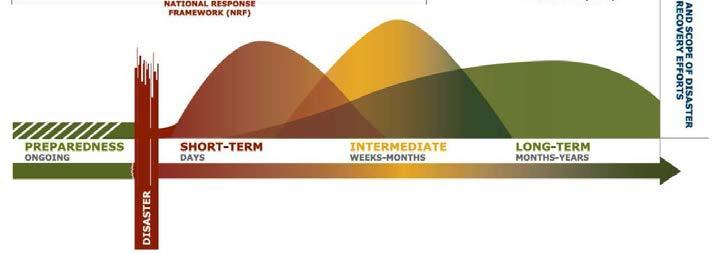
The National Disaster Recovery Framework (NDRF) presents recovery as a continuum, not a step-by-step process, where planning, coordination, and community resilience happens across several phases of disaster management. It advocates a holistic approach to restoring and improving communities after disasters.
To restore and revitalize Chimney Rock Village into a vibrant, thriving community that honors its unique history and celebrates its rich cultural and natural resources. Through strategic planning and thoughtful design, we aim to RAISE THE ROCK, positioning the Village to attract a new generation of investors, businesses, and visitors. By striking a careful balance between preservation and progress, we will create a sustainable future that fosters long-term recovery, growth, and a prosperous environment for generations to come.
The Raise the Rock Recovery Action Plan embodies a bold and unified vision for Chimney Rock’s recovery and future growth and is shaped through months of collaboration led by the dedicated e orts of the Chimney Rock Village Task Force. At the heart of this vision is a commitment to restoring and strengthening the Village through targeted investments in capital infrastructure, particularly projects that respond directly to the community’s recovery needs while unlocking long-term opportunities. Central to this e ort is the development and promotion of Chimney Rock’s outdoor recreation assets and the revitalization of its downtown district, both of which are essential to restoring economic vitality, attracting visitors, and enhancing quality of life for residents. With these priorities in mind, the Plan sets forth three primary goals that serve as the foundation for coordinated action and sustained momentum. Each goal is designed to build on the unique strengths of the Village, support disaster recovery, and ensure Chimney Rock is well-positioned to thrive as a destination for adventure, recreation, and community connection. The three primary goals include:
•COMMUNITY RESILIENCE
•EFFICIENT AND EFFECTIVE RECOVERY
•ECONOMIC AND ENVIRONMENTAL SUSTAINABILITY
Develop strategies that strengthen the community's ability to withstand and recover from future disasters. This includes rebuilding infrastructure in appropriate locations, incorporating sustainable design practices, and ensuring access to critical resources during emergencies.
Establish clear, actionable steps to ensure a swift and coordinated recovery process. Focus on restoring essential services, housing, and infrastructure while minimizing disruptions to daily life. Build partnerships with local organizations, businesses, and state and federal agencies to streamline recovery operations and obtain the necessary resources and support.
ECONOMIC AND ENVIRONMENTAL SUSTAINABILITY
Integrate strategies that promote long-term economic recovery while preserving and restoring Chimney Rock’s natural environment. Develop compelling public projects and encourage private investment to implement a bold vision.
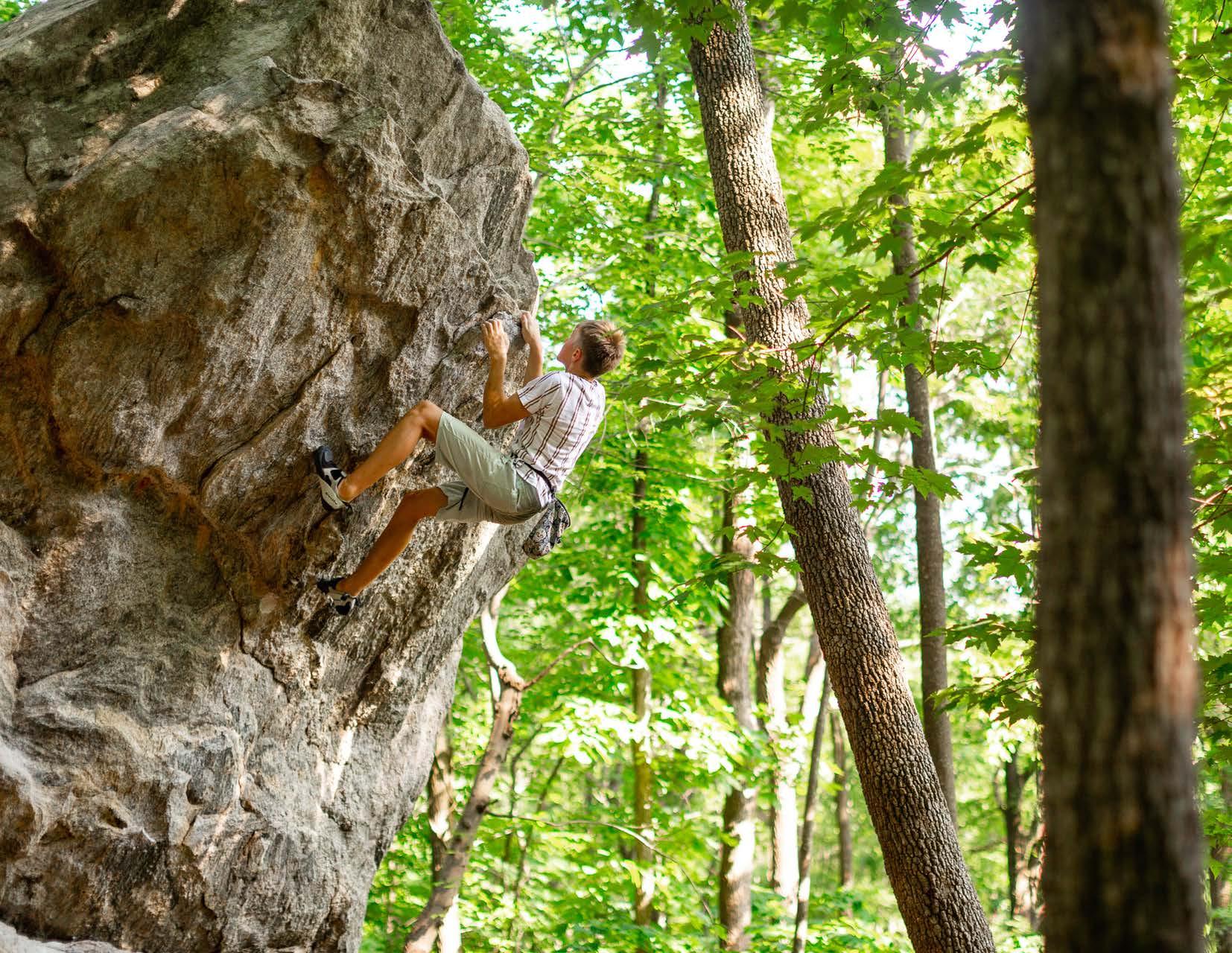
The Raise the Rock Recovery Action Plan represents the culmination of several months of analysis, planning, design work, site visits, and Task Force meetings. The planning process involved four major phases, including:
• Project Coordination and Direction Setting
• Discovery and Analysis
• Preliminary Plan Development
• Final Plan Development and Adoption

Project Coordination and Direction Setting January 2025 - July 2025
Facilitated ongoing collaboration with the Chimney Rock Village Task Force to identify key redevelopment opportunities and establish a clear project direction. Developed a dedicated project website with a distinct brand and launched an online community survey to encourage public engagement and gather critical insights to inform the planning process.

January 2025 - March 2025
Conducted a comprehensive analysis of existing conditions in the Village to identify storm impacts, opportunities, and constraints. Analyzed community survey results and organized interviews with key stakeholders to gather valuable perspectives and innovative ideas that shaped the plan's development.

February 2025 - April 2025
Utilized input from the Task Force, stakeholders, and community members to craft a preliminary plan framework and plan alternatives. This framework outlined recommendations for longterm, resilience-minded recovery e orts and provided strategic guidance for revitalization throughout the Village.

May 2025 - August 2025
Conducted a public forum to present key findings and all planning recommendations for community feedback. Developed the Raise the Rock Recovery Action Plan, incorporating agreed-upon recommendations, prioritized implementation strategies, and an outline of potential funding sources. Facilitated final reviews to ensure the plan meets the community’s needs.
The Raise the Rock Recovery Action Plan is organized into five (5) major chapters as outlined below.
• Background and Purpose
• Discovery and Analysis
• Public Engagement and Emerging Themes
• Plan Recommendations
• Plan Implementation

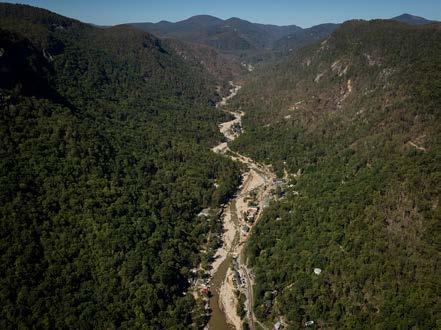
The current chapter, which outlines the plan’s background, purpose, vision, goals, process, and organization.
A snapshot of the regional setting, demographic trends, tourism market opportunities, and comparable planning efforts are presented here. The chapter also includes an inventory and analysis of the storm impacts within the Chimney Rock Village area.

This chapter discusses tools used for public engagement, highlights stakeholders and organizations involved in the planning process, and presents key results from an online survey designed to obtain ideas from the community regarding the outdoor economy and redevelopment priorities for the Village. The chapter culminates with emerging themes that guide plan recommendations.










This chapter is organized according to three (3) Types of Recovery Projects as identified during the planning process: 1) Public Capital Improvement Projects, 2) Village-Owned Commercial Infill Projects, and 3) Private Commercial Infill Projects. This chapter is supported by the extensive use of custom illustrations and design schematics.
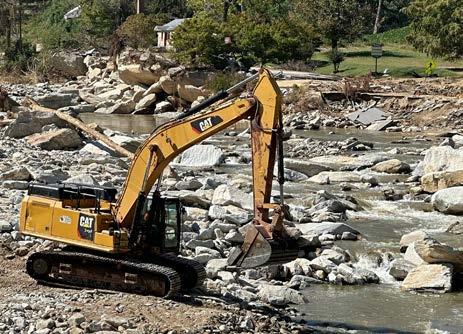
This chapter provides a comprehensive matrix of project recommendations, prioritization, implementation strategies, and an outline of funding sources.







This chapter examines the regional context of Chimney Rock Village, focusing on demographics, outdoor recreation trends, and the tourism economy. It draws on similar experiences and disaster recovery plans from other communities to inform the local recovery strategy. This section also provides an overview of the regional impacts of Hurricane Helene, with a focus on western Rutherford County. It highlights the e ects su ered by public infrastructure, housing, and the local economy, especially within the context of the region’s tourism industry.



In this Chapter:
2.1 Regional Context
2.2 Demographics and Market Demand
2.3 Insights from Other Communities
2.4 Damage Assessment

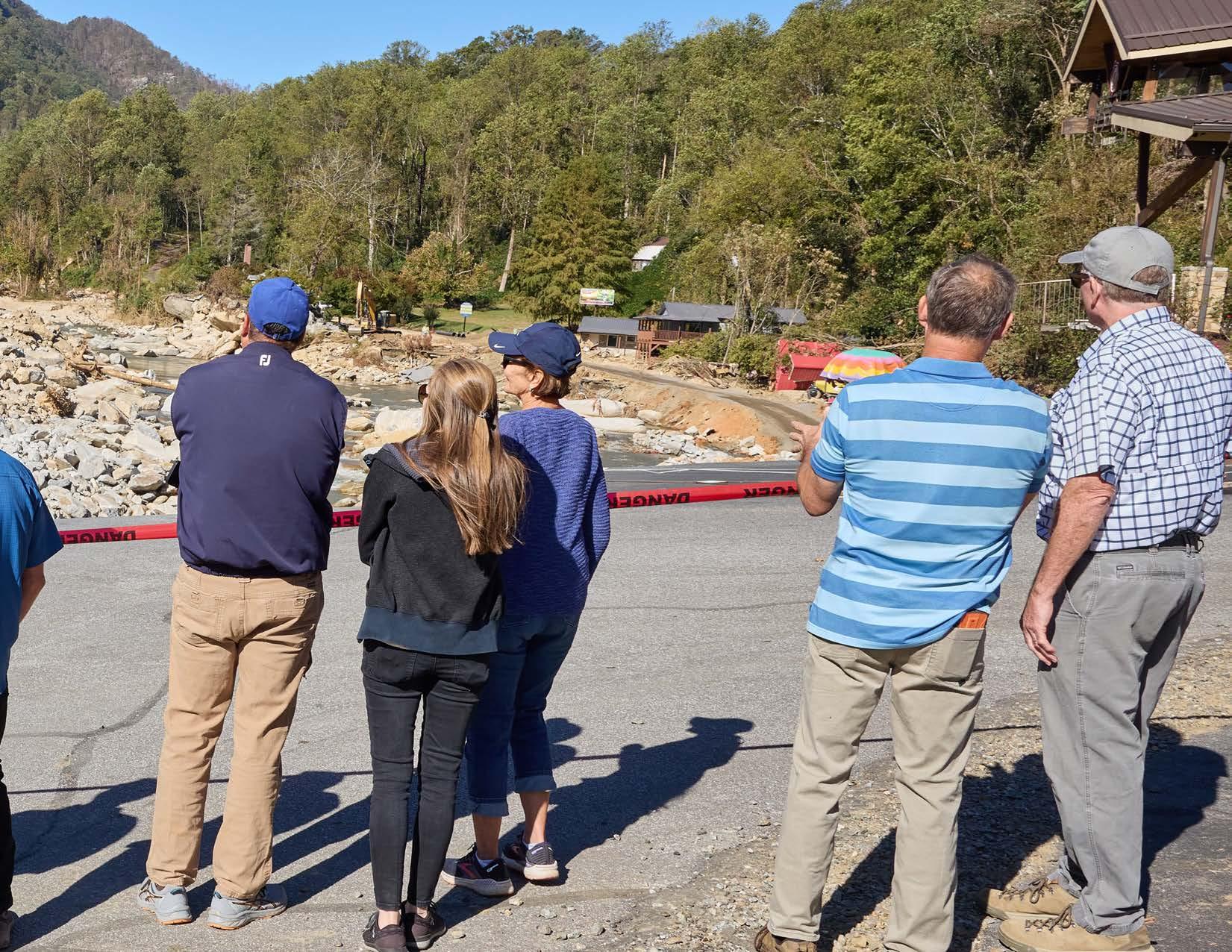
Chimney Rock Village is nestled in the heart of Western North Carolina, a region renowned for its tremendous mountain landscapes, rich biodiversity, and strong cultural heritage. Located in Rutherford County, the Village serves as a central gateway for visitors to the Hickory Nut Gorge. This striking gorge features unparalleled geology and rock outcrops carved by the Rocky Broad River and framed by steep cliffs and forested slopes. Just southeast of Asheville and within easy reach of Charlotte and Greenville, Chimney Rock occupies a strategic location along U.S. Highway 64/74A and draws visitors from across the Southeast and the nation.
This setting in the Blue Ridge Mountains offers stunning scenic views, world-class outdoor recreation, and access to popular destinations such as Chimney Rock State Park and Lake Lure. Western North Carolina has a long tradition of tourism, craftsmanship, and community-based economies, all shaped by its Southern Appalachian roots and small-town charm. Chimney Rock Village reflects these regional characteristics with its walkable Main Street, locally owned businesses, and strong ties to nature and history. As both a gateway and a destination, the Village plays a meaningful role in the larger regional identity. It is anchored by an undeniable sense of place and the community provides a vital link between natural beauty, heritage, and economic opportunity.























































































































The steep topography along the Eastern Continental Divide and the Blue Ridge Escarpment, combined with unprecedented rainfall, greatly intensified the devastating impacts of Hurricane Helene. Two watershed basins, encompassing a combined area of approximately 43,515 acres (68 square miles) from parts of Rutherford, Henderson, and Buncombe Counties, drain into Chimney Rock Village. These basins include the Hickory Creek and Headwaters drainages, two watershed units that serve as the source of the Rocky Broad River and integral parts of the larger Upper Broad River basin. The dynamic Rocky Broad flows through steep mountain terrain,
collecting runo from numerous tributaries before converging in the unique landscape of the Hickory Nut Gorge. As the river descends through the Gorge and into Chimney Rock Village it shapes the area’s distinct topography and ecological character. The river plays a vital role in the environmental health and appeal of the area and provides major recreational opportunities. The mountainous terrain and narrow valleys make the basins both beautiful and hydrologically complex, which contribute to its vulnerability during major storm events and reinforces the importance of appropriate environmental stewardship and planning.
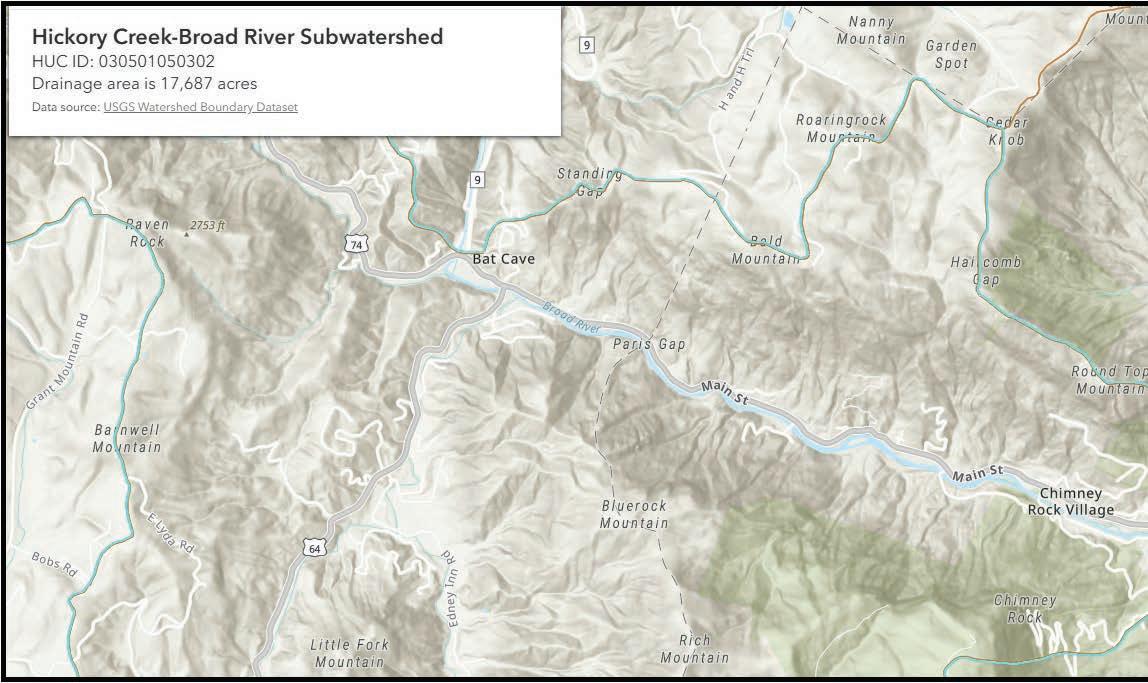

In the aftermath of Hurricane Helene, Western North Carolina continues to face pressing challenges with housing, infrastructure, utilities, agriculture, and debris removal. Chimney Rock Village, like many communities in the region, remains deeply affected and is struggling to recover on multiple fronts. Timely assistance from state and federal agencies will be essential to the region’s recovery.
In response to the disaster, the U.S. Department of Housing and Urban Development (HUD) has allocated $1.43 billion to support North Carolina’s long-term recovery. At least 80% of these funds must be directed toward HUD-Identified Most Impacted and Distressed (MID) areas, with a focus on three key priorities:
• Housing
• Infrastructure
• Economic Revitalization
Rutherford County is one of 12 counties designated as a HUD-MID area in North Carolina. Key impacts in the county to individuals and private property include:
• 29,550 low- to moderate-income residents affected
• 827 housing units received assistance
• 119 private roads and bridges require repair or replacement
Statewide, initial estimates place economic losses from Hurricane Helene at over $50 billion. Approximately 90% of the damage falls within five main sectors:
• Economy
• Housing
• Utilities and Natural Resources
• Transportation
• Agriculture
In Chimney Rock Village, the storm’s impact on the local economy was severe:
• 100% of the Village’s 45 businesses were affected; and
• 15 businesses were completely destroyed
Recognizing the Village’s reliance on tourism and the health of its small businesses, it is essential that recovery efforts be both strategic and well-coordinated to effectively support these sectors. The recovery initiatives identified in the Raise the Rock Recovery Action Plan will be instrumental in rebuilding the community, stimulating economic revitalization, and supporting long-term success.
This section provides an overview of population, income, and employment trends in Chimney Rock Village, based on data from the U.S. Census Bureau and the Bureau of Labor Statistics. It also highlights broader trends in the national outdoor recreation economy and highlights the tourism market potential for Chimney Rock Village and the surrounding region.
Population
According to the 2023 American Community Survey (ACS):
•Rutherford County has a total population of 64,327.
•Chimney Rock Village is home to 131 esidents and includes 75 households
•The Village is located within the Township of Chimney Rock which has a combined population of 2,957 and which also includes Chimney Rock State Park and Lake Lure.
Employment Snapshot:
•61% of the population is of working age (18–64).
•The Village supported 45 businesses and a total of 212 employees prior to the storm. $64,177
According to the U.S. Bureau of Economic Analysis, the outdoor recreation economy contributed over $563 billion to the national GDP, in 2022. The 2022 Outdoor Participation Trends Report from the Outdoor Foundation shows that 164.2 million Americans (54% of the U.S. population ages 6 and older) participated in outdoor recreation at least once that year.
Since March 2020, participation in outdoor activities has grown by 26%, driven by both new and returning outdoor enthusiasts.
The most popular outdoor activities include:
• Running and jogging
• Hiking
• Fishing
• Biking
• Camping
This steady growth reflects a sustained national demand for outdoor experiences and recreation-based destinations.
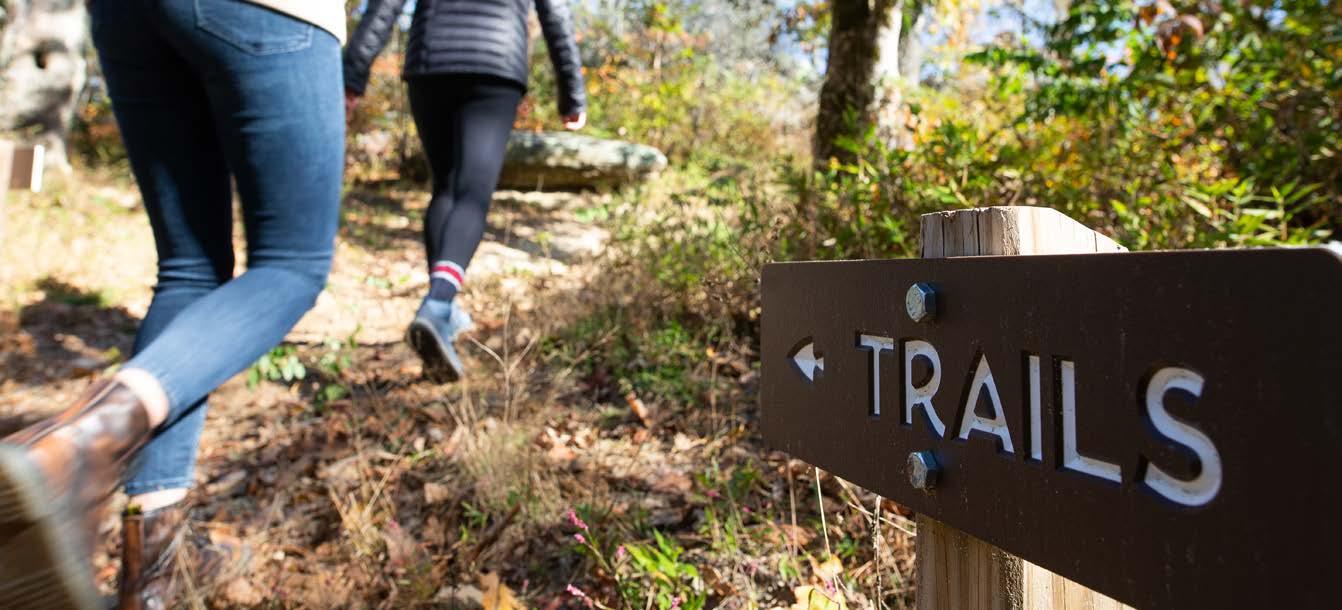
Chimney Rock Village has long been a popular tourist destination, thanks to its scenic mountain setting and small-town charm. A 2012 market study conducted by Arnett Muldrow for Lake Lure and Chimney Rock Village revealed that, over just two months (August and October), local businesses welcomed visitors from more than 1,000 U.S. zip codes, spanning 43 states and 19 foreign countries. During that same period, only about 11% of customer spending came from local residents, clearly showing that tourism is the main driver of the local economy.
To meet this demand, the village depends heavily on businesses that offer dining, retail, and visitor services.
Traffic data further highlights Chimney Rock's role as a tourism hub. According to the North Carolina Department of Transportation, the Annual Average Daily Traffic (AADT) in 2023 on US Highway
64/74A (just west of Boys Camp Road) was 4,600 vehicles. AADT is calculated by dividing the total yearly traffic by 365 days, indicating that roughly 1.68 million vehicles traveled this route in 2023. While traffic varies by season and day of the week, this number reflects the consistently high volume of visitors passing through this small mountain community.
Tourism trends across the state support this local activity. In 2021, North Carolina’s state parks and recreation areas recorded a record-breaking 22.8 million visitors across 41 sites. That same year, Chimney Rock State Park experienced a 34% increase in visitation, with over 400,000 guests. With the park entrance located directly on Main Street, Chimney Rock Village is uniquely positioned to grow its economy by investing in tourism-related infrastructure and amenities.
A market analysis was conducted using ESRI’s GIS Business Analyst to evaluate the potential for expanding outdoor recreation and tourism in Chimney Rock Village. The study examined key factors such as regional demographics, visitor interests, travel behavior, and lifestyle preferences to identify opportunities for attracting more tourists and outdoor enthusiasts.
The analysis focused on areas within 60-, 120-, and 240-minute drive-time radii from the Village. To assess market demand, the study used the Market Potential Index (MPI), a metric that compares local demand for specific products or activities to the national average.
The findings revealed that many outdoor recreation activities in the region have an above-average MPI, indicating strong interest and significant potential for growth in the outdoor economy. (See Exhibit 1 and Exhibit 2).
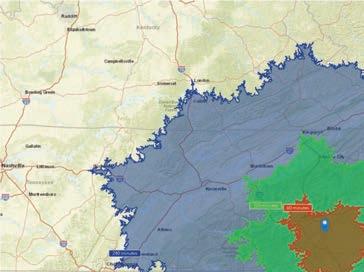


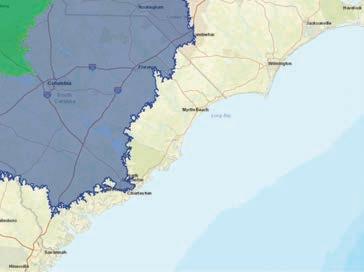
Visitors within a 60-minute drive of Chimney Rock Village include those from Asheville, Hendersonville, and Marion, North Carolina. The 120-minute driving radius extends to Hickory, Charlotte, and Statesville, North Carolina; Greenville, South Carolina; and Johnson City, Tennessee. Within 240 minutes, the Village attracts visitors from Blacksburg, Virginia; Knoxville, Tennessee; Columbia and Charleston, South Carolina; Winston-Salem, Greensboro, and Raleigh, North Carolina; and Metro Atlanta and Augusta, Georgia.
The development of the Raise the Rock Recovery Action Plan has been informed by a review of recovery plans and e orts from other communities also impacted by natural disasters. These plans o ered valuable guidance and inspiration. Several common approaches to recovery were identified, including:
•Community-led planning
•Sustainability and resilience
•Collaboration among diverse stakeholders
•Integration of hazard mitigation into long-term redevelopment
The plans discussed here served as foundational examples and helped shape the recovery strategy adopted in Chimney Rock Village.

The Lahaina Long-Term Recovery Plan (LTRP) was created in response to the massive wildfires of August 2023 to guide the community’s recovery and rebuilding e orts. Rooted in Lahaina’s unique multicultural and historical identity, the plan addresses wide-ranging impacts to the environment, housing, culture, and the local economy—while also tackling pre-existing challenges like housing a ordability, infrastructure resilience, and economic diversification. Developed through extensive community engagement, the LTRP reflects the voices and priorities of residents. Recovery is defined as a holistic process involving interconnected e orts to restore and improve key areas, including a ordable housing, public utilities, economic revitalization, and health and social services. The plan identifies 40 priority projects, ranging from immediate needs like improving emergency communications and launching a ordable housing programs to long-term initiatives such as restoring historic sites and creating new greenways. The LTRP is intended to evolve with Lahaina’s recovery to ensure e orts remain community-driven and forward-looking while honoring the town’s heritage.

The Baker United Strategic Recovery Plan was developed to support the City of Baker, Louisiana, in its long-term recovery from the devastating floods of August 2016. Centered on resilience and community revitalization, the plan emphasizes public engagement and outlines a coordinated approach across six key recovery sectors: community planning, housing, infrastructure, economic development, health, and natural resources. Guided by a project steering committee, the plan sets clear goals and prioritizes strategic initiatives such as updating the city’s comprehensive plan, enhancing local parks, and establishing a community emergency response team.
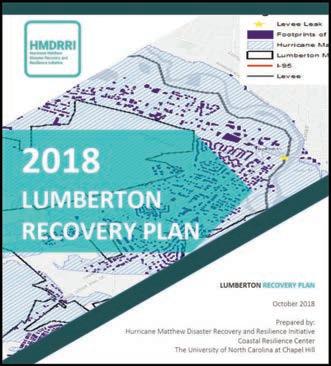
The Lumberton Recovery Plan was developed in response to the impacts of Hurricane Matthew, with a focus on both immediate recovery and long-term resilience. The planning process was rooted in collaboration with local stakeholders and community members to ensure that the city’s specific needs, many of which are not fully addressed by federal recovery programs, were identified and prioritized. The plan emphasizes resilience as more than simply rebuilding; it frames recovery as an opportunity to improve infrastructure, housing, health outcomes, public facilities, and economic conditions. Key goals of the plan include strengthening institutional capacity, fostering partnerships, and mobilizing resources to support sustainable recovery e orts. It also aims to stabilize and grow the local tax base while enhancing quality of life for residents.

Following devastating floods, the Town of Lyons launched a comprehensive and inclusive recovery planning process, engaging hundreds of residents to shape a shared vision for the future. Guided by the principles of resident-driven engagement, sustainability, and resilience, the plan identified multiple key recovery areas. These include ecological restoration of St. Vrain Creek and its tributaries. In addition to environmental recovery, the plan outlines strategies for economic revitalization, including tourism promotion, business retention, and urban renewal projects aimed at strengthening the town’s economic and social fabric. The Town followed this process with an independent Parks Recovery Plan in 2015 that addressed recreation facilities.
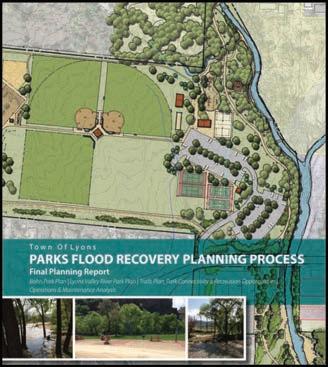
The Town of Lyons experienced significant damage from the September 2013 flood, leading to a comprehensive recovery planning process for its parks and recreational areas. This report outlines the strategies and plans developed to restore and enhance the town's parks, trails, and connectivity. The
Town of Lyons initiated a planning process to recover and enhance its parks following the flood. The planning process was completed in November 2015 with public input. The Final Planning Report includes plans for several city parks and a comprehensive Trails Plan. The report aims to restore recreational opportunities and improve park connectivity.
Wilmington, Vermont
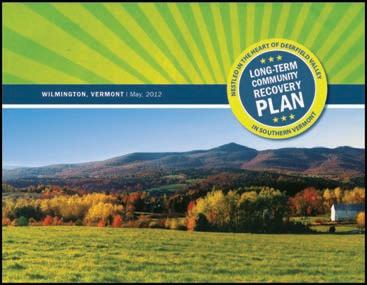
Tropical Storm Irene caused major flooding in Wilmington, VT on August 28, 2011, causing the Deerfield River to submerge Main Street under six feet of water. The storm damaged key infrastructure and historic businesses and disabled emergency operations centers. In response, the community launched a long-term recovery e ort led by the Wilmington Selectboard, which engaged residents in creating a shared vision and goals. The Selectboard served as an oversight committee and supported sector-specific recovery workgroups. The resulting plan focused on building a vibrant, year-round economy while preserving the town’s historic and cultural character, with goals set for economic development, infrastructure, and housing.
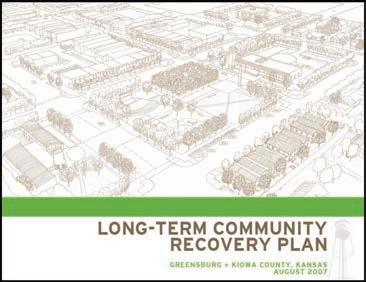
The Long-Term Community Recovery Plan for Greensburg and Kiowa County, Kansas, was created after an EF-5 tornado struck on May 4, 2007. The goal was to guide recovery through a collaborative, community-driven approach. It identifies key priorities such as rebuilding public infrastructure, including schools, medical facilities, and government buildings, along with developing a ordable housing, a business incubator, and a revitalized downtown. The plan was shaped through extensive community participation using the Public Square process, which brought together residents and stakeholders from sectors like business, education, health, and government to foster collaboration, build partnerships, and ensure citizen engagement in the recovery.
Following Hurricane Helene, the Village Council hired Rostan, a firm with expertise in disaster recovery, to help navigate the complex process of securing disaster relief from state and federal agencies. Working closely with the Village, Rostan completed a detailed damage inventory report that identified 18 Chimney Rock Villageowned assets impacted by the storm. These damages may qualify for federal assistance through FEMA’s Public Assistance program and fall under the following categories:
•Category C – Roads and bridges
•Category F – Public facilities and supporting infrastructure
•Category G – “Permanent work,” including parks, recreational facilities, and other public assets
The total estimated repair cost for these damages exceeds $17 million. The damage inventory is outlined below:
•Streetscape Damages
•Roadway Sink Hole Damage
•Sidewalk Damages
•Terrace Well Gravel Access Road Damages
•Storage Barn and Associated Damages
•Cli side Water Tower Reservoir Tank Damage
•Sewer, Water, and Fire Hydrant System Damages-- Lake Lure to Downtown CRV
•Covered Bridge Well Damages
•Terrace Well Water Pump Motor Damage
•Sewer, Water, and Fire Hydrant System Damages -- Downtown CRV to Bat Cave
•Main Public Parking Lot Damage
•Amphitheater Gravel Damage
•Townwide Streetside Parking Damages
•River Park Damage
•Riverwalk Damage
•Main Parking Lot Gate Damages


Unstable & Disturbed Slopes
Loss of Riverbank Areas River Channel Severely Altered

State Park Bridge
Access Total Loss

Six Commercial Properties Total Loss
Damaged Commercial

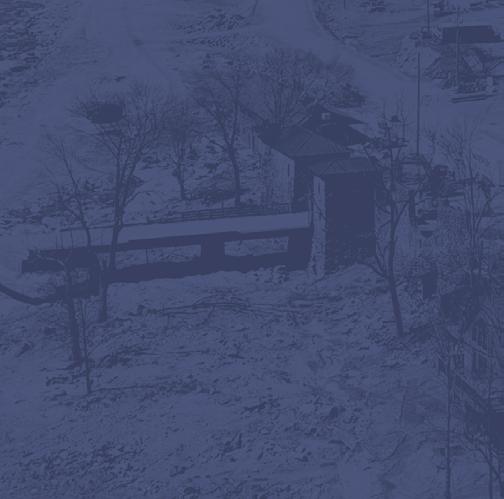
Damaged Streetscape Elements
Structural & Surface Damage to Primary Public Parking Lot
Flood-Inundated Business District & Damaged Streetscape
State
Entrance
Village Riverwalk Total Loss

Village Plaza & Surrounding Commercial Severely Compromised


Widespread destruction from the recent disaster impacted both public and private assets — from collapsed bridges, damaged riverbanks, and destroyed infrastructure to the loss of commercial properties and critical business access. Key areas a ected include unstable slopes, a severely altered river channel, and extensive damage to streetscapes, the Riverwalk, and Riverside Plaza.
Following the severe impacts of Hurricane Helene, the Rocky Broad River in Chimney Rock experienced tremendous damage, including erosion, debris buildup, destabilization of its banks, and channel realignment. To fully understand the extent of the damage and develop e ective restoration solutions, it became essential to consult a subject matter expert with national experience in river ecology, hydrology, and environmental restoration to provide informed recommendations and help guide the recovery and longterm restoration of the river system.
Founded by Gary Lacy in 1983, Recreation Engineering and Planning (REP) is the country's leader in the design of river parks, instream river recreation, and riverside improvements including trails and river access. In their 41 years in the business, the REP team has designed
the vast majority of constructed river recreation enhancements in the United States. REP combines decades of experience working in a variety of river environments with advanced technical engineering and design skills. In March 2025, the REP team visited Chimney Rock to conduct a preliminary analysis of the Rocky Broad River and explore possibilities for its restoration. Based on their assessment, REP has recommended several improvements, including:
•Restoring the river with an emphasis on recreational use
•Developing riverside commercial spaces
•Creating terraced riverbanks
•Building a flood-resistant trail system


The Recreation Engineering and Planning team explores early concepts for instream recreation, river restoration, and a riverwalk.
REP’s analysis provides the foundation for the final illustrative river restoration plans outlined in Chapter 4: Plan Reccommendations.





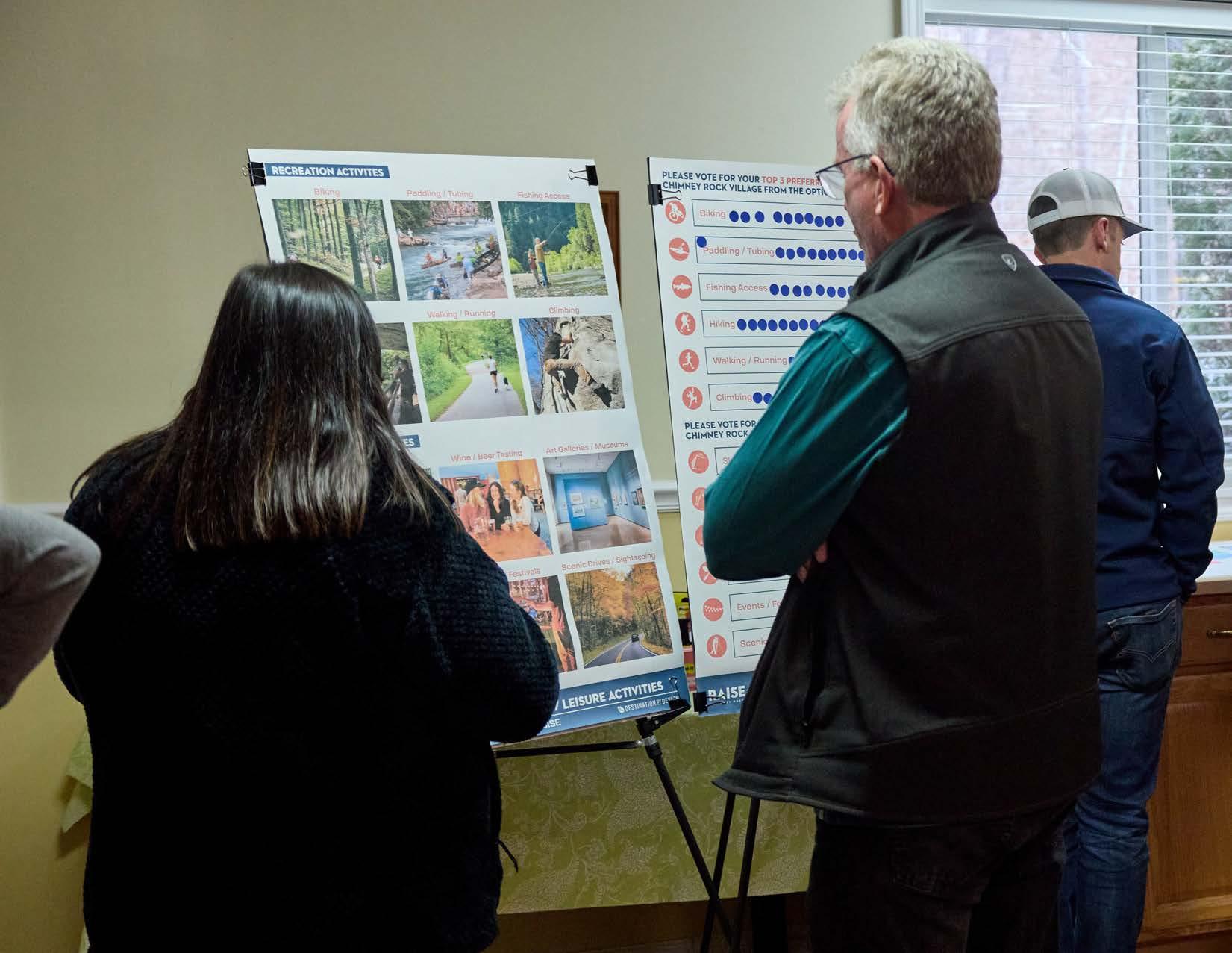



This chapter outlines the public engagement process that has been instrumental in the development of the Raise the Rock Recovery Action Plan. It highlights the key stakeholders and organizations involved, shares outcomes from community meetings, and summarizes insights from an online community survey focused on future redevelopment priorities. The chapter concludes with a set of emerging themes for long-term recovery, all which serve as the foundation for the plan recommendations. In this Chapter
3.1 Tools of Engagement

3.2 Community Partners and Engagement
3.3 Community Survey
3.4 Emerging Themes





A Raise the Rock Recovery Action Plan website was developed to share key information about the planning process and goals. The website also invited residents to participate in an online community survey to provide input on recovery priorities. In addition, a Project Fact Sheet was created to o er a clear, concise summary of the plan’s purpose and essential details.
•Project Fact Sheet
•Project Website
•Online Community Survey




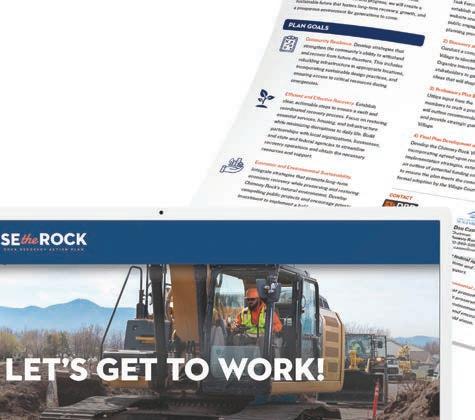













The planning process for the Raise the Rock Recovery Action Plan involved a wide range of community partners, including government, quasi-governmental agencies, nonprofit organizations, and private businesses. The consultant team and Task Force held multiple meetings, interviews, and site visits with these stakeholders. The valuable insights gathered during these discussions helped shape the plan’s recommendations.
Nonprofit Organizations & Businesses
•Community Foundation of Henderson County
•Recreation Engineering and Planning
•Ridgewater Engineering
•Spokes of Hope
•American Whitewater
•Carolina Climbers Coalition
•Mountain True
•Oaklore Distilling
•Duke Energy
•Chimney Rock Management, LLC
Government & Quasi-Governmental Agencies
•Appalachian Regional Commission
•Army Corps of Engineers
•Chimney Rock State Park
•Chimney Rock Village Fire Department
•Chimney Rock Village
•Federal Emergency Management Agency (FEMA)
•Foothills Regional Commission
•Governor’s Recovery O ce for Western North Carolina (GROWNC)
•Hickory Nut Gorge Chamber of Commerce
•Henderson County
•Isothermal Community College
•North Carolina Department of Commerce
•North Carolina Department of Transportation
•Rutherford County
•Rutherford County Emergency Management
•Rutherford County Tourism Development Association
•U.S. Economic Development Administration
•University of North CarolinaCharlotte; School of Architecture
A public workshop was held on March 4, 2025, at Chimney Rock Baptist Church to engage community members in shaping the future of Chimney Rock Village. The event featured several interactive activities including voting exercises, openended feedback sessions, and map-based planning exercises that allowed residents to share their ideas on local redevelopment and recovery priorities. This public participation played a vital role in identifying local values, challenges, and opportunities, and to help ensure that the redevelopment process reflects the community’s vision and needs.
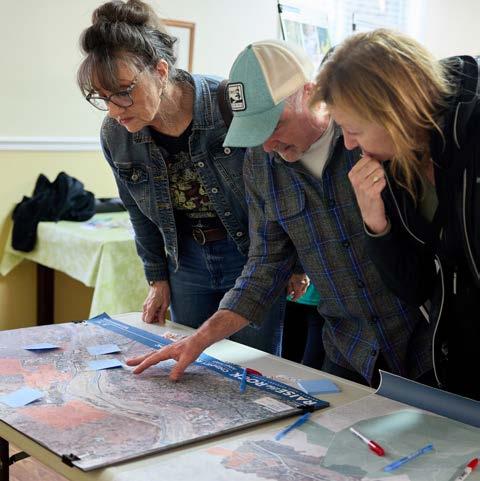

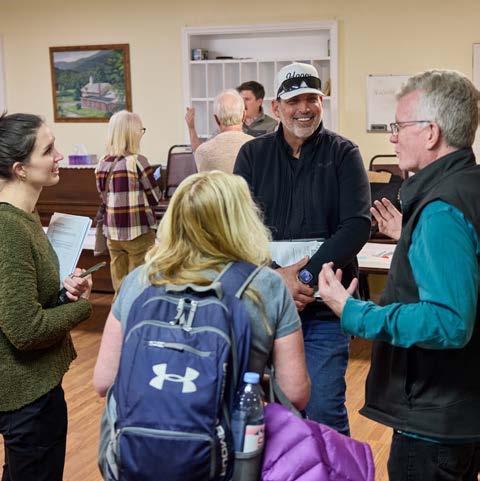
During the public involvement meeting, several key topics emerged that reflect a strong community vision for Chimney Rock Village’s long-term redevelopment. Participants expressed a desire to enhance the Village’s identity as an adventure tourism destination by developing outdoor attractions such as zip lines, mountain biking trails, rock climbing areas, rafting excursions, and possibly an alpine coaster. Expanding trail networks, including riverside bike paths and connections to Chimney Rock State Park, was also a high priority, along with offering educational, interpretive experiences focused on the local environment.
Improving access and mobility was another major focus. Attendees emphasized the need for a trolley or shuttle system to reduce parking pressure and better connect visitors to key destinations.
Suggestions also included creating additional parking areas outside the town center with safe, pedestrian-friendly routes leading into the Village.
Public input reflected strong interest in revitalizing the riverfront by restoring safe, accessible areas for swimming, tubing, and fishing. Participants emphasized balancing recreation with environmental stewardship and public safety.
In terms of development, there was a call for more lodging options, especially familyfriendly and upscale accommodations that respect the natural surroundings. Enhancing dining experiences was also important, particularly local cuisine and scenic waterfront locations.
There was also significant enthusiasm for integrating cultural and educational experiences into the Village. Ideas
included creating a museum to celebrate Native American heritage and the history of Chimney Rock, as well as offering opportunities to engage with local crafts, music, and food. Community members showed support for the idea of developing mixed-use spaces that combine shops, restaurants, lodging, and residences to help create a more vibrant village center.
The community expressed interest in hosting regular live events such as concerts, plays, and festivals, potentially in outdoor venues like an amphitheater, and in establishing memorials or exhibits that honor the town’s experience following the disaster. These suggestions reflect a broader goal of fostering a strong sense of place, identity, and community pride while supporting long-term economic and cultural vitality.
The Task Force held a second public workshop on June 4, 2025, at the Chimney Rock Fire Department to share key findings and gather feedback on recommendations for the long-term recovery plan. The event featured visual displays of conceptual designs and proposed strategies, giving residents and stakeholders a clear view of the plan’s direction. Attendees had the opportunity to share their reactions and suggest improvements. This input was critical to building community support and refining the plan to ensure a shared path forward for redevelopment and implementation.
Feedback from the public forum showed strong support for a vision that blends restoration, recreation, and revitalization throughout Chimney Rock Village. Many praised the focus on the local economy
and outdoor recreation, especially through the Riverwalk and improved river access. A shared priority emerged around protecting a healthy, dynamic river system, with calls for ecological design strategies like engineered in-channel structures and high-flow channels. Participants also emphasized storm resilience and expanded stormwater infrastructure, alongside a strong preference for native landscaping and materials that reflect the Gorge’s natural beauty and connection to Chimney Rock State Park.
Views on food and commercial uses were mixed, some favored food trucks and a lively social district, and there was notable interest in new lodging options. Installation of a Helene memorial to honor the historic event received broad support.
Area-specific feedback highlighted an interest for family-friendly and intermediate paddling opportunities as part of a Riverwalk Recreation Area and restoring the Bat Cave to Esmeralda stretch as an advanced whitewater run. In the Village Core, residents called for practical improvements, including more restrooms, better parking access, and thoughtful development that supports local business and preserves scenic character. In the east, many supported converting Carter Lodge into a community park. Overall, the comments reflected a strong commitment to creating a welcoming and active environment for Chimney Rock Village.
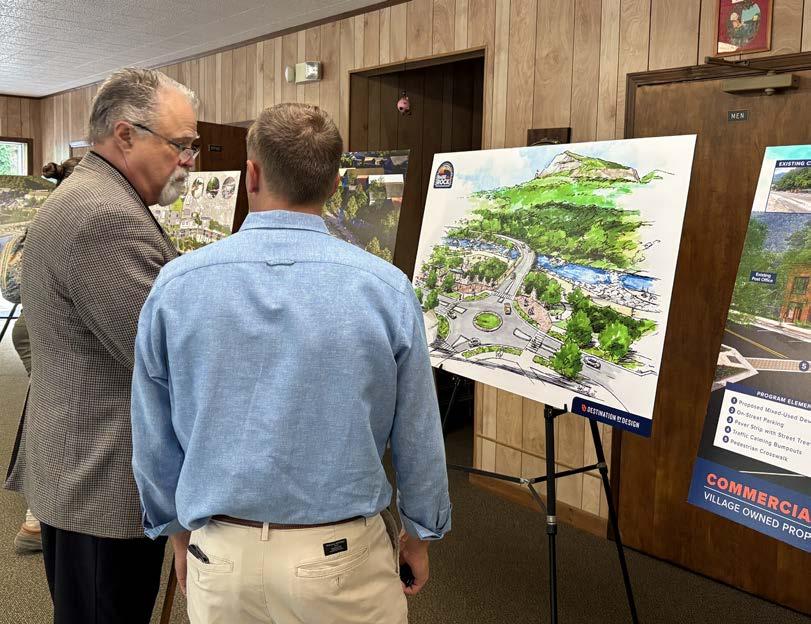
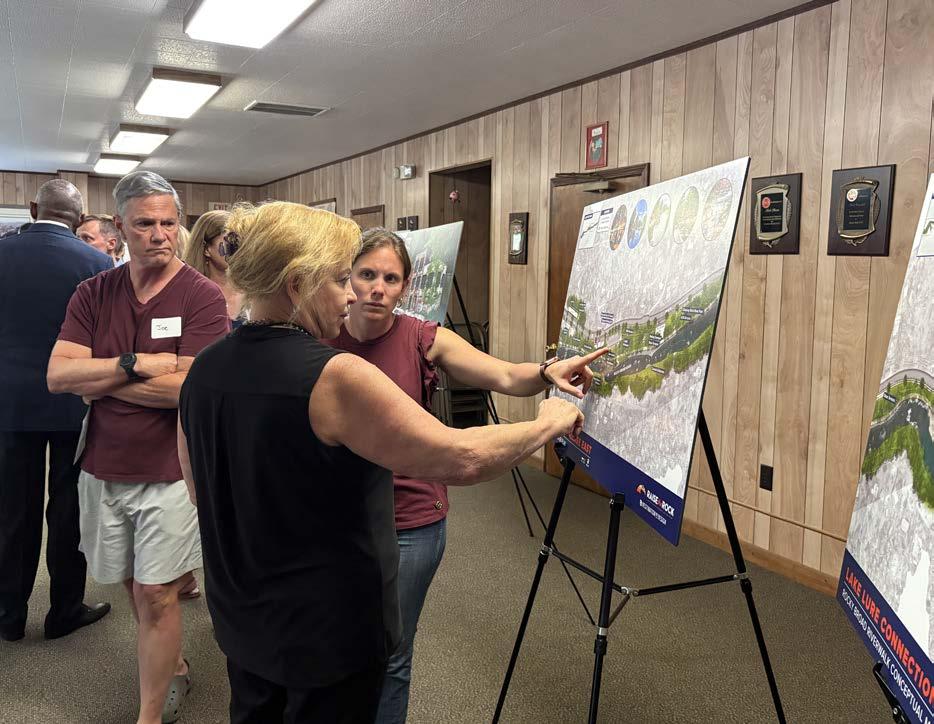

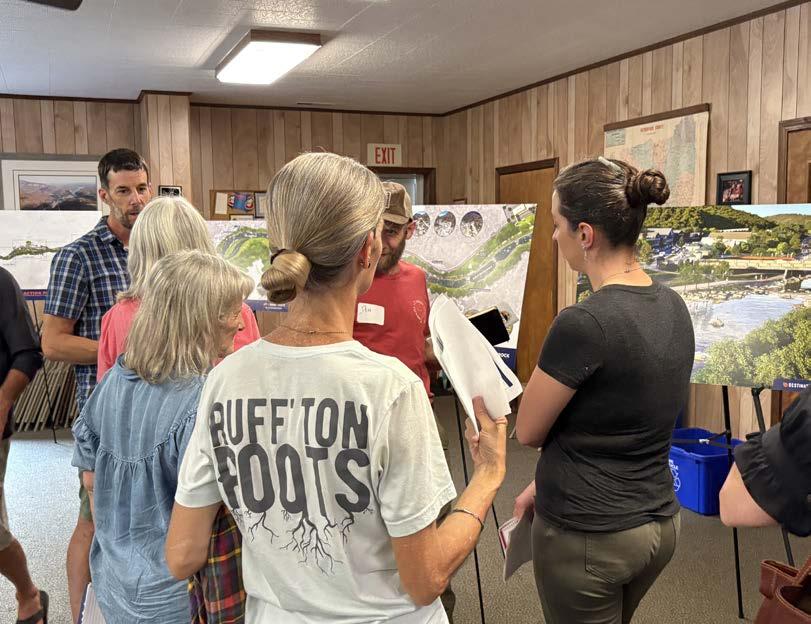
The Raise the Rock community survey was designed to gather input on what stakeholders considered the biggest recovery challenges and the areas of greatest concern for residents and visitors. It collected ideas for improvements that can help guide decision makers in planning future recovery e orts.
Between February and March 2025, the survey received 3,609 responses. It was promoted through the project website and by Chimney Rock Village and local partners via email and social media outlets. This section highlights the key findings from the survey.
The responses represent a diverse group, including:
•1,610 local area residents
•1,997 visitors
•55 local business owners
•Participants from 817 di erent zip codes across 29 states
$20-34k (5%)
<$20k (2%)
$35-49k (6%)
$50-74k (11%)
$75-99k (13%)
(27%)
DOWNTOWN
PARKS
LAND
TRANSPORTATION
(24%)
(18%)

Responses from the community survey express deep sympathy, love, and unwavering support for the Chimney Rock Village community in the aftermath of the storm. Visitors from across the region and beyond shared earnest messages of encouragement, emphasizing the Village’s significance as a cherished place woven into their family traditions and personal histories. Many voiced their sorrow over the damage while expressing strong faith in the strength of the community and a sincere desire to see residents and businesses prioritized in recovery efforts.
These responses provide a powerful narrative rooted in love, loss, and legacy. The overwhelming affection for Chimney Rock Village is evident in stories of multi-generational trips, childhood memories, family milestones, and heartfelt traditions that express a deep love for the people, the place, and its enduring charm. Alongside that love is a profound sense of loss, not just of buildings or landscapes, but of a place that felt like home, a peaceful sanctuary that offered connection and belonging. Yet through the expressions of grief a collective commitment to the legacy of Chimney Rock Village is revealed. Respondents voiced unwavering support for rebuilding and honoring the past while fostering a bright future and consistently highlighted the scenic views, welcoming people, and the unique experience of strolling along Main Street, enjoying local shops, dining by the river, and feeling truly at home. The voice of the community reminds us that Chimney Rock Village is far more than a destination, it is a living, cherished place and its legacy will continue.
Memories! Have been visiting with my family since I was 4 and now I bring my grandson.
I love this place… It’s got a special place in my heart and calms my soul. The rock coordinates are my tattoo if that gives you an idea.
Culture, history, everything. Chimney Rock ROCKS!
We are so sorry that this tragedy has affected the lives of so many, but grateful and optimistic for the future, REBUILD!!!
No matter what you do, love and support will be there. Thank you for being so strong!



Grounded in existing conditions and shaped by community input, the emerging themes discussed here provide a clear framework for recovery elements in need of particular consideration. These themes indicate the community’s most pressing needs and priorities and inform the recommendations presented in Chapter 4. These themes o er guidance for local leaders and decision-makers when allocating resources and making strategic investments. The emerging themes include:
1. Utilities

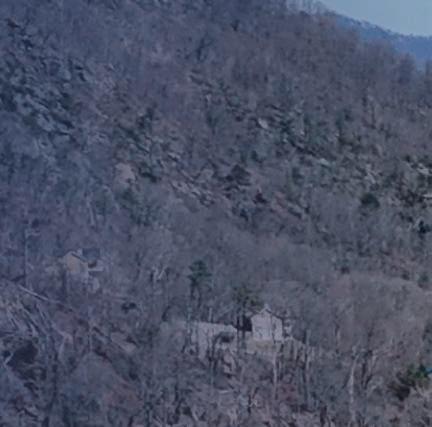

Utilities should be carefully integrated to meet a mix of commercial and residential needs, which calls for resilient, well-planned infrastructure. Essential services such as electricity, water, sewer, and communications, must be reconstructed in a manner to preserve the visual appeal of storefronts and the integrity of streets and pedestrian walkways. In Chimney Rock Village, much of this infrastructure has been damaged by Hurricane Helene, requiring significant repairs and upgrades.
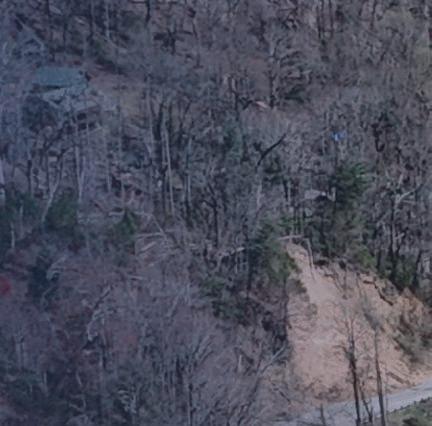
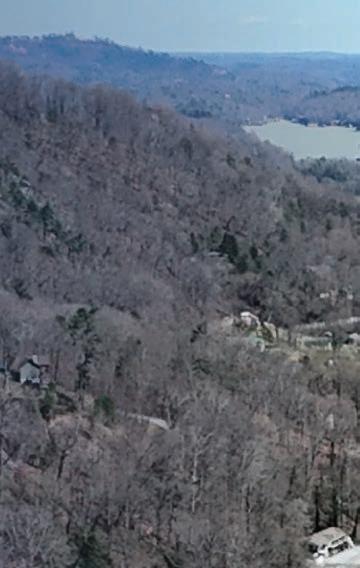
Parks and recreation play a vital role in enhancing the quality of life for both residents and visitors by o ering accessible spaces for relaxation, exercise, and community events. Amenities such as green spaces, trails, and public gathering areas will boost the area’s appeal, attract visitors and contribute to local economic development. As rebuilding moves forward, the Raise the Rock Recovery Action Plan aims to not only restore these valued spaces, but to enhance them, introducing new features like riverside parks and multi-use paths to better serve the community’s evolving needs.
6. Land Use (Old Village / New Town)
7. Transportation / Parking
8. Resilience / Public Safety
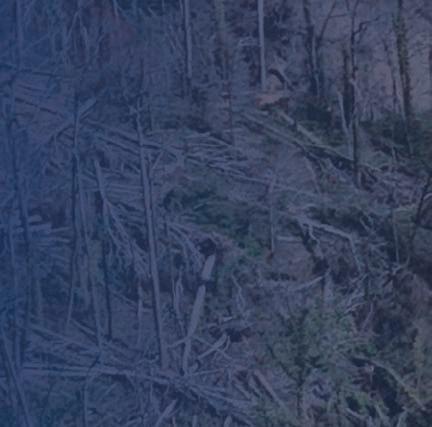

Well-planned residential areas will help create an environment where people can thrive and feel a strong sense of belonging. A diverse mix of housing options will allow individuals and families of di erent income levels, ages, and household sizes to find a place that suits their needs. Before Hurricane Helene, Chimney Rock Village was home to approximately 75 households and several unique lodging accommodations, including inns, motels, RV parks, campgrounds and short-term vacation rentals. As the Village moves forward with recovery, it must address a broad range of housing needs, from single-family and multi-family homes to workforce housing, while also ensuring there are enough lodging options to support its tourism economy.
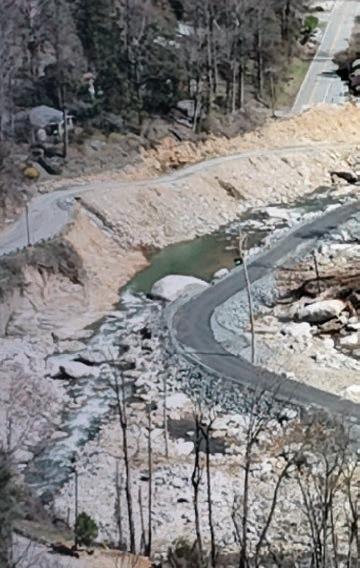

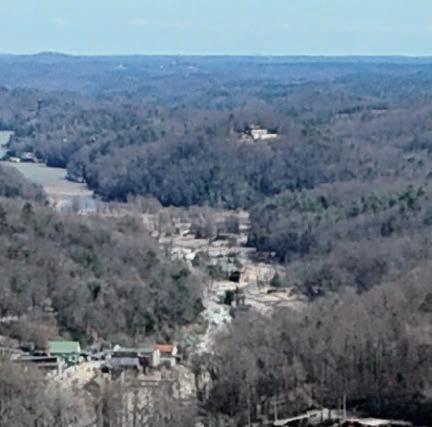



Stream restoration is a vital strategy for advancing Chimney Rock’s long-term recovery goals. This process will involve reshaping the stream channel and stabilizing severely eroded and incised riverbanks to sustainably reconnect the Rocky Broad River with the community. As a defining feature of the village, the river is central to the area's character and recreational appeal. Applying subject matter expertise to stream restoration projects will be essential in supporting the community’s recovery around this incredibly impactful natural resource.

By serving as a hub for commerce and cultural activity, a restored downtown district will boost the local economy and enhance the overall image and competitiveness of the community. This district will be the focal point for investment and revitalization e orts such as streetscape improvements and design proposals for new development. Prior to Hurricane Helene, the Village featured a charming and thriving downtown with 45 successful businesses. The Raise the Rock Recovery Action Plan aims to identify new, compelling infrastructure projects that promote small businesses and the local tourism economy, enhance quality of life, and drive private investment. Guided by this theme, the plan will help encourage economic growth and the redevelopment of the downtown area.


Thoughtful land use planning is a critical part of the recovery e ort and is key to supporting future economic development in Chimney Rock Village. Making informed land use decisions will help shape a more livable and attractive community. By guiding the placement of housing, businesses, parks, and public facilities, land use planning, in concert with local regulations, can help balance new development with the village’s traditional character and values.
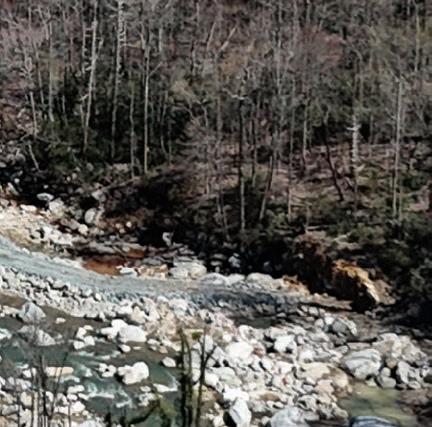
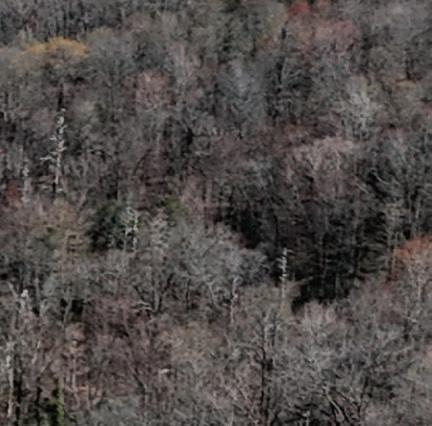
An e ective transportation system will allow people to move safely and e ciently while balancing the needs of motorists and pedestrians. In the downtown and commercial areas of Chimney Rock, accessible and well-managed parking is especially important to support the recovery of local businesses and to accommodate a steady influx of visitors. The Raise the Rock Recovery Action Plan outlines several transportation improvements designed to serve both residents and visitors, including on-street and ostreet parking, sidewalks and multi-use pathways.
A strong public safety framework is essential for building a secure, resilient community where residents feel confident in their ability to recover and thrive. Strategic investments in disaster planning, infrastructure, and community facilities will be key for protecting residents and improving overall preparedness. In the aftermath of Hurricane Helene, Chimney Rock Village can strengthen its resilience through long-term projects focused on stability and enhanced public safety, infrastructure improvements, and community preparedness.




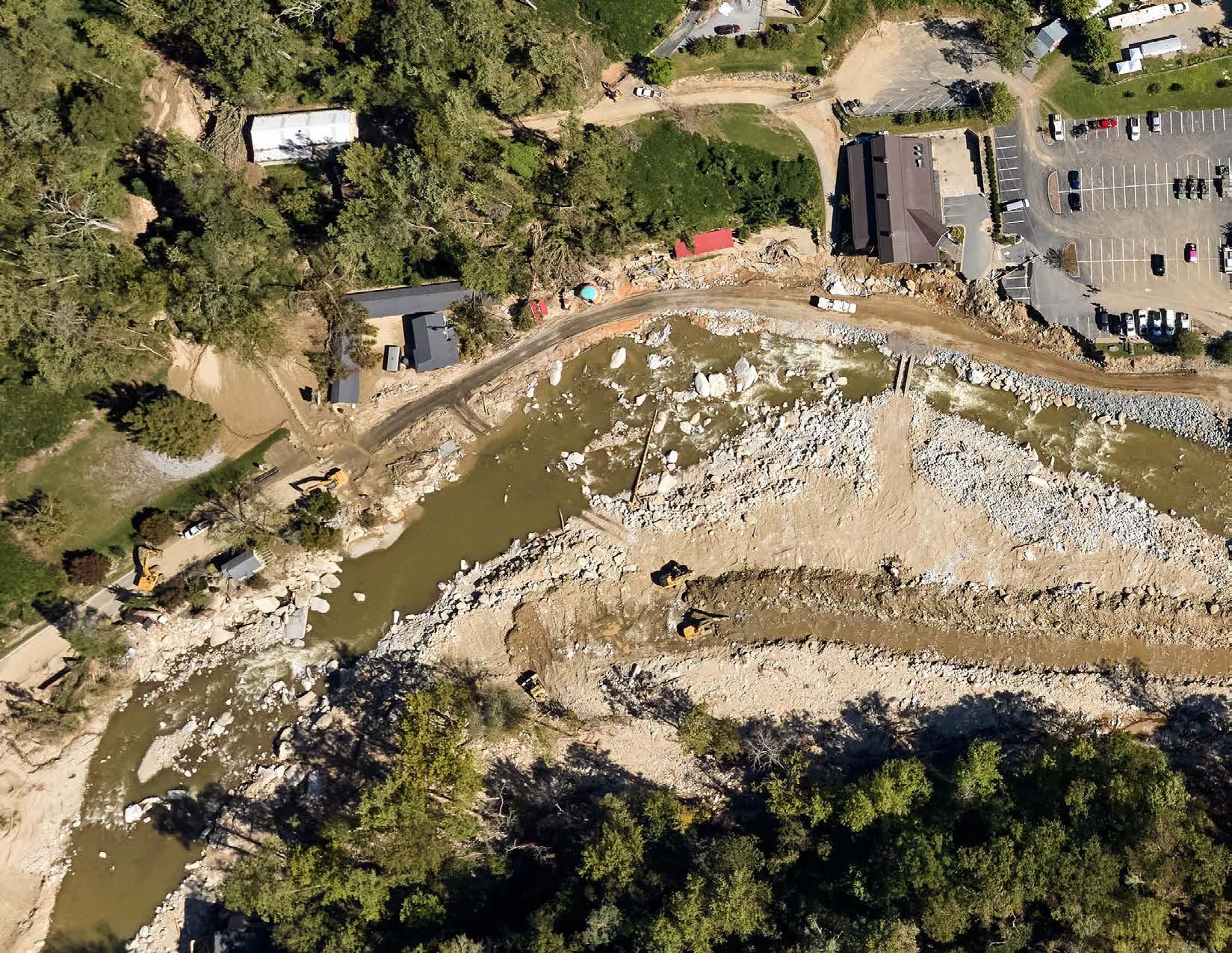


4.1: Introduction to Recommendations
Project Type 1: Public Capital Improvements
Project Type 2: Village-Owned Commercial Infill Development
Project Type 3: Private Commercial Infill Development



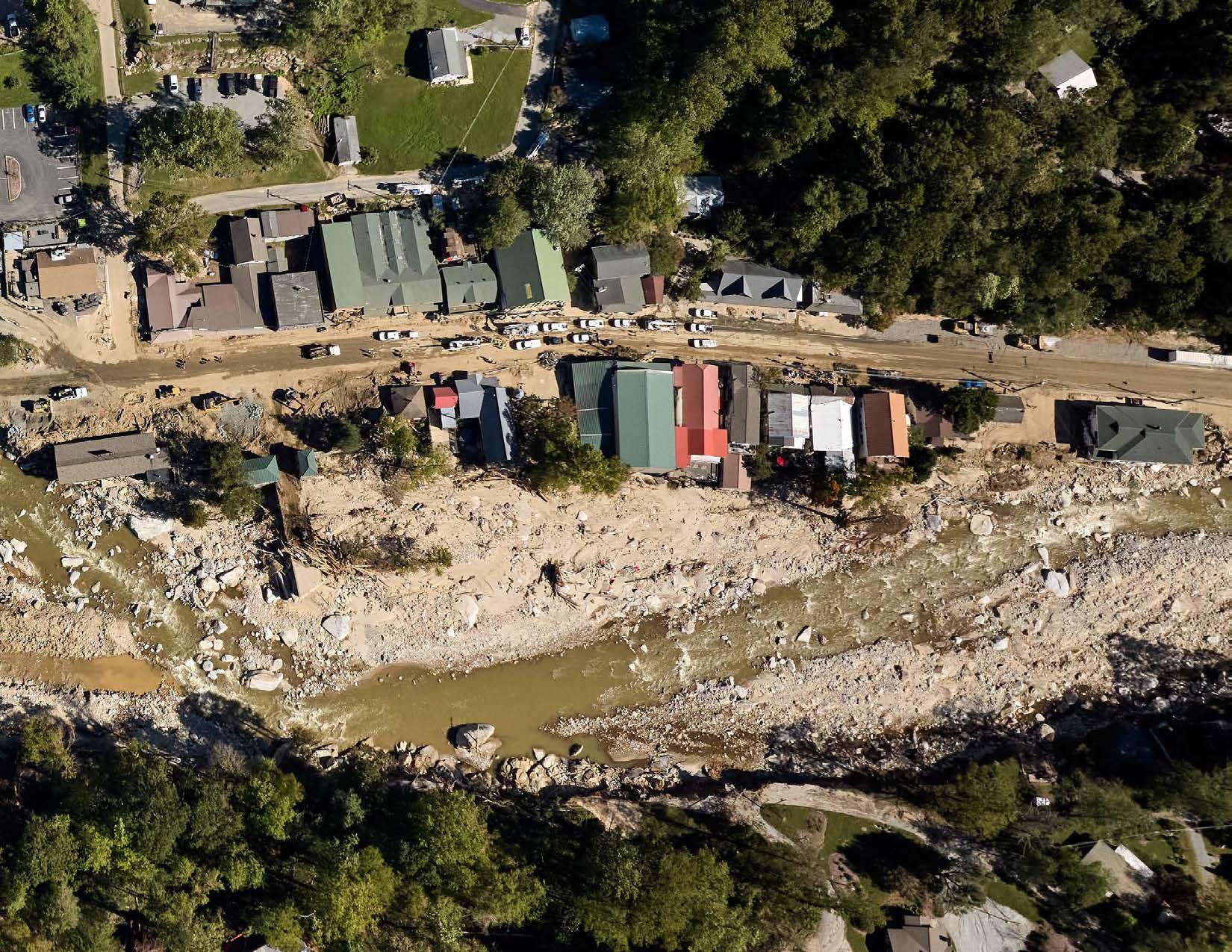
This chapter serves as the cornerstone of the Raise the Rock Recovery Action Plan, presenting seventeen (17) major Recovery Projects identified through the planning process. These projects are organized into three (3) distinct Project Types: 1) Public Capital Improvements, 2) Village-Owned Commercial Infill Development, and 3) Private Commercial Infill Development. Together, they provide a clear roadmap for revitalization and resilient growth.
While the consultant team and Chimney Rock Task Force considered opportunities extending west into Henderson County and the

community of Bat Cave, the primary study area focuses on the corridor stretching from the Esmeralda Inn (west) to the Hwy. 74 bridge at Lake Lure (east). This area is divided into three (3) planning sections: 1) Village Core; 2) Village East; and 3) Village West (see Exhibit 02: Primary Study Area Planning Sections, page 67).
This chapter is organized by Project Type. A description is provided for each project along with a set of key action steps necessary to guide successful implementation.

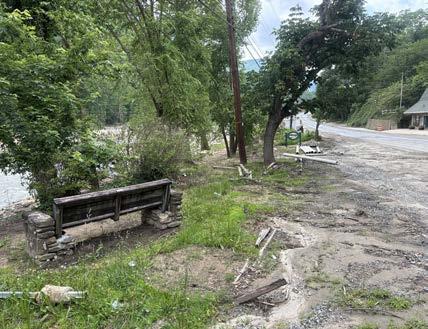


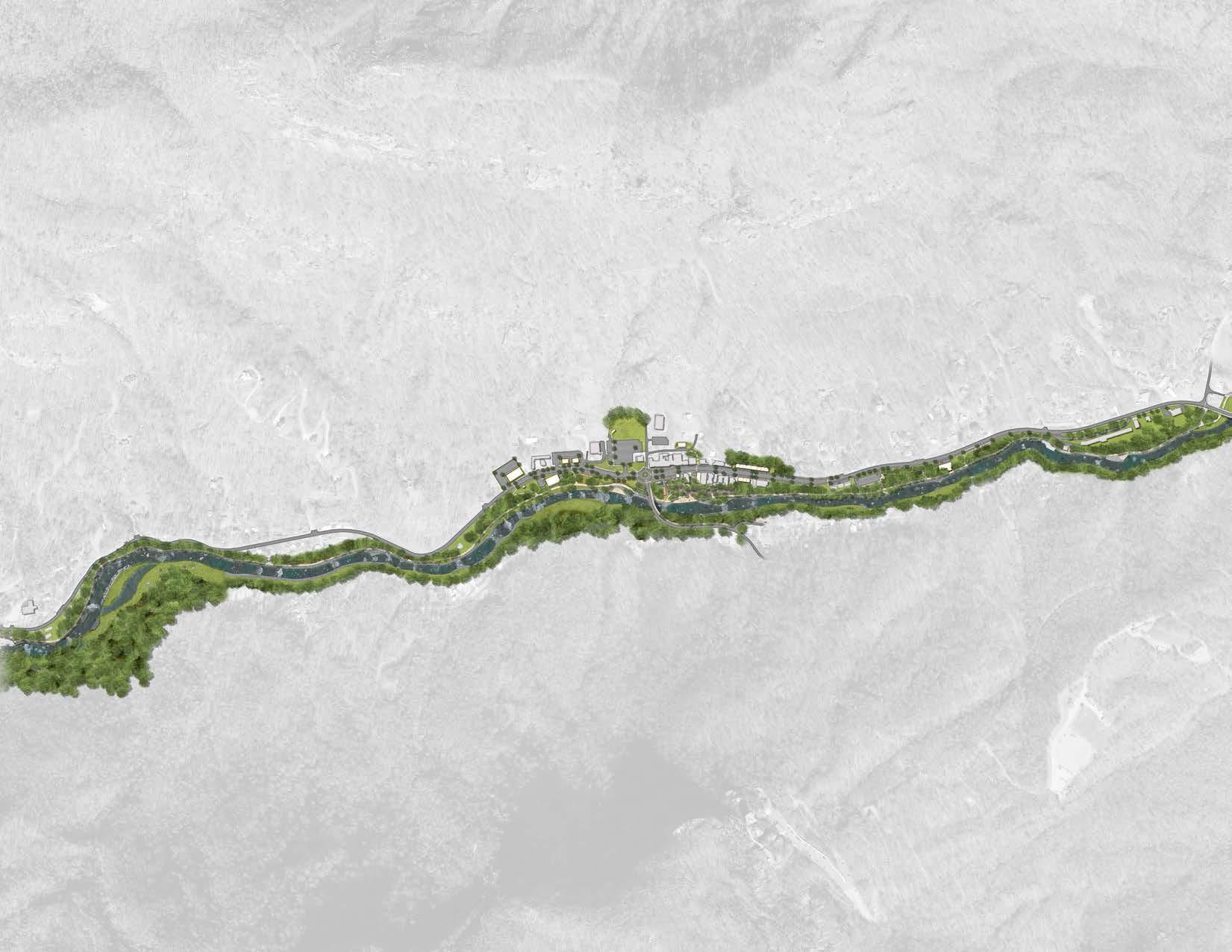
The section highlights nine (9) specific Public Capital Improvement projects designed to rebuild and enhance public infrastructure, public spaces, and the economic viability of Chimney Rock Village in the aftermath of Hurricane Helene. These projects include: 1) Rocky Broad River Restoration, which stabilizes riverbanks and re-establishes the river channel for in-stream recreation from the Esmeralda to the Hwy. 74 bridge; 2) the Rocky Broad Riverwalk, which is proposed from Chimney Rock Village west to Bat Cave and east to Lake Lure; 3) the Riverwalk Plaza and Recreation Area is a new and improved public gathering and river access area in the downtown district; 4) the Village Streetscape project provides for critical repairs and upgrades sidewalks, parking, and stormwater infrastructure
throughout the entire village; 5) the Village Plaza Square project restores a central community space to its pre-storm condition; 6) the Historic State Park Plaza and Overlook blends public art, a Helene memorial, and trail connectivity with scenic river views from the site of the original State Park Gateway; 7) the Chimney Rock River Park project provides for improved amenities and riverwalk connectivity in the Village East planning section; and 8) The Gathering Place / Village Parking Lot / Hickory Nut Gorge State Trail Connector project creates a multifunctional hub for events, trail access, parking, and visitor services, and 9) the West End River Access is proposed near the Esmeralda Inn and serves at the western river access for instream family-oriented recreation, tubing, and boating.

The Rocky Broad River Restoration project is a foundational component of Chimney Rock Village’s long-term recovery and resilience strategy. This project is featured within each of the three Planning Sections, but is also proposed to extend west to Bat Cave in Henderson County (Henderson County representatives attended many Raise the Rock planning sessions and expressed support for a unified river restoration plan and bicycle and pedestrian connectivity). Designed to address both environmental and economic goals, the project includes slope stabilization and revegetation efforts to reduce erosion, enhance water quality, and restore the riverbanks.
With the realignment of the river channel, there is considerable opportunity to improve its resilience to future flooding while also enhancing opportunities for recreational use, such as kayaking, tubing, and fishing, which are vital to the Village’s tourism-based economy. Central to the project’s success is regional collaboration, bringing together local governments, state and federal regulatory agencies, and community stakeholders to ensure a coordinated and justifiable approach. These project elements support ecological restoration, protect critical infrastructure, and strengthen the Village’s identity as a resilient and vibrant riverfront destination.
1.1.1 Slope Stabilization and Re-vegetation.
Coordinate with NCDOT and their respective engineering team to incorporate stream restoration efforts that provide for in-stream recreation as part of a collaborative river restoration plan.
1.1.2 River Channel Realignment for Resilience and Recreation.
Support efforts to reestablish and realign the river channel as part of the recovery plan, with a focus on recreation and flood resilience.
Establish a consistent river restoration plan throughout the Hickory Nut Gorge region involving the Village and adjacent jurisdictions, affected landowners, advocacy groups, USACE, NCDOT, NCDEQ, and other stakeholders.
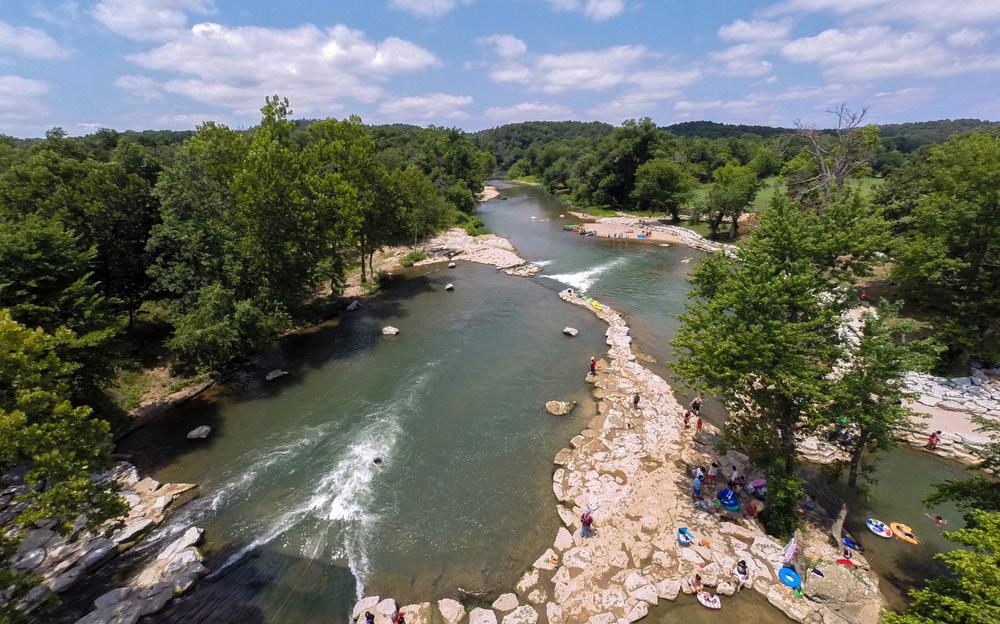
The Rocky Broad Riverwalk project is a transformative recovery initiative aimed at enhancing public access, connectivity, and economic vitality in Chimney Rock Village and the surrounding region. Central to the project is the development of a regional riverwalk that will provide a safe, scenic multi-use pathway along the Rocky Broad River to promote recreation and local business engagement.
The project will also expand river access points for fishing, paddling, and nature viewing, support tourism, and improve the quality of life locally. A key feature here is the planned connection to the Hickory Nut Gorge State Trail, which will integrate the Riverwalk into a broader regional trail network, attract outdoor enthusiasts and increase usage and visitation. The project relies on regional collaboration, engagement of local governments, landowners, river advocacy groups and trail organizations to align planning e orts and ensure long-term stewardship of this important asset.
Implement a multi-use greenway and connected trail system throughout the river corridor to enhance access to the river and expand pedestrian and bicycle mobility.
1.2.2
Develop access areas to encourage more use of the river and promote the area for outdoor recreation purposes.
Support local plans and e orts to develop and manage the new riverwalk and have it designated as part of the Hickory Nut Gorge State Trail (HGST).
Develop a consistent trail system throughout the river corridor involving the Village, adjacent jurisdictions, a ected landowners, advocacy groups, USACE, NCDOT, NCDEQ, NCDPR, and other stakeholders.








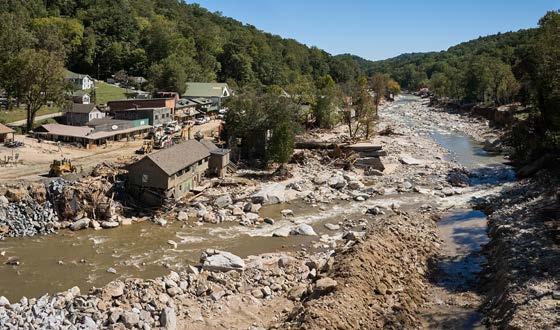







Proposed







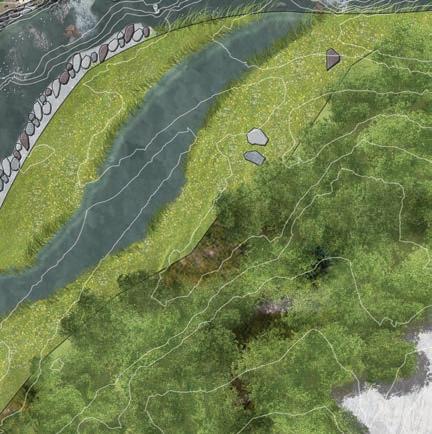






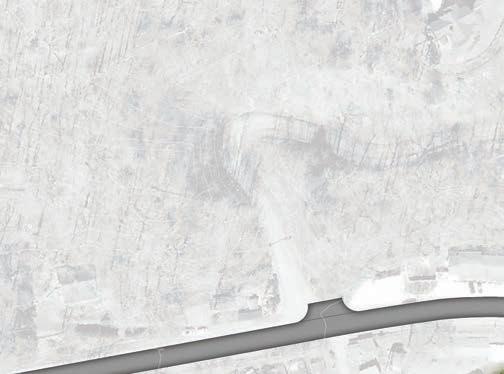

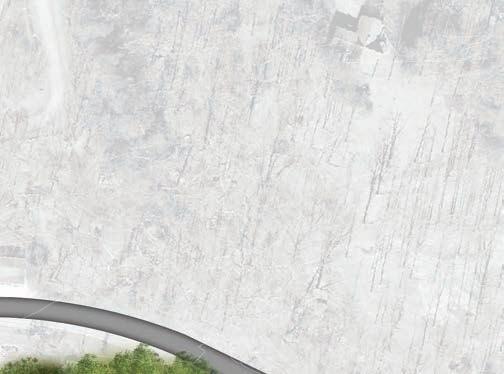








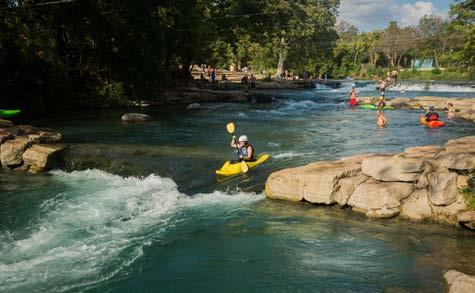
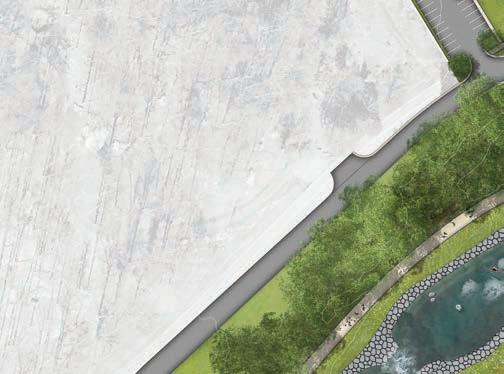





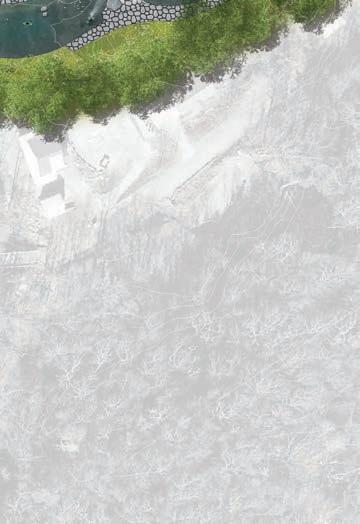


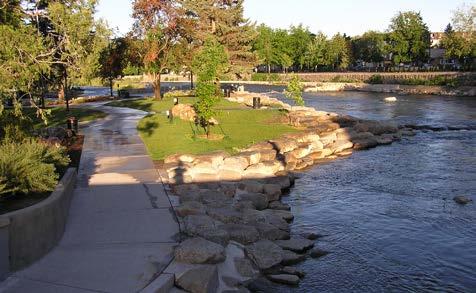



Rocky Broad Riverwalk
Riverwalk Plaza and Recreation Area
Village Streetscape
Village Plaza Square


Historic State Park Plaza & Overlook
Hickory Nut Gorge State Trail
Chimney Rock River Park
West End River Access

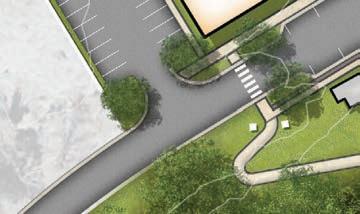




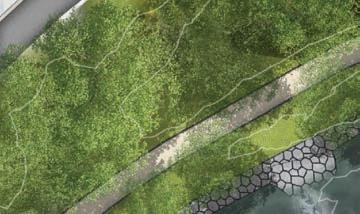


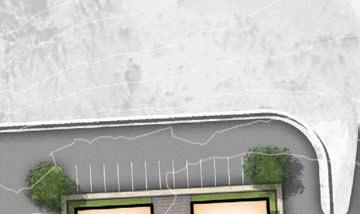

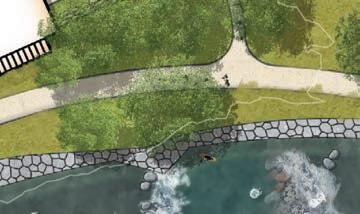


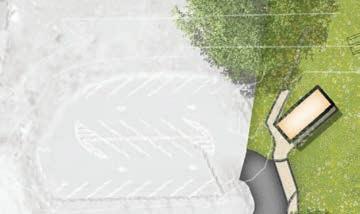
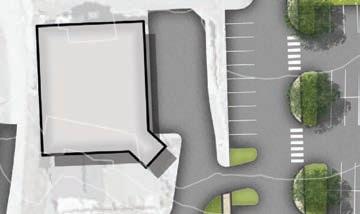
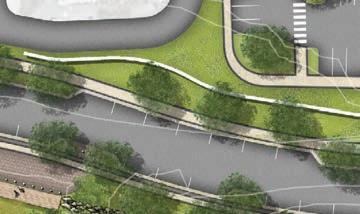
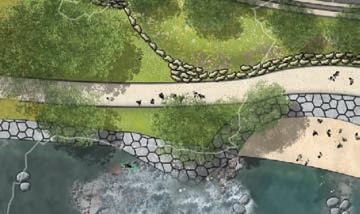
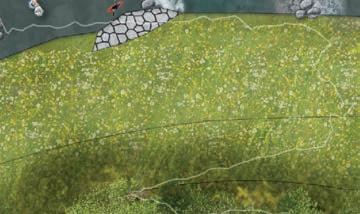

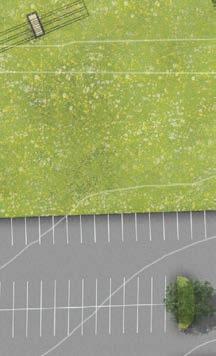






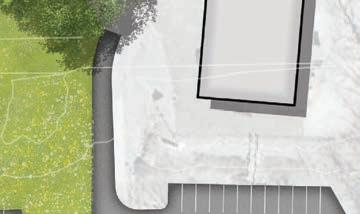
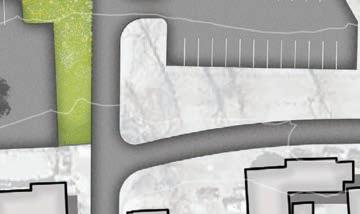
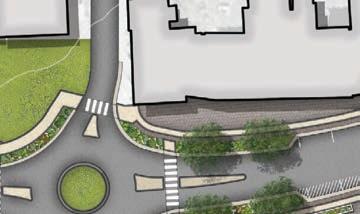
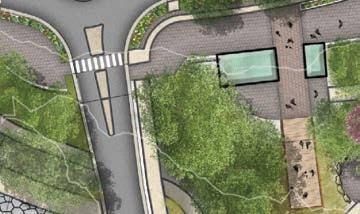
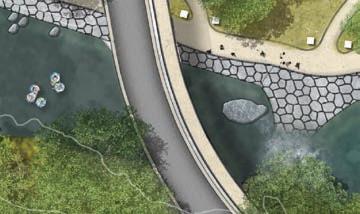



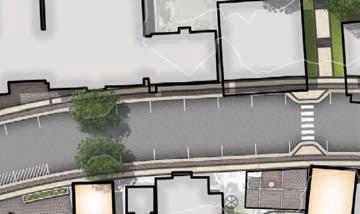
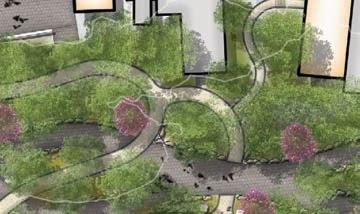

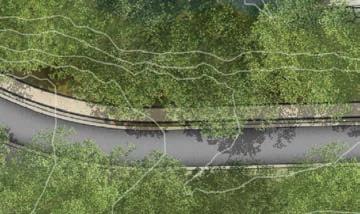






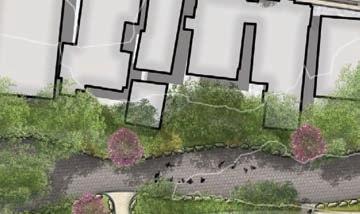
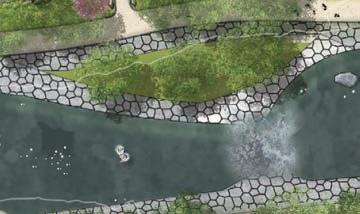
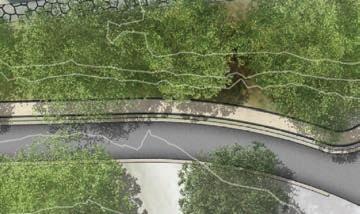









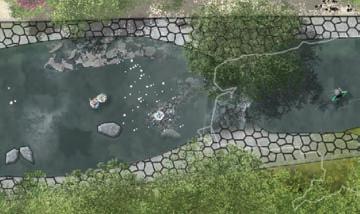
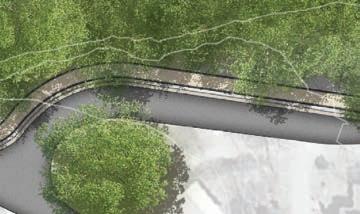



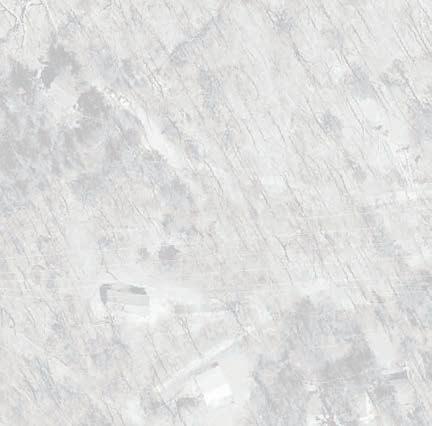


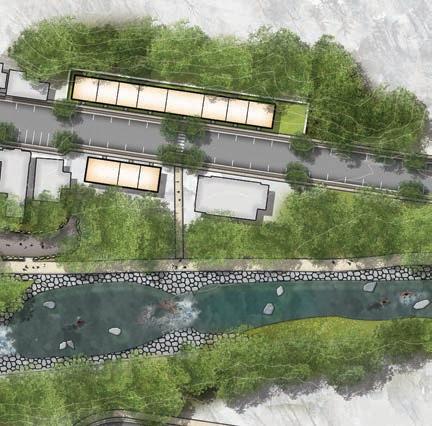



Existing Buildings
Proposed Buildings
Proposed Restrooms


















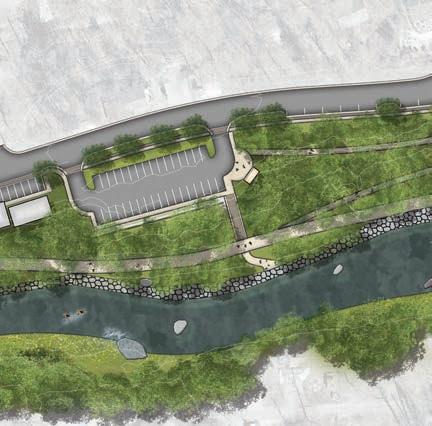

































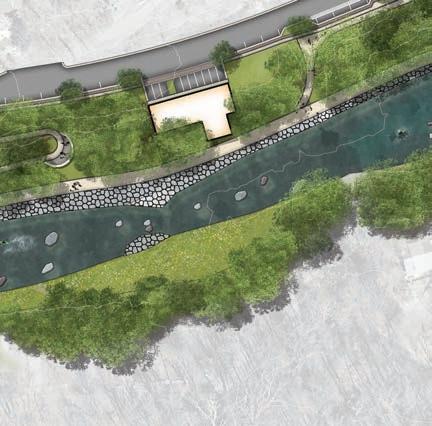





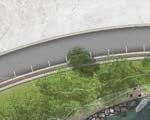



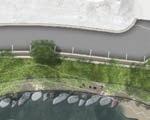



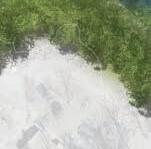














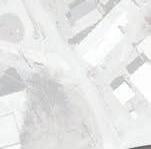



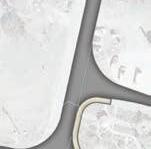




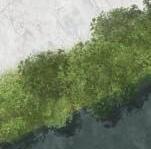






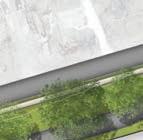
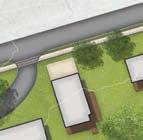


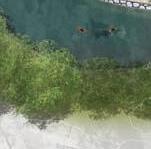








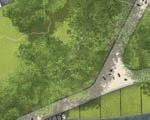
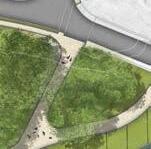


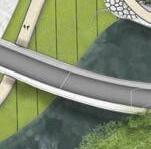
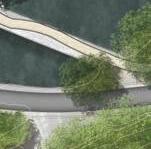






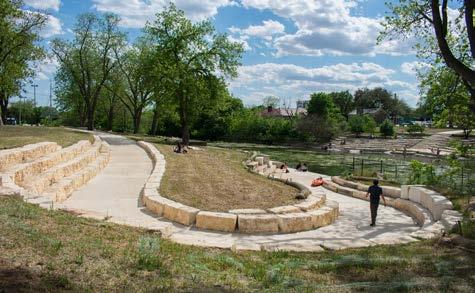


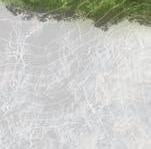

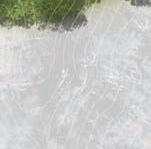






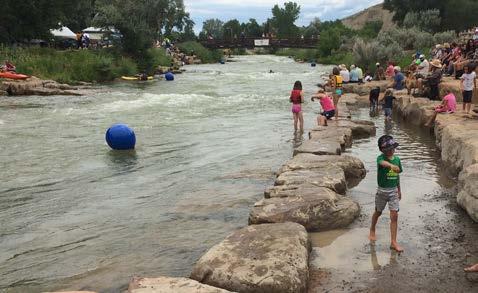




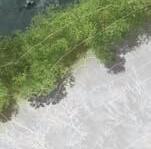



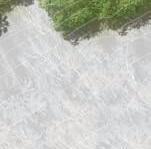
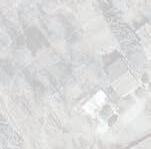


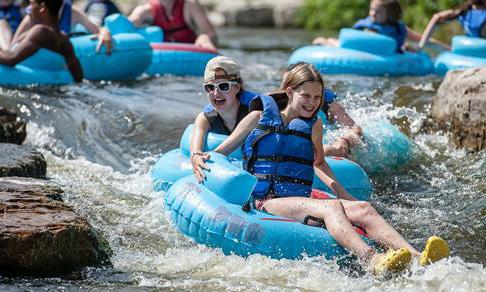



The Riverwalk Plaza and Recreation Area is a key recovery project designed to create a vibrant public space that enhances community life and supports the local tourism-driven economy. The project involves the development of a riverwalk and an adjacent recreation area along the Rocky Broad River to provide a welcoming space for residents and visitors to gather, relax, and enjoy the natural surroundings.
Work alongside NC State Park and other key stakeholders to integrate into the design improved river access locations that encourage safe and accessible river access for ALL. Design should encourage recreational activities such as fishing, tubing, and kayaking. By combining functional public space with a restored river, the Riverwalk Plaza and Recreation Area will serve as a dynamic hub for gatherings and outdoor recreation.
Partner with NC State Parks and other stakeholders to appropriately design and permit the project. Create functional gathering areas and explore locally operated concessions along the Rocky Broad
Riverwalk to activate the waterfront as a regional tourism destination, enrich the visitor experience, and support local businesses.
Develop access areas to encourage more use of the river and promote the area for outdoor recreation purposes.
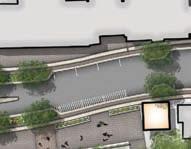
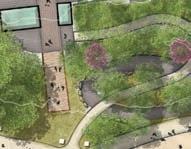



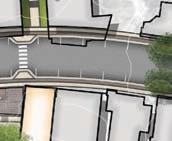












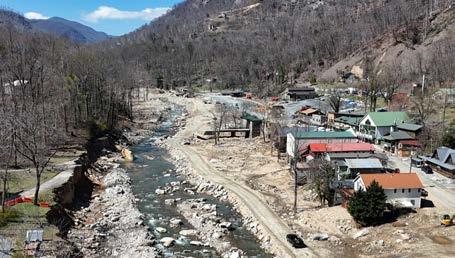


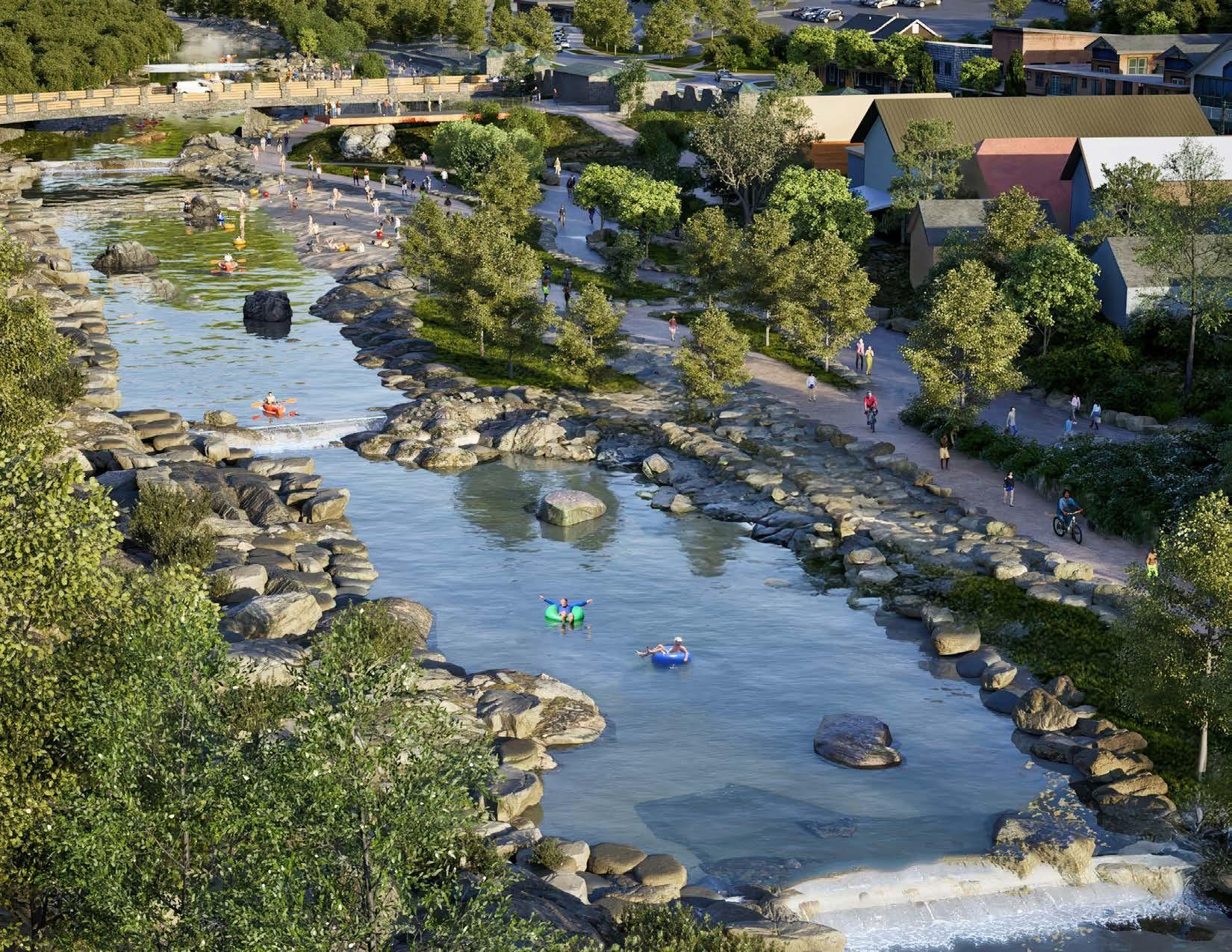
The Village Streetscape project is a vital recovery initiative focused on improving infrastructure, walkability, and the overall visitor experience in Chimney Rock Village. The project includes the installation of sidewalks and street furnishings, to create a more inviting and accessible pedestrian environment throughout the Village’s commercial district. In addition, the project will implement curb and gutter improvements to enhance stormwater management and help protect the area from future erosion and flood damage. A key feature of the project is the realignment of on-street parking to improve tra c flow, increase safety, and support local businesses by providing more e cient access for visitors. These elements will strengthen the Village’s physical infrastructure, boost tourism appeal, and contribute to long-term community success.
1.4.1
Design and implement streetscape improvements to include ADA compliant sidewalks, lighting, furnishings, street trees, landscaping, curb extensions, and crosswalks, all in accordance with previous streetscape projects.
1.4.2
Partner with stakeholders to plan and implement stormwater infrastructure improvements that align with recovery plans.
1.4.3 On-Street Parking Realignment.
Identify and implement on-street parking realignment opportunities as part of the broader recovery and infrastructure improvement e orts.
As part of the Raise the Rock Recovery Plan e orts, Chimney Rock Village was awarded $5.5 million in funding from the NC Department of Commerce to support critical streetscape recovery improvements. After numerous NC Commerce o cials visited the Village and attended public meetings held as part of the Raise the Rock planning e ort, this significant investment was secured to help the Village implement public capital projects that restore essential infrastructure, enhance community resilience, and lay the groundwork for long-term revitalization. These funds must be spent within three years, underscoring the importance of timely action and strategic implementation.
PROJECT 5: West Gateway Streetscape ($1 Million)



PROJECT 6: Streetscape Repair ($500,000)


PROJECT 2: East Gateway Streetscape ($1 Million)
PROJECT 1: East Gateway Retaining Wall ($1 Million)

PROJECT 4: Village Plaza ($1 Million)
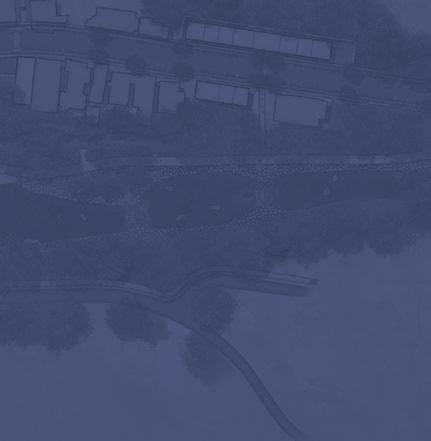
PROJECT 3: East Gateway Streetscape South ($ 1 Million)


The Village Plaza Square recovery project is focused on the restoration of a central community space to its pre-storm condition. This project will serve as both a symbolic and functional milestone in Chimney Rock Village’s recovery. This project aims to repair stormrelated damage, restore landscaping, and reinstate key features such as the paver plaza, seating area, and gathering space that was impacted by the disaster. By bringing the Plaza Square back to its original state, the Village not only preserves a cherished public space but also reinforces a sense of normalcy and continuity for residents and visitors alike. The restored plaza will once again serve as a hub for the community, support local commerce, and play an important role in the overall revitalization of the Village.
1.5.1 Restore Area to Pre-storm Conditions. Replace damaged and lost infrastructure facilities and repair hardscape surfaces to ensure safety and accessibility.
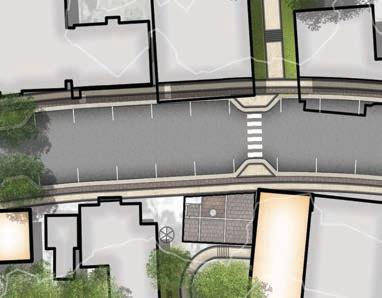




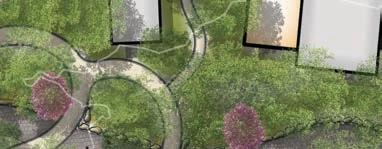







The Historic State Park Plaza and Overlook is a signature recovery project that blends community gathering, cultural heritage, and outdoor recreation access in a single, multifunctional space. Anchored by a pedestrian plaza and river overlook, the project will o er dramatic views of the Chimney Rock and Rocky Broad River. Key features proposed include Helene Memorial, public art installations, a gateway monument, and an overlook utilizing the remnants from the original Chimney Rock State Park entrance. This project is designed to celebrate the area's history and identity while enhancing the visual and heartfelt appeal of the site. The project will also include connectivity to the Riverwalk and the Hickory Nut Gorge State Trail, strengthen regional trail networks, and help promote eco-tourism. To support visitor needs, the site includes public restrooms, making it a fully accessible and functional destination for both residents and tourists. Ideally, these elements will establish the plaza as a landmark for reflection, recreation, and regional pride.
1.6.1 Pedestrian Plaza and River Overlook.
Develop a pedestrian plaza and overlook to create a vibrant public space that celebrates local heritage by repurposing the existing remnants of the historic gateway and bridge.
1.6.2
Install public art, such as plaques, murals, or interactive exhibits, that commemorates this historic event.
Identify, brand, and promote potential state trail segments within the Village and Chimney Rock State Park to support trail expansion and connectivity across the region.
In collaboration with local volunteer organizations and other stakeholders, support local plans and e orts to develop and manage public restrooms.




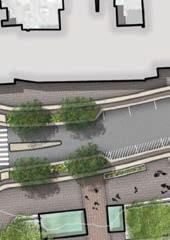




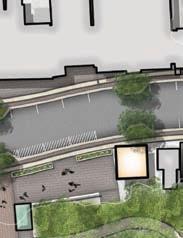



Exhibit 12: Proposed Traffic Circle and new State Park Entrance

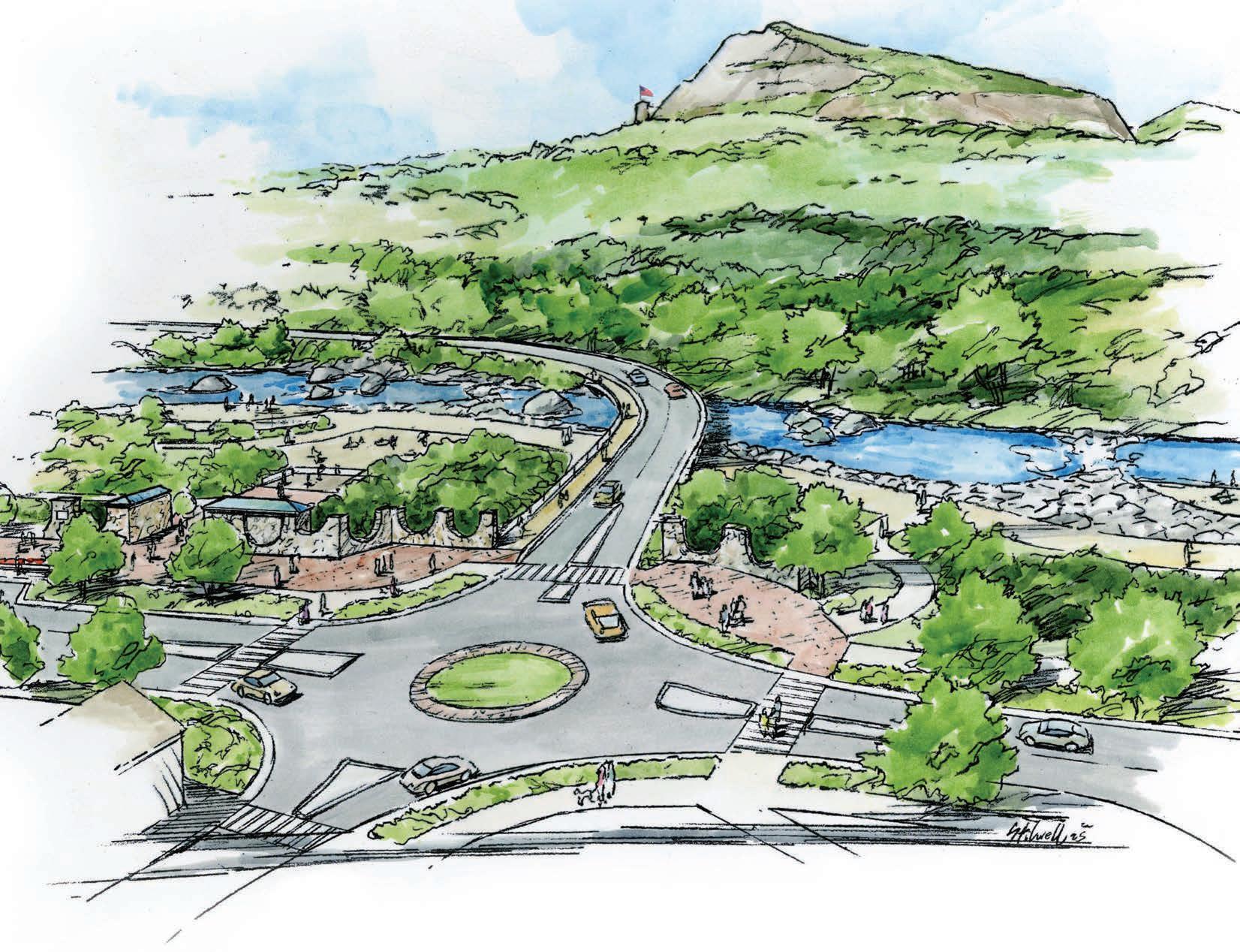
Project 1.7 The Gathering Place / Village Parking Lot / Hickory Nut Gorge State Trail Connector
The Gathering Place / Village Parking Lot / Hickory Nut Gorge State Trail Connector project is a multifaceted recovery e ort designed to enhance community space, trail access, and visitor infrastructure on Chimney Rock Village property. At its heart is the enhancement of the park and adding more flexible event space that can o er a welcoming area for public gatherings and cultural activities. The project also includes the restoration of the paid public parking lot to help manage increased tourism and to generate much-needed revenue. A key feature is the integration with the Hickory Nut Gorge State Trail, including a direct connection to the Boulders Trailhead to strengthen the Village as a regional gateway to outdoor recreation. To support visitor needs, public restrooms will be included to make the site a convenient and accessible hub for both tourists and trail users. This project not only supports community engagement but also contributes to long-term recovery.
Improve the existing park to enhance visual appeal and serve as a functional community event space.
1.7.2
Invest in repairs to the existing parking facilities to enhance the visitor experience, support local business activity, and reestablish a sustainable revenue stream.
Develop and enhance the existing trailhead to promote more use of the Boulders Trail and increase awareness of the Nickory Nut Gorge State Trail.
In collaboration with local volunteer organizations and other stakeholders, support local plans and e orts to develop and manage public restrooms.


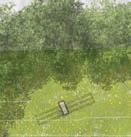
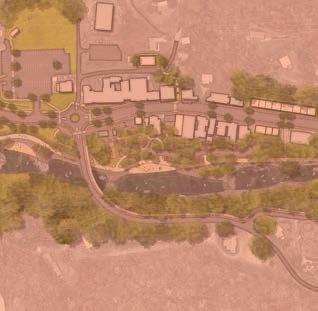




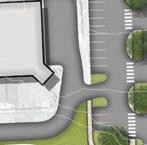

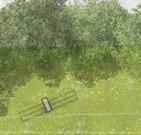





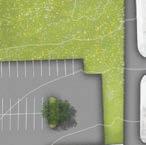




The Chimney Rock River Park project involves the redevelopment of the park area into a more resilient, accessible, and welcoming destination for both residents and visitors. Central to the project is Riverwalk connectivity, linking the park seamlessly to surrounding trails, public spaces, and the downtown area to support pedestrian access and outdoor recreation. Expanded river access will provide safe and convenient points for activities like fishing, kayaking, and tubing, further promoting the area’s outdoor tourism appeal. The plan also includes expanded public parking and restroom facilities, ensuring the park can comfortably accommodate increased visitor use while also supporting local businesses and events. These improvements will redevelop the River Park into a vibrant recreational asset that plays a key role in the area’s appeal and long-term recovery.
Revitalize the Village River Park to o er improved river access and a vibrant setting for outdoor recreation, with restrooms, ADA-compliant pathways, native plantings, and integrated links to the adjacent riverwalk.
1.8.2 River Access.
Develop access areas to encourage more use of the river and promote the area for outdoor recreation purposes.
Plan, implement, and prioritize public parking enhancements at the riverside park to improve access, safety, and user experience.






































The West End River Access project is a key recovery initiative aimed at providing public access to the Rocky Broad River and supporting the broader vision of an enhanced Riverwalk and Recreation Area for the region. This project focuses on the acquisition and development of a strategically located river access area that will serve as a welcoming entry point for beginner to intermediate paddlers. Action items include acquiring a suitable property with proximity to the proposed Riverwalk, constructing a functional and accessible river access area, and ensuring the availability of adequate public parking to support the anticipated use. Together, these e orts will activate a currently underutilized stretch of the river, enhance outdoor recreation opportunities, and provide meaningful access for both residents and visitors.
Identify and pursue the acquisition of property suitable for establishing a river access point that supports public recreation. Priority should be given to parcels that o er strategic proximity to the proposed riverwalk, are feasible for development as a
put-in location for beginner to intermediate paddlers, and can accommodate associated improvements such as adequate public parking.
Develop a river access point to encourage increased public use of the river and support the implementation of the Riverwalk and Recreation Area project. Serving as the western terminus—or put-in—for a beginner to intermediate paddling route, the site will
o er a convenient and accessible entry point near the Riverwalk and adjacent facilities. This access point will help activate the river corridor and broaden opportunities for both residents and visitors.
Ensure the planning and implementation of su cient public parking at the river access point to facilitate outdoor recreation and revitalize this underutilized stretch of the river corridor.
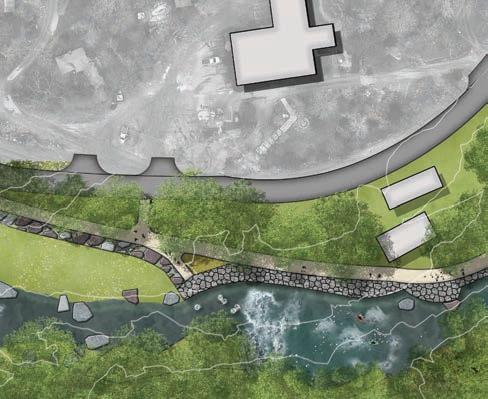




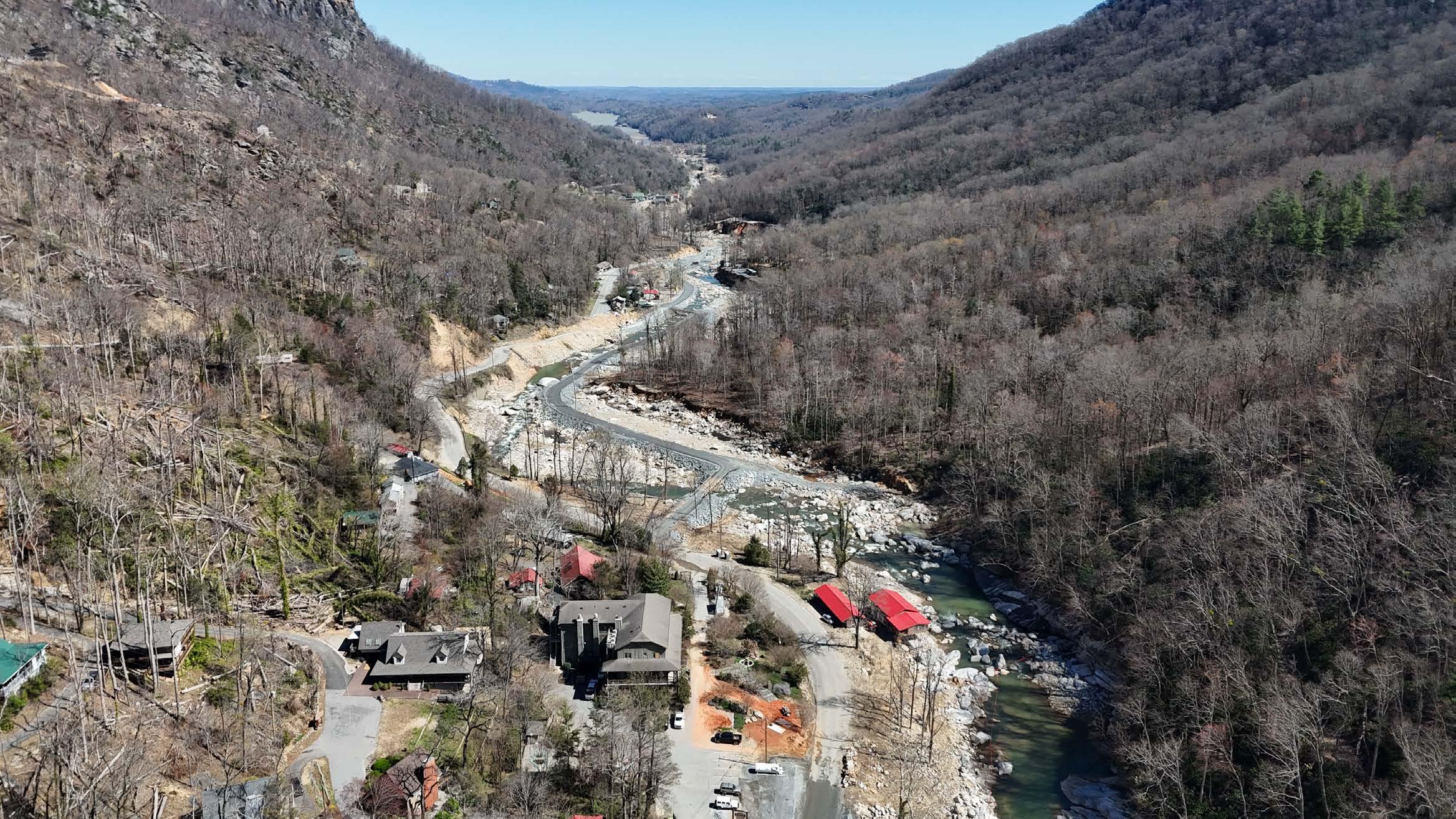

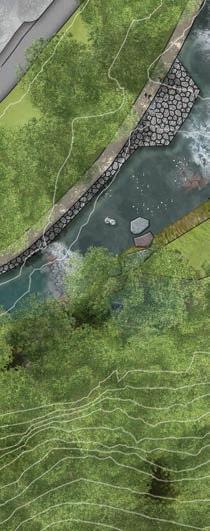



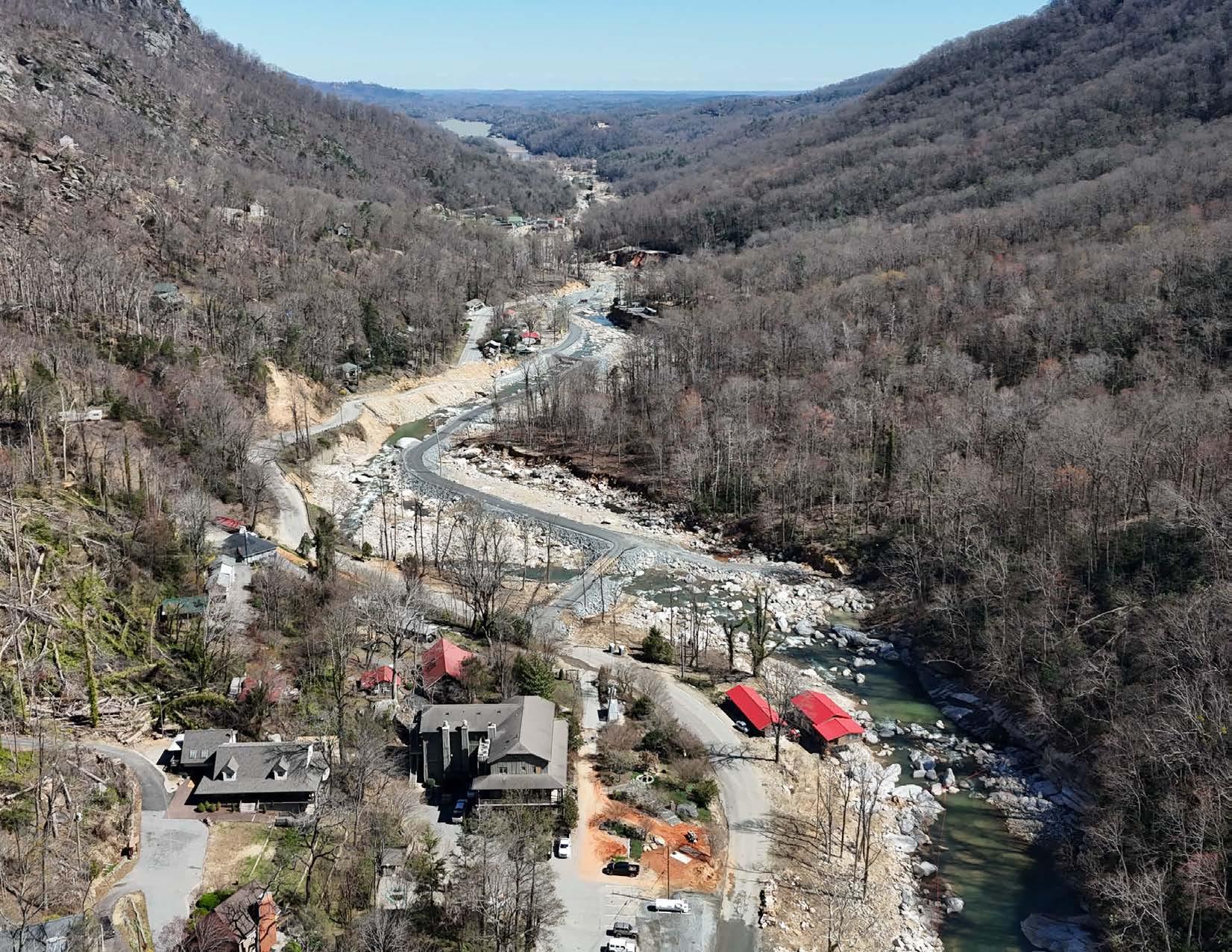

This project type prioritizes the infill development of two strategically located Village-owned properties that are well-suited for commercial uses. Potential developments include retail, mixed-use residential, boutique hotels, and other amenities designed to support and enhance the tourist economy. Positioned at key gateways to the downtown district, these projects aim to stimulate economic activity and help reestablish the Village’s identity as a vibrant and welcoming destination. In addition to promoting new residential and retail opportunities, the facilities will also provide potential relocation space for local businesses displaced by the recent events. The two projects in this category include the East Village Infill and the West Village Infill projects.

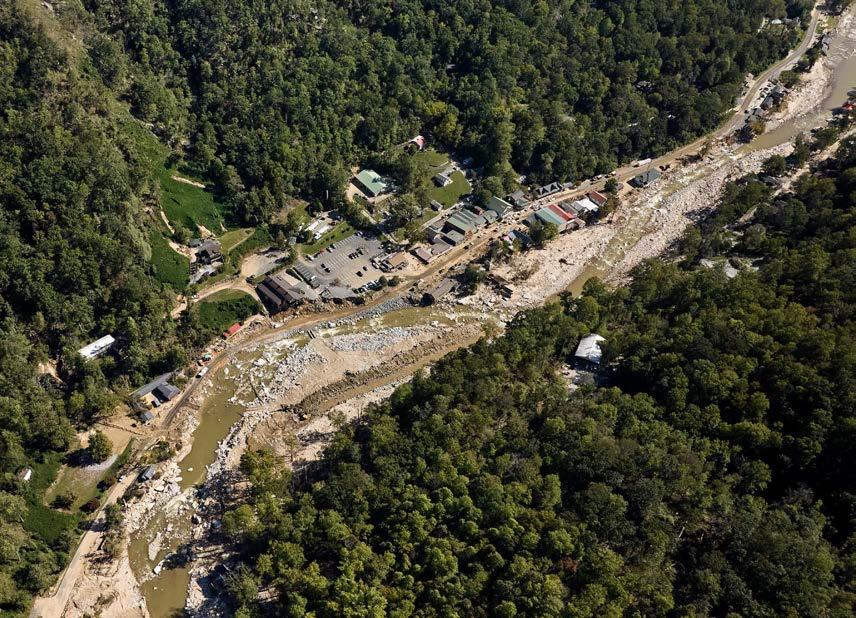

The West Village Infill project aims to revitalize a key 5.5-acre, Village-owned site through a commercial development aligned with Village Council priorities. This prominent property presents a prime opportunity to attract private investment, support small businesses, and strengthen the local economy. To advance the project, the Village should issue a formal Request for Proposals (RFP) to engage qualified developers and pursue a Development Agreement or Public-Private Partnership (PPP) defining responsibilities, incentives, and timelines.
A critical element for success is the inclusion of o -street public parking to support future commercial activity, improve access, and ease congestion on main corridors. The site may also house a small business incubator, o ering a ordable space and shared resources to foster entrepreneurship and economic resilience.
If current market conditions or developer interest are insu cient, the Village could consider interim use of the site for public parking and green infrastructure. This would address pressing community needs while preserving the site for future development.
2.1.1 Issue RFP for Mixed-Use Development and Enter into Development Agreement / Public-Private Partnership. Issue a formal RFP to attract qualified developers to design, finance, and construct a project that meets Village objectives. The RFP will include clear guidelines, development goals, and public benefit requirements. Upon selecting a development team, the Village will formalize a Development Agreement or PPP to define responsibilities, incentives, and timelines.
To accommodate increased visitation and downtown activity, the Village will develop o -street public parking for vehicles and service access. This will meet current and future demand, reduce congestion, and improve tra c flow and pedestrian safety. Design will address ADA compliance, signage, lighting, stormwater, and pedestrian connectivity to local businesses and infrastructure.

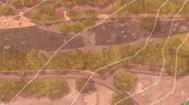




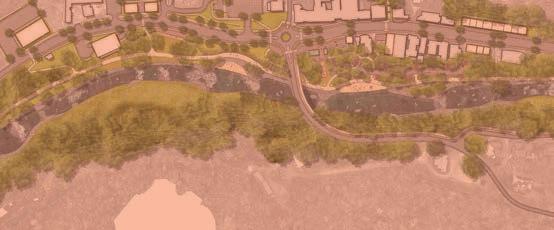

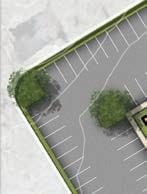











Positioned at a gateway into the Village Core, the East Village Infill project envisions new commercial development near the existing Post O ce. This site o ers a key opportunity to reestablish businesses displaced by Hurricane Helene and restore economic activity in the Village center. To advance the project, the Village should issue a Request for Proposals (RFP) to attract qualified developers and pursue a Development Agreement or Public-Private Partnership (PPP).
Public improvements—such as slope stabilization, a retaining wall, streetscape enhancements, on-street parking, and ADAaccessible restrooms—will improve site readiness and create an inviting environment for residents and visitors alike.
2.2.1 Issue RFP for Mixed-Use Development and Enter into Development Agreement / Public-Private Partnership.
The Village should issue a formal RFP to engage developers interested in commercial construction on this prominent site. A Development Agreement or PPP will outline roles, responsibilities, incentives, and timelines—ensuring alignment with community goals and minimizing Village risk.
2.2.2 Slope Stabilization / Retaining Wall.
Given the site’s terrain, slope stabilization and a retaining wall are essential to ensure safety, structural integrity, and protection of adjacent properties. These foundational improvements must precede vertical development.
2.2.3 Streetscape and On-Street Parking.
Sidewalks, lighting, landscaping, and other streetscape features will enhance walkability and reinforce district character.
On-street parking will support accessibility and encourage commercial activity.
2.2.4 Public Restrooms.
New, ADA-compliant public restrooms will fill a critical infrastructure gap, supporting tourism, community events, and increased foot tra c while making the area more accommodating for all users.




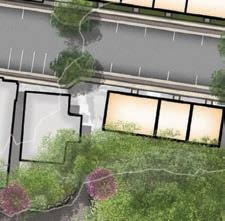


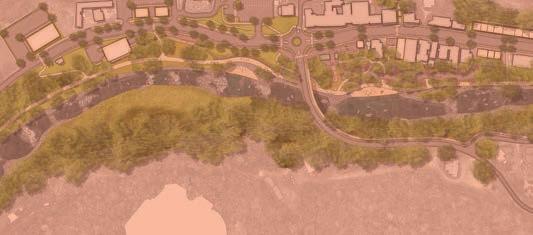





















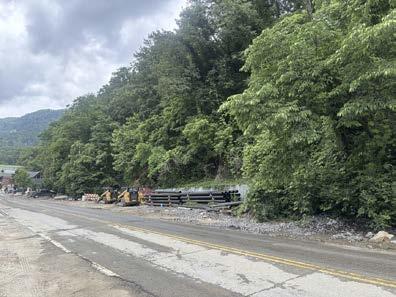









Type 3 Recovery Projects promote infill development opportunities on privately-owned properties within the Village Core that are well-positioned for commercial land use. Potential uses include retail, mixed-use residential, restaurants, and other visitor- and community-oriented businesses. These projects aim to help reactivate damaged and underutilized sites, attract private investment, and support the Village’s transformation back into a dynamic tourist destination. A key component of this effort involves identifying and collaborating with property owners who are motivated to rebuild and develop businesses that will contribute to a revitalized local tourism economy. Priority projects in this category include Riverside West, Main Street West, Main Street East, Terrace Drive Infill, Village Square Infill, and the Riverside Redevelopment Alternative Plan.
The Riverside West Recovery Project envisions the long-term commercial redevelopment of a highly visible site at the western edge of the downtown district. The concept includes a proposed retail, dining, or other commercial use(s) that support small business growth and economic revitalization. Given the site’s storm-related damage and erosion, substantial o -street parking and other infrastructure improvements will likely be necessary to ensure accessibility and functionality.
However, this area’s future development is closely tied to NCDOT’s ongoing road work and right-ofway improvements, as well as future discussions with adjacent landowners regarding development feasibility. As such, the Village should revisit this project once roadway plans are finalized and landowner willingness has been clearly established. This project represents a strong long-term opportunity to restore and reactivate a key location that can contribute meaningfully to the overall recovery of the Village Core.
Revisit plans for commercial development once NCDOT road improvements and landowner coordination are further advanced.
Plan for o -street parking and infrastructure needs to support potential redevelopment.

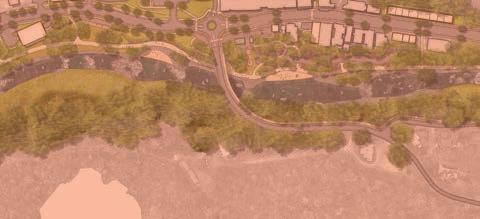









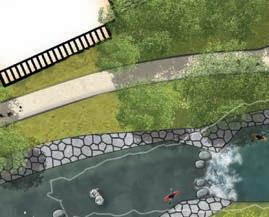


The Mainstreet West Recovery Project proposes the commercial redevelopment of the former Country Fair site—a highly visible and strategically located area comprising multiple parcels near the edge of the downtown district. The project envisions the development of up a commercial use designed to accommodate retail, dining, or other uses that foster local business growth and economic revitalization. To enhance site functionality and visitor access, the plan includes the integration of o -street parking.
Due to the site’s current parcel configuration and varied ownership status, it may also be a strong candidate for a land transfer or public-private partnership to streamline development and accelerate implementation.
3.2.1 Commercial Development.
This task involves the redevelopment of the former Country Fair site with a new commercial building.
3.2.2 Off-Street Parking.
O -street parking will be designed and constructed to serve the proposed development and alleviate parking constraints in the surrounding area. This will enhance accessibility for customers and visitors while supporting the long-term viability of the site.
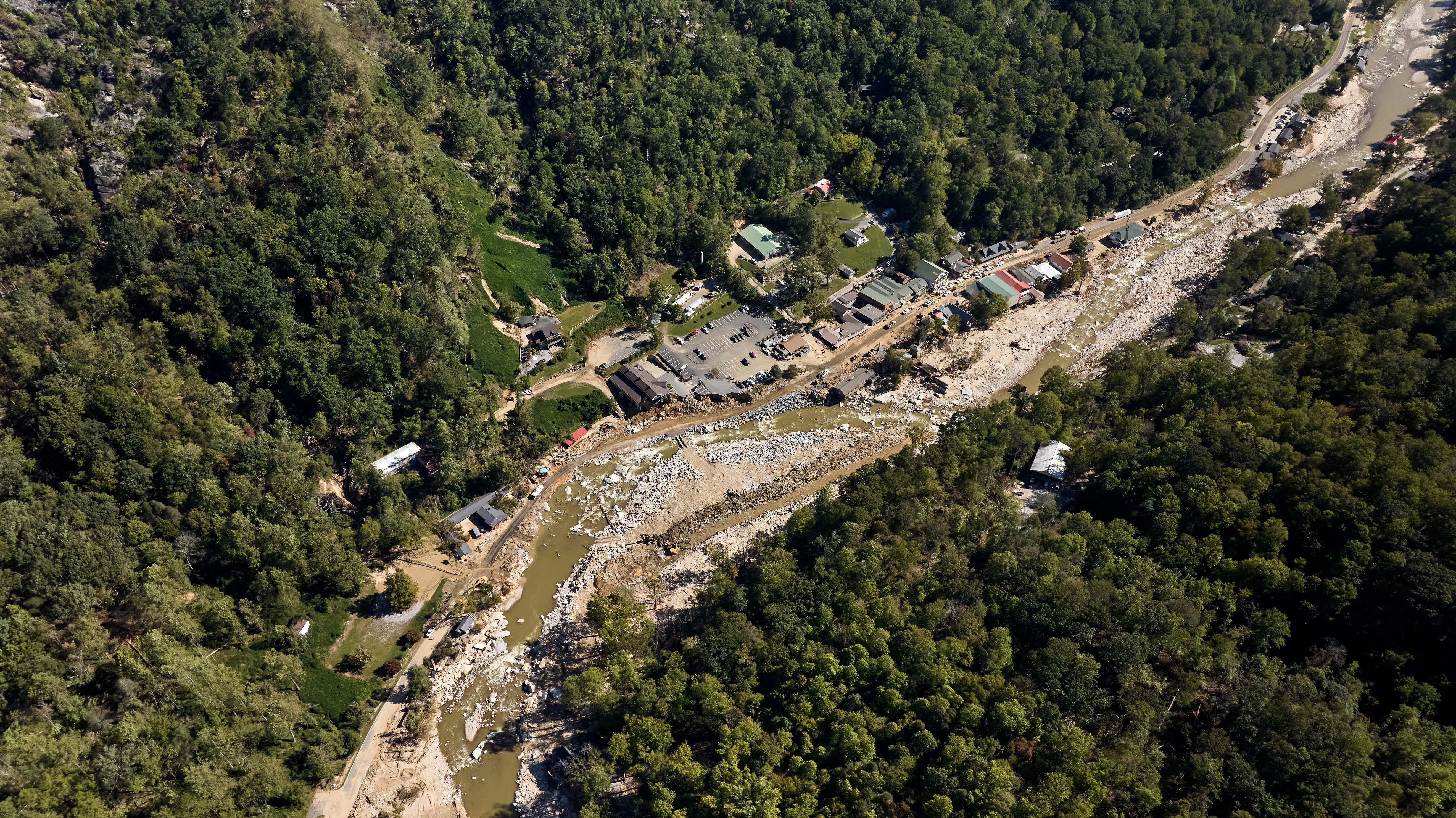

Main Street West: Proposed Private Infill

The Main Street East recovery project targets the revitalization of a prominent site within the Village Core through the development of a new commercial building designed to support retail activity and draw visitors back to Main Street. Notably, the return of the cherished Christmas Cottage to this location will serve as both a sentimental and economic anchor, reinforcing the corridor’s identity and charm.
This task entails constructing a new retail building that reactivates a key commercial site and welcomes the return of the locally beloved Christmas Cottage.
On-street parking will be added to improve accessibility, enhance the pedestrian experience, and support increased foot tra c for downtown businesses.
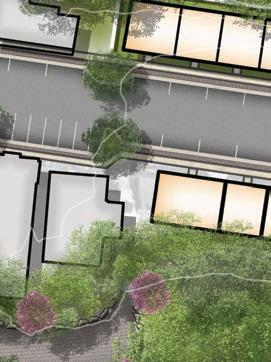

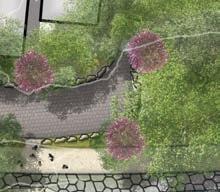
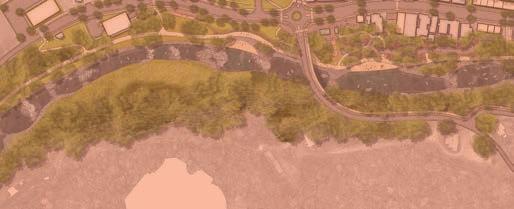









The Terrace Drive Infill recovery project proposes a development designed to accommodate a range of potential uses—such as commercial storefronts, boutique lodging, or small-scale residential units—that contribute to the vibrancy and long-term economic recovery of the Village Core. Located just steps from downtown, this project also includes a new pedestrian connection that links Terrace Drive directly to Main Street, enhancing walkability and supporting local businesses. By transforming an underutilized site, this infill project o ers a valuable opportunity to diversify land use and foster new economic activity in the heart of the Village.
3.4.1 Commercial Development.
This task includes the construction of a flexible-use facility that supports commercial, residential, or lodging opportunities to meet evolving community needs and activate a key infill site near downtown.
3.4.2 Terrace Drive Connector.
This task establishes a new pedestrian pathway to directly connect Terrace Drive with the Main Street corridor, improving access, walkability, and visibility for both new and existing businesses.


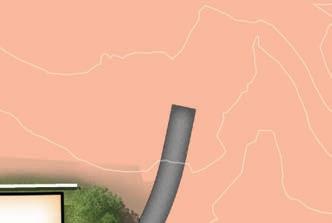



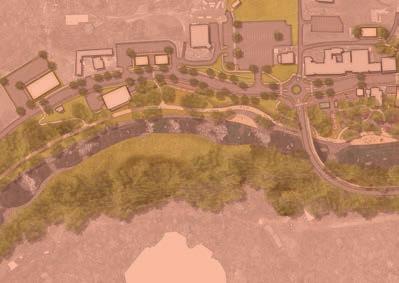








The Village Square Infill recovery project proposes the redevelopment of a 2,400-square-foot building footprint on the site of the former side portion of Bubba O’Leary’s General Store, which was destroyed by the storm. This location, situated along Main Street and directly adjacent to the Village Plaza, represents a prime opportunity to restore this cherished business in the heart of Chimney Rock Village.
3.5.1 Commercial Development.
This task includes constructing a new building on the footprint of the storm-damaged section of Bubba O’Leary’s General Store to accommodate a retail use that re-establishes the site’s commercial vitality.
3.5.2 On-Street Parking.
This task involves implementing on-street parking along Main Street to support the infill development, improve visitor access, and enhance connectivity within the Village Core.






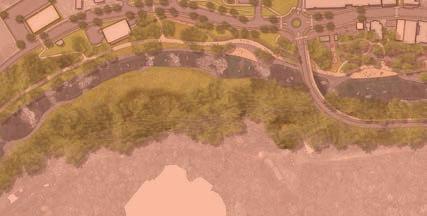

The Riverside Redevelopment concept explores the potential for coordinated commercial revitalization across several storm-damaged, individually owned parcels. While the vision includes up to five new structures to support retail and small business activity, there is significant uncertainty about the site’s overall feasibility. Severe erosion, topographic instability, and complex ownership patterns present major challenges. Substantial fill and engineering work may be required to make the area buildable. Given these constraints, FEMA acquisition or alternative nondevelopment strategies may ultimately be more viable. However, if feasible, the site o ers a high-visibility opportunity to reconnect the Village Core to the Riverwalk and strengthen downtown vibrancy.
Explore the feasibility of a multi-structure commercial development to restore economic activity in this location. Final design and implementation will depend heavily on site conditions, cost, and landowner coordination.
Assess opportunities to link the site to the Riverwalk with pedestrian infrastructure, contingent upon site stability and long-term viability of adjacent parcels.
Evaluate the need and possibility for on-street parking enhancements to support any future development on this site, balancing access with the site’s physical limitations.

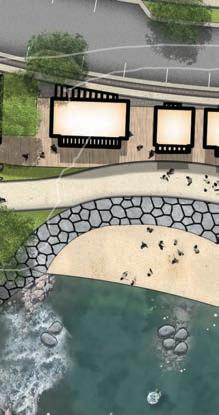
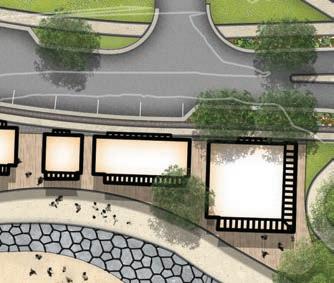


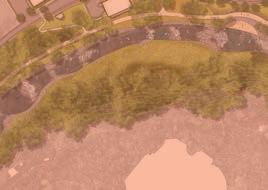





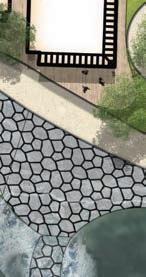


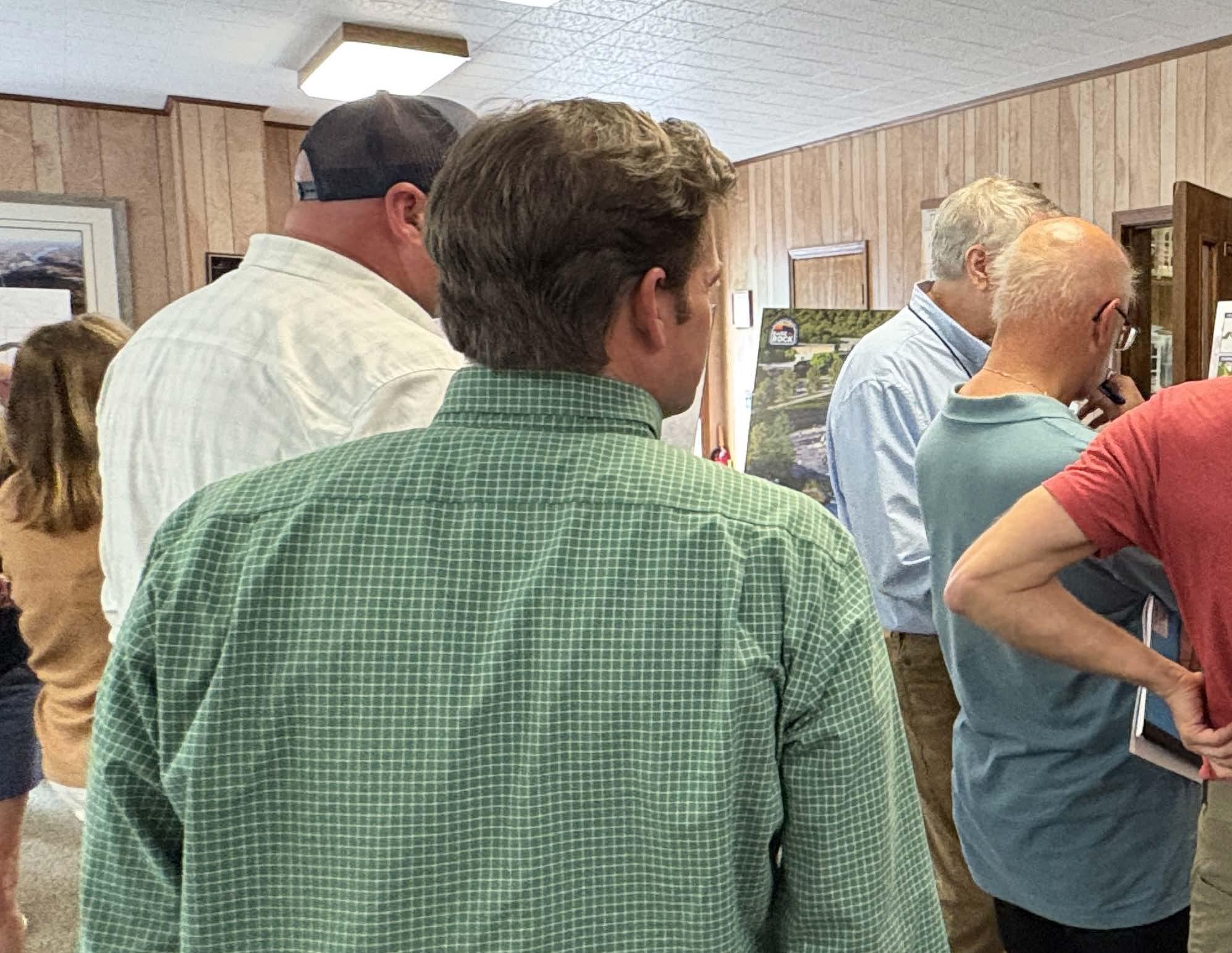
This chapter outlines general recommendations for implementing the Raise the Rock Recovery Action Plan, presents an implementation matrix summarizing all recovery projects, and highlights potential funding opportunities to support execution. This chapter is organized into the following sections:
In this Chapter
5.1 General Recommendations
5.2 Implementation Matrix
5.3 The “BIG 3” Priority Projects
5.4 Key Funding Opportunities



The recovery of Chimney Rock Village requires more than physical reconstruction; it demands a strategic framework that integrates policy innovation, organizational capacity, and cross-sector coordination. The recommendations that follow are grouped into five strategic action areas:
1. Economic Development & Tourism
2. Housing, Land Use & Community Character
3. Environmental Resilience & Infrastructure
4. Funding, Technical Assistance & Planning
5. Governance, Coordination & Capacity Building
These recommendations will influence recovery success and the strategies necessary for effective progress. From positioning the Village as a premier outdoor recreation destination to advancing workforce housing solutions, environmental restoration, and organizational growth, each recommendation supports a unified approach anchored by collaboration, coordinated investment, and a shared vision for the future.
• Think Outside, Stay Longer: A New Tourism Destination for Western North Carolina. Become the quintessential outdoor
recreation hub in the region by positioning Chimney Rock and the Hickory Nut Gorge Area as a premier destination for immersive, multi-day tourism. Focus on value-driven, placebased experiences that encourage longer stays and deeper engagement with local, natural, cultural, and recreational assets.
• Expect + Prepare for Growth: Have a Strategic Recovery Mindset. Anticipate and strategically prepare for growth to ensure effective and efficient recovery. Proactively plan land use, infrastructure, housing, and partnerships to manage increasing demand while preserving community character and natural resources.
• Demonstrate ROI and Impact: Drive long-term economic revitalization projects by demonstrating clear return on investment, community benefits, and positive results. Use datadriven tools, economic impact models, and case studies to quantify benefits of recovery projects, guiding resource allocation and attracting investment that supports place-based growth that is aligned with community values.
• Empower Small Businesses: Support the growth, adaptability, and success of small businesses to help improve the local economy. Develop a comprehensive small business support strategy that includes access to technical assistance, grant
and loan opportunities, mentorship, and disaster recovery resources. Foster local and regional partnerships to build a robust entrepreneurial business climate. Tailor support to the unique needs of rural, seasonal, and tourism-dependent enterprises.
• Pursue Public-Private Partnerships (PPP) & Development Agreements: Leverage Village-owned properties through strategic Public-Private Partnerships (PPPs) to advance recovery efforts and community priorities. Establish transparent, flexible development agreements for resilient recovery projects that align public and private goals, ensures accountability, protects community interests, maximizes investment, and enhances economic vitality and quality of life.
• Workforce Housing Strategy for Long-Term Recovery: Provide adequate workforce housing that supports essential workers and preserves community character. Develop community-driven, workforce housing through broad engagement and regional collaboration. Integrate housing with land use, infrastructure, and recovery planning. Encourage public-private partnerships and employer involvement to create innovative, scalable solutions, such as co-located developments and flexible housing models that meet seasonal and local needs.
• Old Village / New Town Character: Honoring Heritage, Shaping the Future. Balance preservation of historic “Old Village” character with innovative “New Town” projects to strengthen community identity and encourage new development opportunities. Use community engagement, and collaboration to integrate authentic heritage with modern needs, creating a cohesive, vibrant place that honors the past while embracing the future.
• Buyout and Acquisition Programs: Use buyout and acquisition programs judiciously to reduce risk, enhance resilience, and support community recovery. Coordinate transparent, equitable buyouts of high-risk properties aligned with hazard mitigation and recovery plans, leveraging federal funds to restore natural areas, expand amenities, and promote sustainable reuse that preserves community character.
• Landowner Outreach and Easement Acquisition: Build trust and secure permissions from landowners to enable recovery projects while respecting their interests. Conduct transparent, respectful outreach with clear communication and opportunities for input; use standardized right-of-entry agreements for access and negotiate easements for long-term resource protection, and integrate landowner engagement into recovery planning to foster cooperation and stewardship.
• Enhance Parking to Improve Access and Support Community Needs: Ensure parking facilities support long-term recovery, sustainable tourism, and local quality of life by providing safe, efficient, and context-sensitive parking solutions that align with community values and growth expectations. Conduct comprehensive parking assessments to evaluate current and future demand across peak and off-peak seasons. Use datadriven analysis to inform context-appropriate solutions such as shared parking and shuttle services. Engage stakeholders to develop flexible, low-impact parking strategies that support local commerce, reduce congestion, preserve natural and scenic resources, and enhance the visitor experience.
• Preliminary Engineering for River Restoration: Advance sustainable, resilient restoration of the Rocky Broad River by establishing a solid technical foundation through preliminary engineering. Conduct science-based assessments and preliminary designs that integrate ecological health and infrastructure resilience. Engage stakeholders to build trust and develop shovel-ready plans that align with funding and recovery goals.
• Engage River and Environmental Advocacy Groups: Engage river and environmental advocacy groups early to ensure collaborative, effective, and supported restoration efforts. Foster transparent, ongoing partnerships that leverage their expertise, outreach, and networks to align goals, build trust, and strengthen restoration outcomes as a shared community effort.
• Regional Sewer and Water Authority / Service District: Establish a regional sewer and water authority to ensure efficient, equitable, and sustainable water and wastewater infrastructure that supports long-term recovery and growth. Promote regional governance to pool resources, streamline planning, and align infrastructure with land use, environmental, and economic priorities. Establish an ownership and management framework to meet evolving demands and enhance funding opportunities, safeguarding water quality and levels of service.
• Technical Assistance and Grant Writing Strategy: Strengthen community capacity to secure and manage recovery funding by obtaining expert technical assistance and professional grant writing services. Obtain expert technical support and to help local partners develop competitive, resilience-focused proposals. Emphasize clear communication, compelling narratives, and alignment of funding sources. Maintain transparent reporting to build funder trust and sustain long-term investment in recovery initiatives.
• Long-Term Recovery Funding Strategy: Secure diverse, coordinated funding to sustain long-term recovery projects. Strategically pursue aligned public grants, philanthropic support, and corporate partnerships through coordinated efforts, clear project packaging, and consistent messaging to build lasting funding networks that advance shared recovery priorities.
• Long-Term Communications, Marketing, and Messaging: Establish a clear, consistent communications strategy that builds trust and unites stakeholders around long-term recovery. Use diverse, accessible channels to deliver tailored, value-driven messaging; coordinate partners for unified outreach; highlight progress and stories; and maintain dialogue to engage and adapt to community needs.
• Organizational Capacity Building: Build a dedicated, agile “Strike Force” to drive coordinated, effective, implementation of recovery projects. Establish a cross-sector team to lead collaboration, resource coordination, and problem-solving, to strengthen capacity, and accelerate action.
• Stakeholder Coordination: Foster inclusive, collaborative stakeholder coordination to ensure efficient, and aligned longterm recovery. Establish transparent communication channels and regular stakeholder forums that engage diverse groups, governments, landowners, businesses, volunteers, and subject matter experts, to leverage unique strengths and opportunities. Integrate coordination into the recovery framework to build trust, reduce duplication, and enable adaptive, community-driven solutions.
• Regional Collaboration: Strengthen regional alliances by fostering coordinated recovery efforts across jurisdictions. Establish formal collaboration frameworks to share resources, align priorities, and pool expertise. Promote joint planning, consistent messaging, and unified advocacy to maximize regional impact on infrastructure, housing, environment, and economic development.
• Interagency Recovery Coordination (IRC): Ensure efficient, unified recovery through highly coordinated interagency collaboration. Engage with Interagency Recovery Coordination (IRC) team to align resources, share information, and foster trust among local, state, federal, private, and nonprofit partners, to streamline effort, and prevent duplication for effective community recovery.
• Building Trust Through Transparency and Shared Solutions: Build trust and transform opposition to encourage collaboration through transparency and shared solutions to complex situations. Engage early with clear, open communication and dialogue to understand concerns. Offer responsive options and provide alternative solutions that demonstrate how recovery projects honor community values and encourage partnerships.
• Legislative and Political Advocacy: Secure strong legislative and political support to advance recovery projects, identify funding, and help shape official recovery policies. Engage elected officials through strategic advocacy, clear communication of community benefits, and coalition-building to mobilize broad support for investment and embed recovery priorities in legislative agendas.
The Implementation Matrix offers a clear and concise summary of all recovery projects described in the previous chapter. It is intended to serve as a practical tool to guide action and track progress throughout the recovery process. Organized around the Plan’s three Types of Recovery Projects, the matrix includes a total of 17 projects essential to Chimney Rock’s revitalization. For each project, the matrix includes suggested prioritization and a proposed implementation timeline to help local leaders, partners, and stakeholders align resources, coordinate efforts, and maintain momentum throughout the recovery process. This framework is designed to support informed decision-making and ensure strategic, phased advancement of the Village’s long-term recovery and development goals.
To help guide decision-makers and partners, the Implementation Matrix includes recommended timeframes for each action item. These timeframes provide realistic expectations for when projects, programs, and initiatives should be initiated or completed based on funding, capacity, and complexity. The following categories define short-term, medium-term, long-term, and ongoing actions.
Short-term actions are priority steps that can be initiated and completed within the next 1–2
years. These projects often build momentum, address immediate needs, and lay the groundwork for larger initiatives to follow.
Medium-term actions are initiatives that typically require more planning, coordination, and funding. These actions are expected to be implemented within a 3–5 year window and often build on the success of short-term efforts.
Long-term actions are more complex projects that may rely on phased funding, multi-
year partnerships, or larger infrastructure development. These are generally envisioned for implementation over a 6–10 year timeframe and represent transformative, lasting investments.
Ongoing actions include the continuous programs, policies, and operations that must be maintained throughout the lifespan of the plan. These efforts are essential to ensuring that initial investments continue to produce benefits and that community goals remain supported over time.
1.1:
1.1.1 Slope Stabilization and Re-vegetation. Support efforts to identify and manage priority areas for riverbank and slope stabilization as part of a collaborative river restoration plan.
1.1.2 River Channel Realignment for Resilience and Recreation. Support efforts to reestablish and realign the river channel as part of the recovery plan, with a focus on recreation and flood resilience.
1.1.3 Regional Collaboration. Establish a consistent river restoration plan throughout the region involving the Village, adjacent jurisdictions. affected landowners, advocacy groups, USACE, NCDOT, NCDEQ, and other stakeholders.
1.2.1 Riverwalk. Implement a multi-use greenway and connected trail system throughout the river corridor to enhance access to the river and expand pedestrian and bicycle mobility.
1.2.2 River Access. Develop access areas to encourage more use of the river and promote the area for outdoor recreation purposes.
1.2.3 HGST Connectivity. Support local plans and efforts to develop and manage the new riverwalk and have it designated as part of the Hickory Nut Gorge State Trail (HGST).
1.2.4 Regional Collaboration. Develop a consistent trail system throughout the river corridor involving the Village, adjacent jurisdictions, affected landowners, advocacy groups, USACE, NCDOT, NCDEQ, NCDPR, and other stakeholders.
1.3.1 Develop a Riverwalk Plaza and Recreation Area. Establish gathering areas and locally operated concessions along the Rocky Broad Riverwalk to activate the waterfront as a regional tourism destination, enrich the visitor experience, and support local businesses.
1.3.2 River Access. Develop access areas to encourage more use of the river and promote the area for outdoor recreation purposes.
1.4.1 Sidewalks & Street Furnishings. Design and implement streetscape improvements to include ADA compliant sidewalks, lighting, furnishings, street trees, landscaping, curb extensions, and crosswalks, all in accordance with previous streetscape projects.
1.4.2 Curb & Gutter / Stormwater Management. Partner with stakeholders to plan and implement stormwater infrastructure improvements that align with recovery plans.
1.4.3 On-Street Parking Realignment. Identify and implement on-street parking realignment opportunities as part of the broader recovery and infrastructure improvement efforts.
1.5: Village Square
1.5.1 Restore Area to Pre-storm Conditions. Replace damaged and lost infrastructure facilities and repair hardscape surfaces to ensure safety and accessibility.
1.6: Historic State Park Plaza & Overlook
1.6.1 Pedestrian Plaza and River Overlook. Develop a pedestrian plaza and overlook to create a vibrant public space that celebrates local heritage by repurposing the existing remnants of the historic gateway and bridge.
1.6.2 Helene Memorial / Public Art / Gateway Monument. Install public art, such as plaques, murals, or interactive exhibits, that commemorates this historic event.
1.6.3 Riverwalk and State Trail Connectivity. Identify, brand, and promote potential state trail segments within the Village and Chimney Rock State Park to support trail expansion and connectivity across the region.
1.6.4 Public Restrooms. In collaboration with local volunteer organizations and other stakeholders, support local plans and efforts to develop and manage public restrooms.
1.7: The Gathering Place / Village Parking Lot / HGST Connector
1.7.1 Pocket Park / Event Space. Improve the existing park to enhance visual appeal and serve as a functional community event space.
1.7.2 Paid Public Parking. Invest in repairs to the existing parking facilities to enhance the visitor experience, support local business activity, and reestablish a sustainable revenue stream.
1.7.3 HGST Conectivity / Boulders Trailhead. Develop and enhance the existing trailhead to promote more use of the Boulders Trail and increase awareness of the State Trail.
1.7.4 Public Restrooms. In collaboration with local volunteer organizations and other stakeholders, support local plans and efforts to develop and manage public restrooms.
1.8: Chimney Rock River Park
1.8.1 Redevelopment of the River Park. Revitalize the Village River Park to offer improved river access and a vibrant setting for outdoor recreation, with restrooms, ADA-compliant pathways, native plantings, and integrated links to the adjacent riverwalk.
1.8.2 River Access. Develop access areas to encourage more use of the river and promote the area for outdoor recreation purposes.
1.8.3 Public Parking. Plan, implement, and prioritize public parking enhancements at the riverside park to improve access, safety, and user experience.
1.9.1 Acquisition of Property Suitable for River Access. Identify and pursue the acquisition of property suitable for establishing a river access point that supports public recreation. Priority should be given to parcels that offer strategic proximity to the proposed riverwalk, are feasible for development as a put-in location for beginner to intermediate paddlers, and can accommodate associated improvements such as adequate public parking.
1.9.2 River Access. Develop a river access point to encourage increased public use of the river and support the implementation of the Riverwalk and Recreation Area project. Serving as the western terminus—or put-in—for a beginner to intermediate paddling route, the site will offer a convenient and accessible entry point near the Riverwalk and adjacent facilities. This access point will help activate the river corridor and broaden opportunities for both residents and visitors.
1.9.3 Public Parking. Ensure the planning and implementation of sufficient public parking at the river access point to facilitate outdoor recreation and revitalize this underutilized stretch of the river corridor.
Type 2. Village-Owned Commercial Infill Projects. Develop mixed-use facilities on Villageowned properties to provide relocation opportunities for displaced local businesses, as well as for new residential and retail opportunities.
2.1.1 Issue RFP for Mixed-Use Development and Enter into Development Agreement / Public-Private Partnership. Issue a formal RFP to attract qualified developers to design, finance, and construct a project that meets Village objectives. The RFP will include clear guidelines, development goals, and public benefit requirements. Upon selecting a development team, the Village will formalize a Development Agreement or PPP to define responsibilities, incentives, and timelines.
2.1.2 Off-Street Parking. To accommodate increased visitation and downtown activity, the Village will develop off-street public parking for vehicles and service access. This will meet current and future demand, reduce congestion, and improve traffic flow and pedestrian safety. Design will address ADA compliance, signage, lighting, stormwater, and pedestrian connectivity to local businesses and infrastructure.
2.2:
2.2.1 Issue RFP for Mixed-Use Development and Enter into Development Agreement / Public-Private Partnership. The Village should issue a formal RFP to engage developers interested in commercial construction on this prominent site. A Development Agreement or PPP will outline roles, responsibilities, incentives, and timelines—ensuring alignment with community goals and minimizing Village risk.
2.2.2 Slope Stabilization / Retaining Wall. Given the site’s terrain, slope stabilization and a retaining wall are essential to ensure safety, structural integrity, and protection of adjacent properties. These foundational improvements must precede vertical development.
2.2.3 Streetscape and On-Street Parking. Sidewalks, lighting, landscaping, and other streetscape features will enhance walkability and reinforce district character. Onstreet parking will support accessibility and encourage commercial activity.
2.2.4 Public Restrooms. New, ADA-compliant public restrooms will fill a critical infrastructure gap, supporting tourism, community events, and increased foot traffic while making the area more accommodating for all users.
Type 3. Privately-Owned Commercial Infill Projects. Identify and work with property owners who have the desire to rebuild and develop businesses to help revitalize the local tourism economy.
3.1: Riverside West
3.1.1 Commercial Development. Revisit plans for commercial development once NCDOT road improvements and landowner coordination are further advanced.
3.1.2 Off-Street Parking. Plan for off-street parking and infrastructure needs to support potential redevelopment.
3.2: Main Street West
3.2.1 Commercial Development. This task involves the redevelopment of the former Country Fair site with a new commercial building.
3.2.2 Off-Street Parking. Off-street parking will be designed and constructed to serve the proposed development and alleviate parking constraints in the surrounding area. This will enhance accessibility for customers and visitors while supporting the long-term viability of the site.
3.3: Main Street East
3.3.1 Commercial Development. This task entails constructing a new retail building that reactivates a key commercial site and welcomes the return of the locally beloved Christmas Cottage.
3.3.2 On-Street Parking. On-street parking will be added to improve accessibility, enhance the pedestrian experience, and support increased foot traffic for downtown businesses.
3.4: Terrace Drive Infill
3.4.1 Commercial Development. This task includes the construction of a flexible-use facility that supports commercial, residential, or lodging opportunities to meet evolving community needs and activate a key infill site near downtown.
3.4.2 Terrace Drive Connector. This task establishes a new pedestrian pathway to directly connect Terrace Drive with the Main Street corridor, improving access, walkability, and visibility for both new and existing businesses.
3.5: Village Square Infill
3.5.1 Commercial Development. This task includes constructing a new building on the footprint of the storm-damaged section of Bubba O’Leary’s General Store to accommodate a retail use that re-establish the site’s commercial vitality.
3.5.2 On-Street Parking. This task involves implementing on-street parking along Main Street to support the infill development, improve visitor access, and enhance connectivity within the Village Core.
3.6: Riverside Redevelopment - Alternative
3.6.1 Proposed Commercial Redevelopment. Explore the feasibility of a multi-structure commercial development to restore economic activity in this location. Final design and implementation will depend heavily on site conditions, cost, and landowner coordination.
3.6.2 Connectivity to Riverwalk. Assess opportunities to link the site to the Riverwalk with pedestrian infrastructure, contingent upon site stability and long-term viability of adjacent parcels.
3.6.3 On-Street Parking. Evaluate the need and possibility for on-street parking enhancements to support any future development on this site, balancing access with the site’s physical limitations.
At the time of this plan’s writing, vital infrastructure upgrades — including water and sewer improvements — are already underway, setting a foundation for economic recovery and strategic public and private investment. Building on this momentum, the Recovery Task Force has identified three flagship priority projects to drive early recovery and deliver the greatest long-term community impact. Selected for their potential to restore connectivity, enhance public spaces, and spark economic revitalization, these initiatives will serve as the backbone for rebuilding efforts and position Chimney Rock Village for a resilient future.
The Village Streetscape Improvements will create safe, functional, and visually appealing corridors that support walkability, encourage local spending, and strengthen the small business environment.
The River Restoration and Riverwalk will restore and protect the waterfront, expand public access, add much-needed recreational amenities, and strengthen the community’s identity as a vibrant destination for outdoor adventure.
The East Village Infill initiative will focus on redeveloping this key Village-owned tract to create new commercial opportunities that support the relocation of displaced local businesses and provide essential community services.
Together, these “BIG 3” priority projects build on the Village’s critical infrastructure progress and form the cornerstone of the initial recovery phase — laying a strong foundation for Chimney Rock Village’s next chapter as a connected, vibrant, and resilient community.
The scale of infrastructure investment required to implement the Raise the Rock Recovery Action Plan far exceeds the current operating capacity of Chimney Rock Village. To effectively support recovery and longterm revitalization, the Village must pursue a comprehensive fundraising strategy that engages state and federal partners, as well as private and philanthropic entities. Proactive outreach to relevant state and federal agencies will be essential to secure critical public funding that aligns with the plan’s priorities.
At the same time, successfully competing for grants and other funding opportunities will demand increased organizational capacity, expertise, and collaboration. The Village must expand its internal team and work closely with external partners such as regional nonprofits, foundations, and community stakeholders, to develop competitive proposals and manage awarded funds.
A wide range of potential funding sources are outlined here, including government programs, philanthropic foundations, and other potential sponsors. Each entity has been selected for its alignment with the goals of the Raise the Rock Recovery Action Plan. Additionally, individual and business contributions could play a vital role, particularly for projects that foster community pride and visibility. The Village Council should oversee and actively guide fundraising efforts, ensuring strong communication and relationship-building with funders. A strategic, sustained approach to fundraising is essential to turn the Plan’s vision into reality.
The Hazard Mitigation Grant Program (HMGP), administered by FEMA, provides funding to local governments to implement longterm hazard mitigation measures following a disaster. The program aims to reduce future loss of life and property by supporting projects such as floodplain management, infrastructure improvements, and property buyouts. In the aftermath of Hurricane Helene HMGP funding has been made available to eligible jurisdictions to support mitigation efforts in affected areas. This funding presents a vital opportunity to invest in local strategies that reduce long-term vulnerability to future storms and flooding events.
The FEMA Public Assistance (PA) Program provides essential federal funding to help local governments recover from major disasters by reimbursing the costs of emergency response and the repair, replacement, or restoration of public infrastructure. Eligible activities include debris removal, emergency protective measures, and the permanent restoration of damaged roads, bridges, utilities, public buildings, and other community facilities. In the aftermath of Hurricane Helene, PA funding has been activated to support response and recovery efforts, enabling local jurisdictions to stabilize operations, restore critical services, and rebuild essential infrastructure. The program also includes provisions for incorporating mitigation measures during repairs to reduce future disaster risk.
The Building Resilient Infrastructure and Communities (BRIC) program, administered by FEMA, is a nationally competitive, hazard mitigation program that supports local communities in developing projects that reduce risks from natural disasters and enhance community resilience. BRIC funding is available annually and emphasizes proactive investment in mitigation strategies. Key features include funding for large-scale infrastructure projects, capacity-building activities, and nature-based solutions that address risk reduction. In the wake of Hurricane Helene, communities affected by the storm are strongly encouraged to leverage BRIC funding to rebuild smarter and stronger, focusing on future risk reduction and long-term sustainability.
The Emergency Watershed Protection (EWP) Program, administered by the USDA’s Natural Resources Conservation Service (NRCS), helps communities address imminent threats to life and property caused by natural disasters such as floods and hurricanes. The program focuses on restoring watershed function and reducing future risk through projects like debris removal, streambank stabilization, erosion control, and repairing drainage facilities. In response to Hurricane Helene, NRCS has made EWP funding available to counties, with priority given to projects that protect critical infrastructure and restore natural hydrologic function. This program plays a crucial role in stabilizing landscapes, reducing flood risks, and supporting community recovery in the aftermath of a disaster.
The Economic Development Administration’s (EDA) Disaster Supplemental Grant Program provides strategic funding to help communities recover economically from natural disasters. EDA supports a wide range of recovery efforts including infrastructure rebuilding, business development, workforce training, and economic resiliency planning. Funding is available to local governments with a typical cost-share requirement that may be reduced for economically distressed areas. Following Hurricane Helene, EDA funds have been made available to support long-term economic recovery in impacted regions, focusing on restoring jobs, attracting investment, and building resilient local economies. The program emphasizes locally driven strategies and projects that foster innovation, equity, and sustainable growth.
The U.S. Army Corps of Engineers (USACE) Disaster Relief Supplemental Program plays a critical role in restoring and protecting infrastructure following major disasters like Hurricane Helene. In response to Helene’s widespread flooding and damage across Western North Carolina, USACE support has enabled emergency repairs, debris removal, and restoration of flood protection systems. In Helene-affected regions, priority is given to projects that stabilize critical infrastructure, reduce future flood risk, and restore water resource functionality. Funding may also support engineering assessments and long-term flood resilience planning.
The North Carolina Housing and Urban Development (HUD) Action Plan and CDBG-DR program allocates approximately $1.43 billion in Community Development Block Grant–Disaster Recovery (CDBG-DR) funds to support long-term rebuilding following Hurricane Helene. Administered by the NC Department of Commerce’s new Division of Community Revitalization (DCR), the plan prioritizes unmet needs in the most impacted and distressed (MID) counties, dedicating funds to reconstruction, with substantial allocations for owner-occupied and rental housing, infrastructure improvements, and economic revitalization.
The North Carolina Small Business Infrastructure Grant Program (SmBIZ), administered by the NC Department of Commerce’s Rural Economic Development Division (REDD), is a state-funded initiative specifically designed to support small business recovery following Hurricane Helene. Backed by a $55 million allocation from the NC Disaster Recovery Act of 2025, the program offers support to restore critical public infrastructure that small businesses rely upon, such as water, sewer, gas, broadband, sidewalks, and utility systems. Administered in partnership with local governments, the SmBIZ program emphasizes the timely rebuilding of essential infrastructure to facilitate and enhance access to business districts and help attract private investment.
The WNC Community Foundation’s Emergency and Disaster Response Fund (EDRF) was activated in the aftermath of Hurricane Helene to provide both immediate relief and long-term recovery support to nonprofits and community organizations. The fund supports a wide range of recovery efforts, including strategic investments in infrastructure and planning. Through flexible grantmaking and targeted capacity-building assistance, the EDRF will play a critical role in complementing state and federal recovery programs and advancing resilient rebuilding across Western North Carolina.
Collaboration & Innovation Grants offered through the Dogwood Health Trust support collaborative initiatives in Western North Carolina that are facing the complex challenges of recovery and rebuilding in the wake of Hurricane Helene. These grants are awarded to organizations acting as lead applicants on behalf of local coalitions working across key recovery sectors such as housing, health, and economic development. Funded projects are designed to foster cross-sector coordination, prioritize community-led solutions, and promote long-term recovery efforts that align with regional and strategic recovery goals.
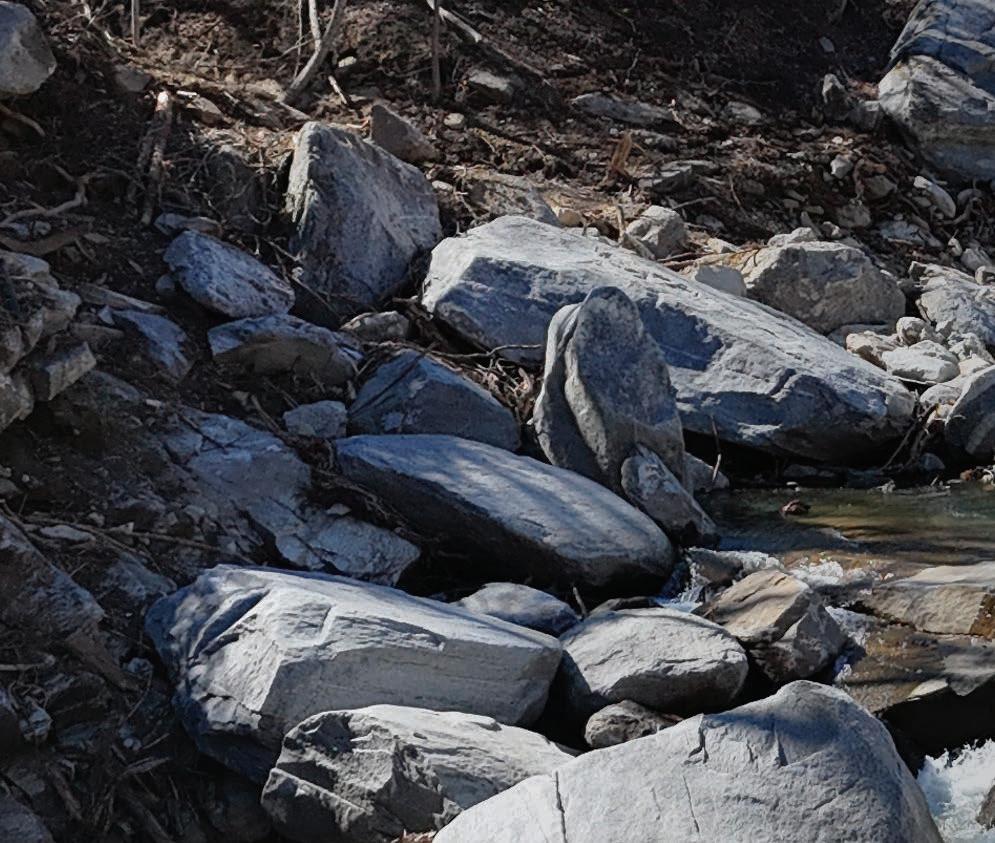
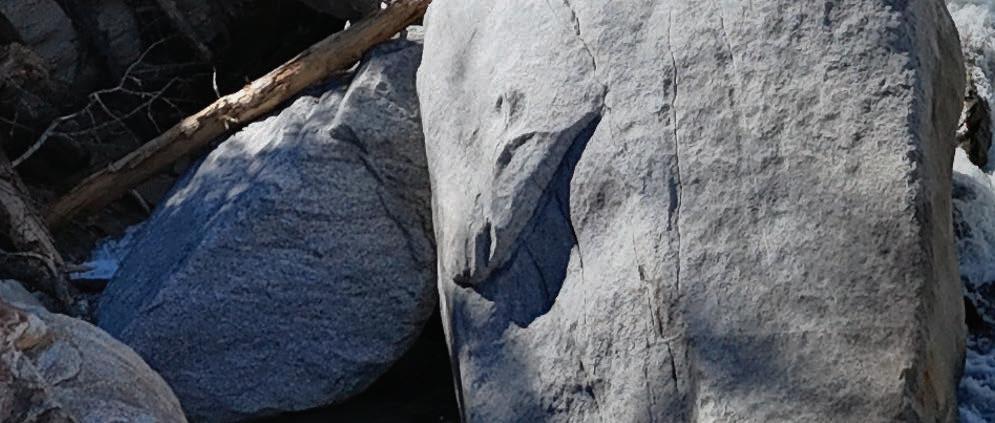
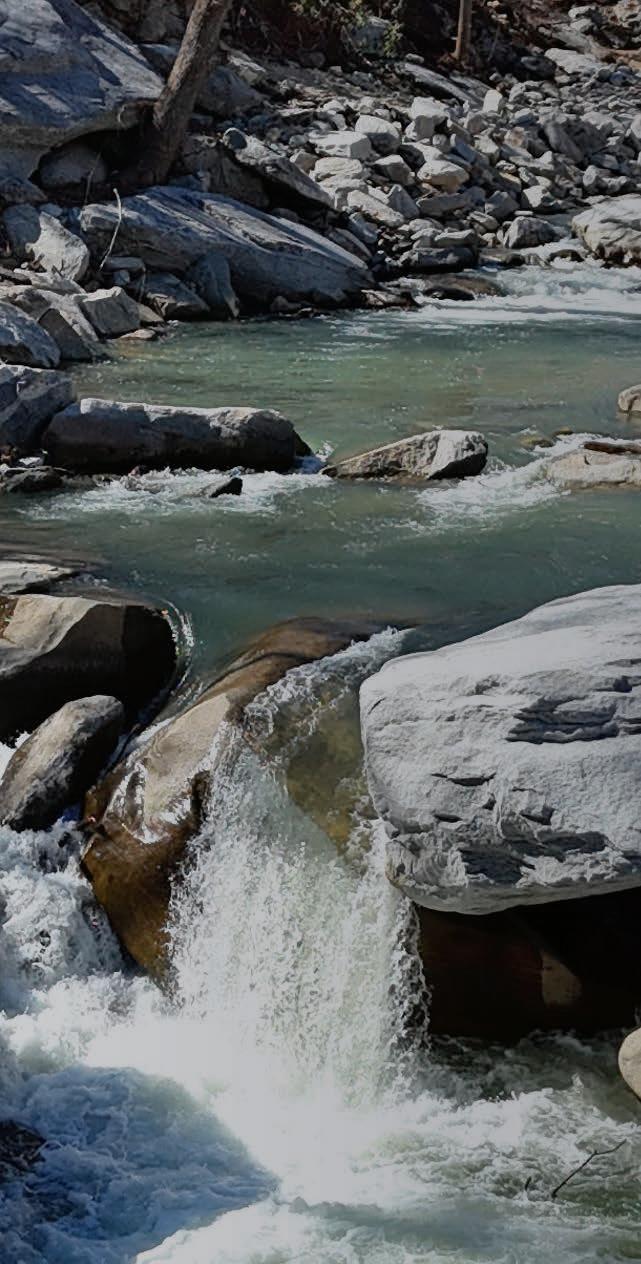

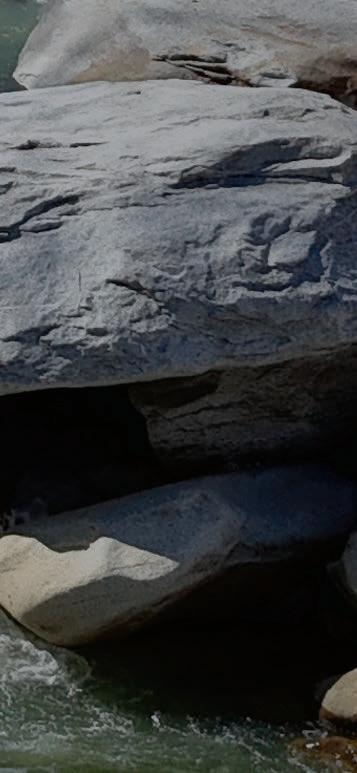

In any moment of decision, the best thing you can do is the right thing, the next best thing is the wrong thing, and the worst thing you can do is nothing.
~ Theodore Roosevelt “ “

